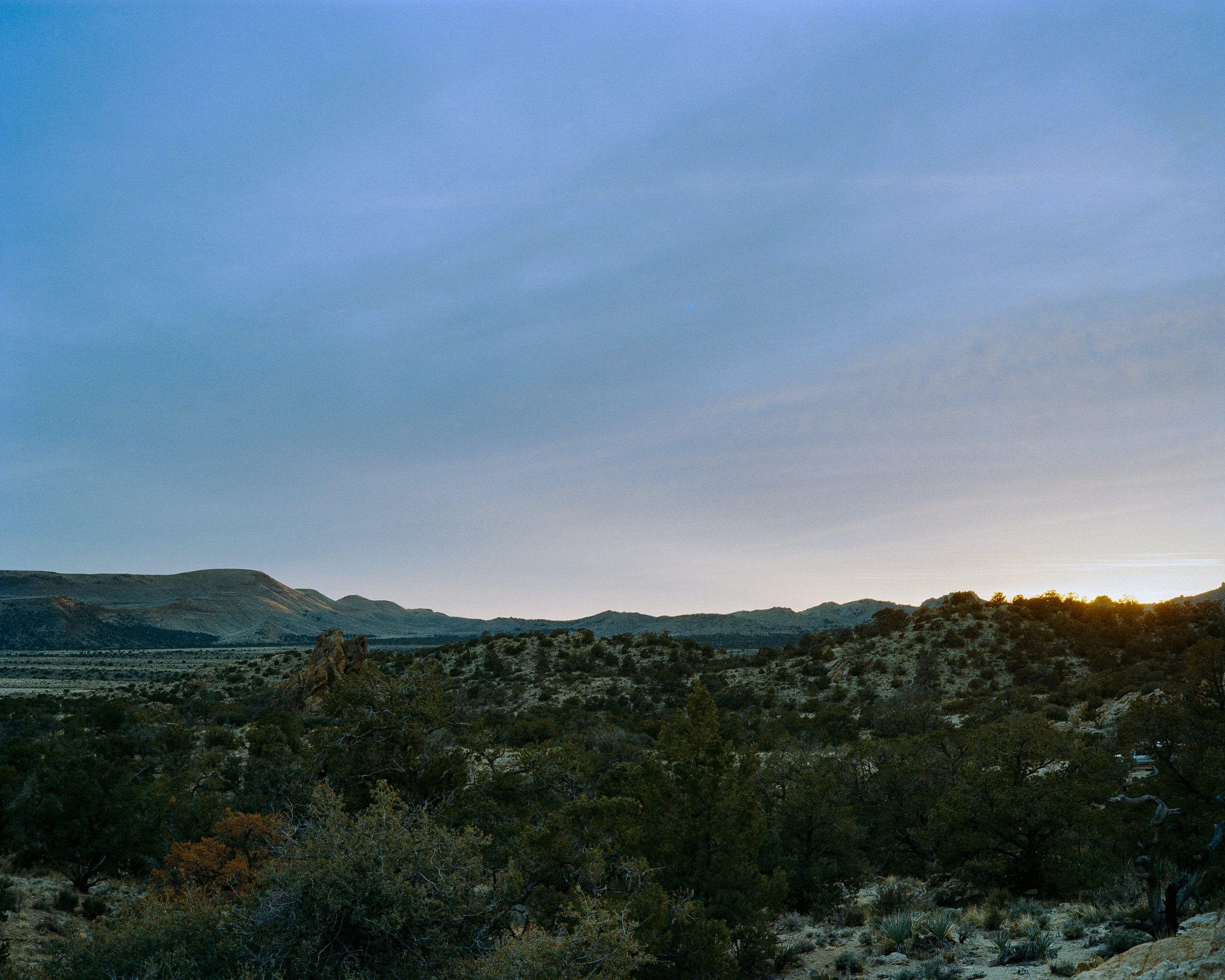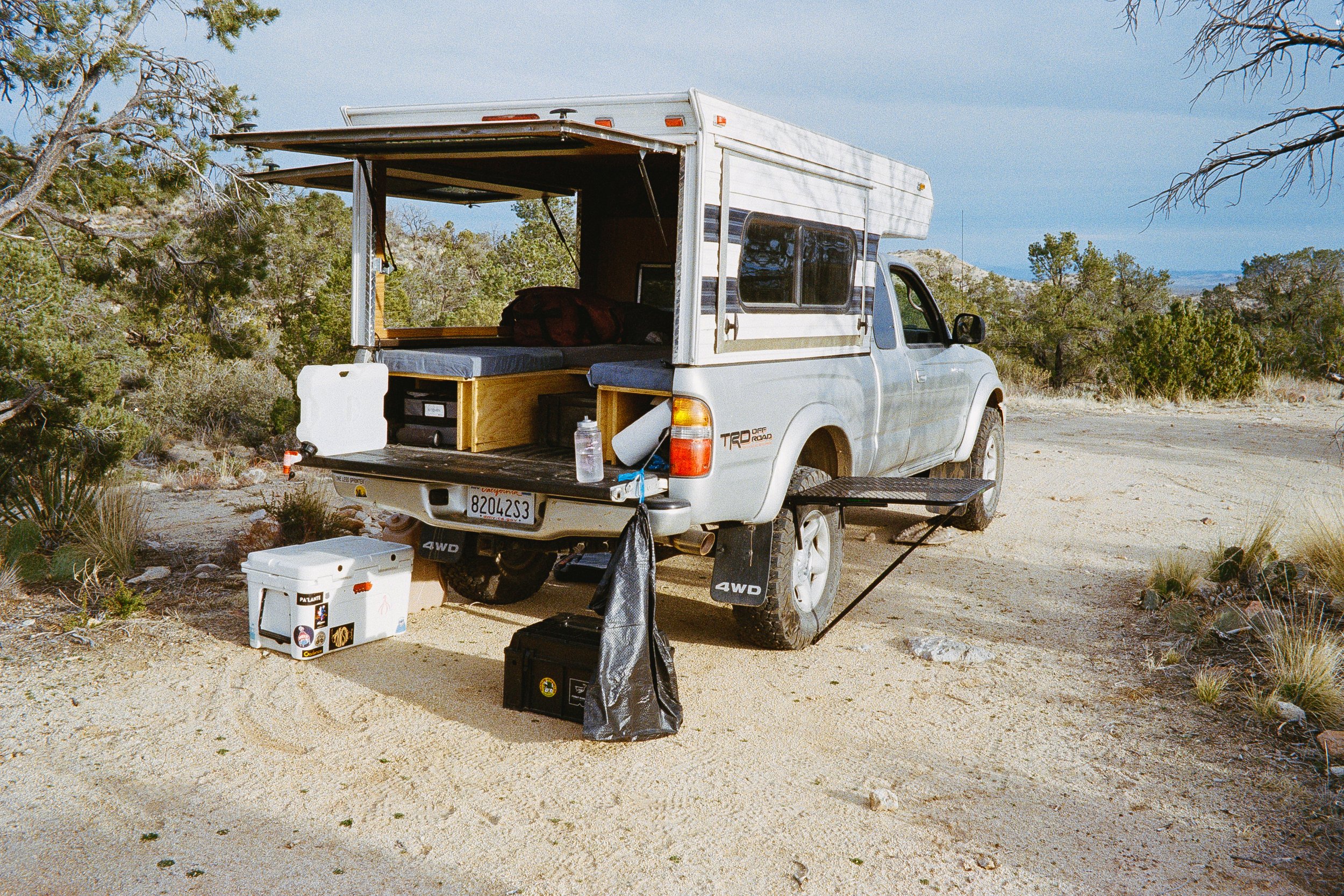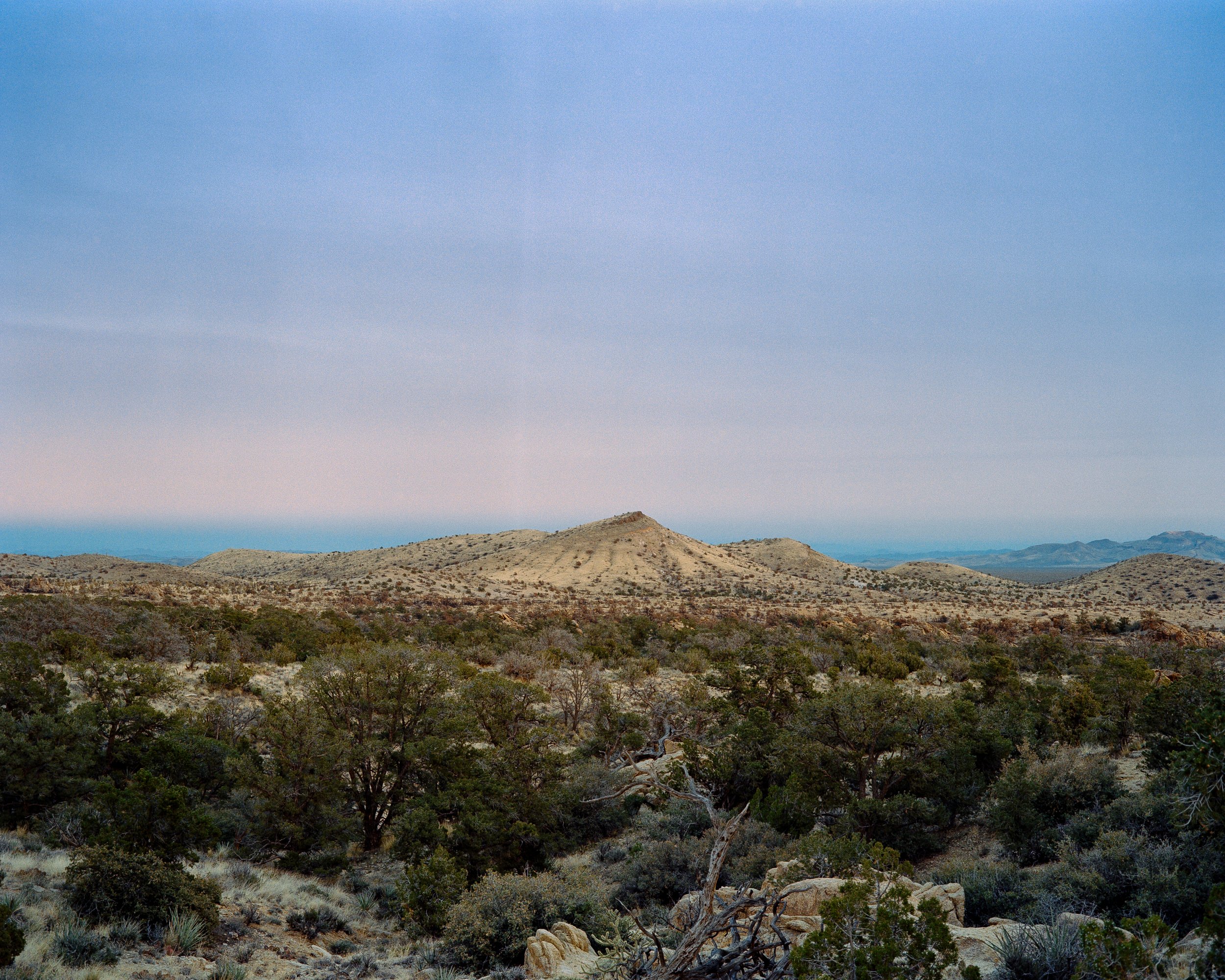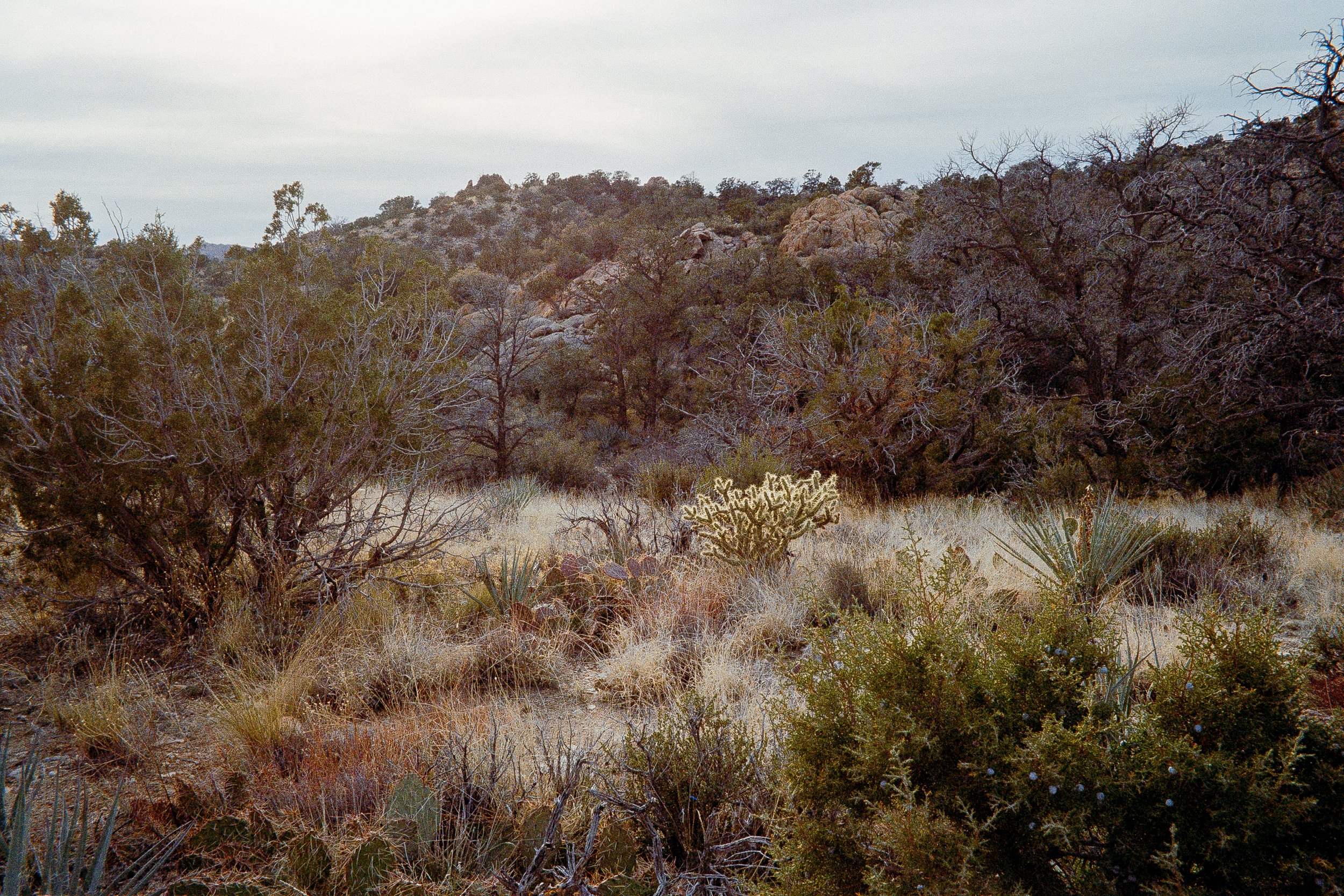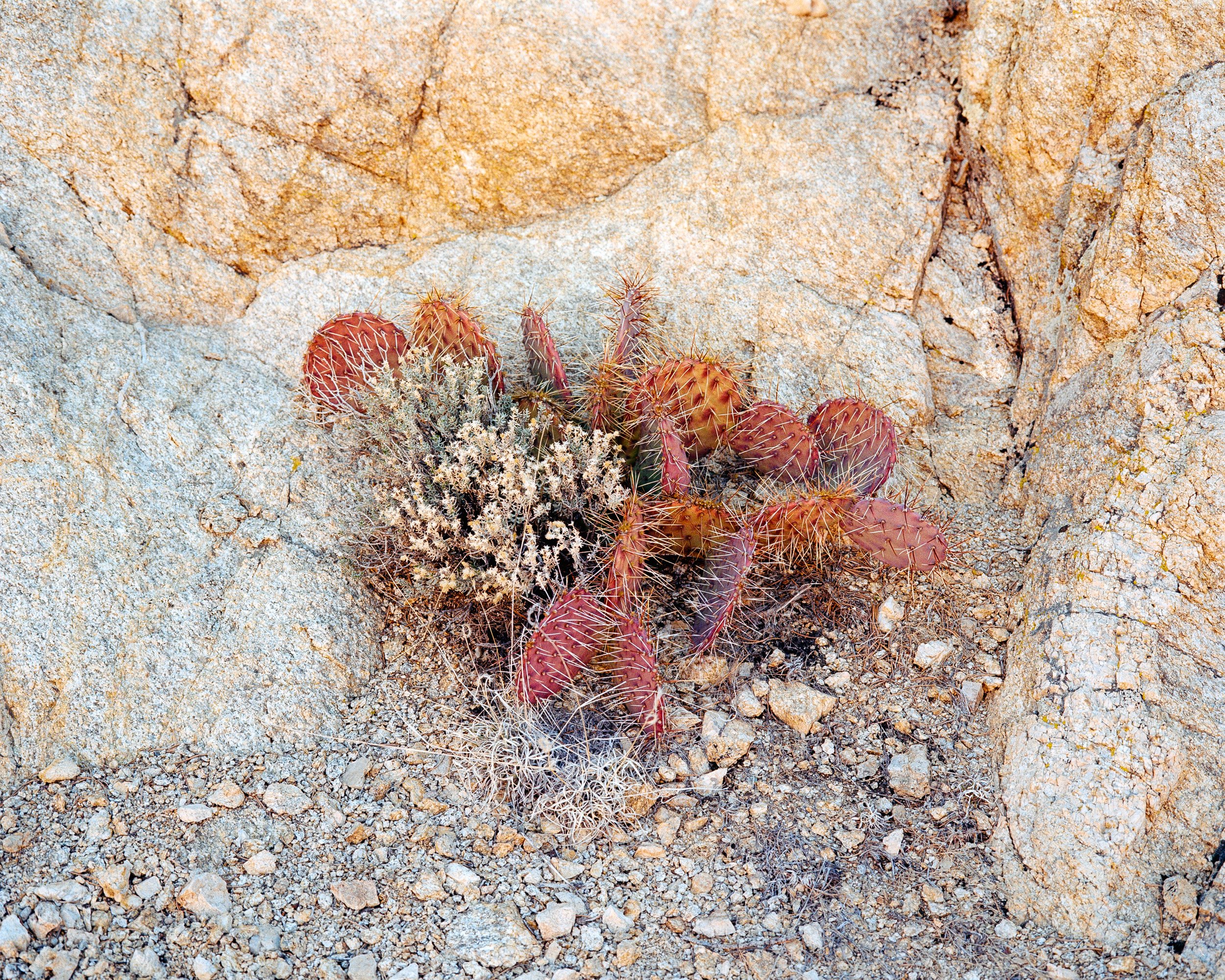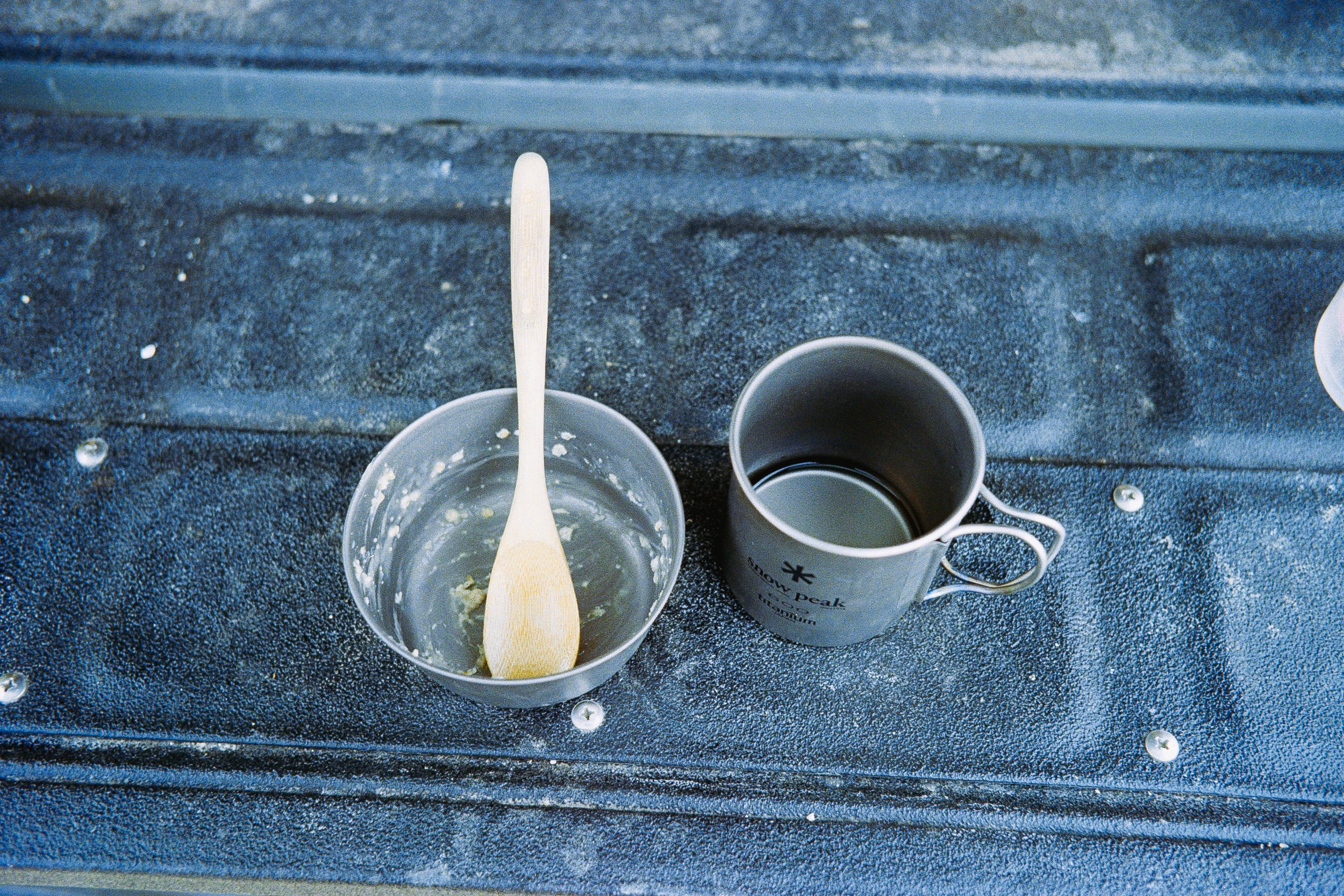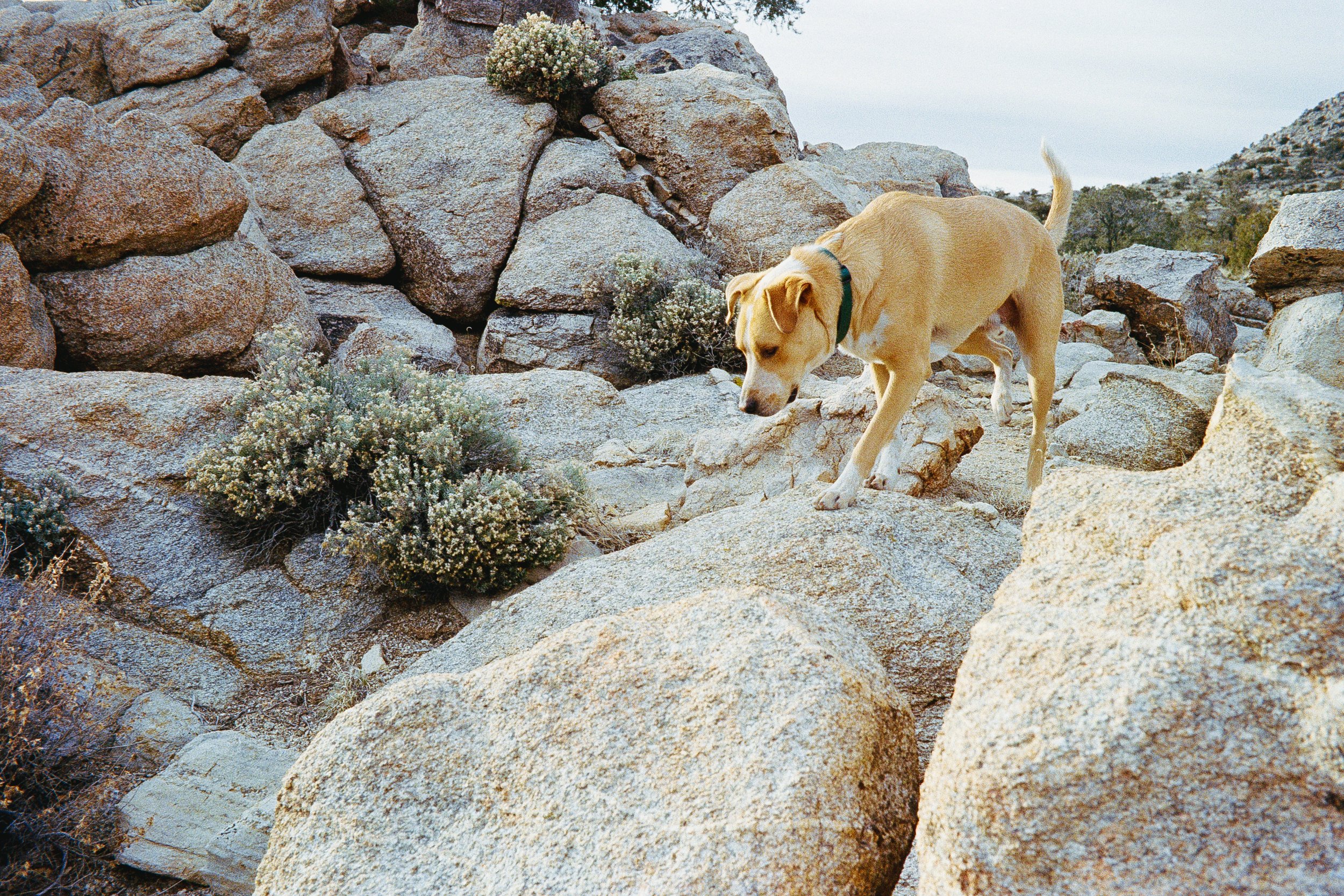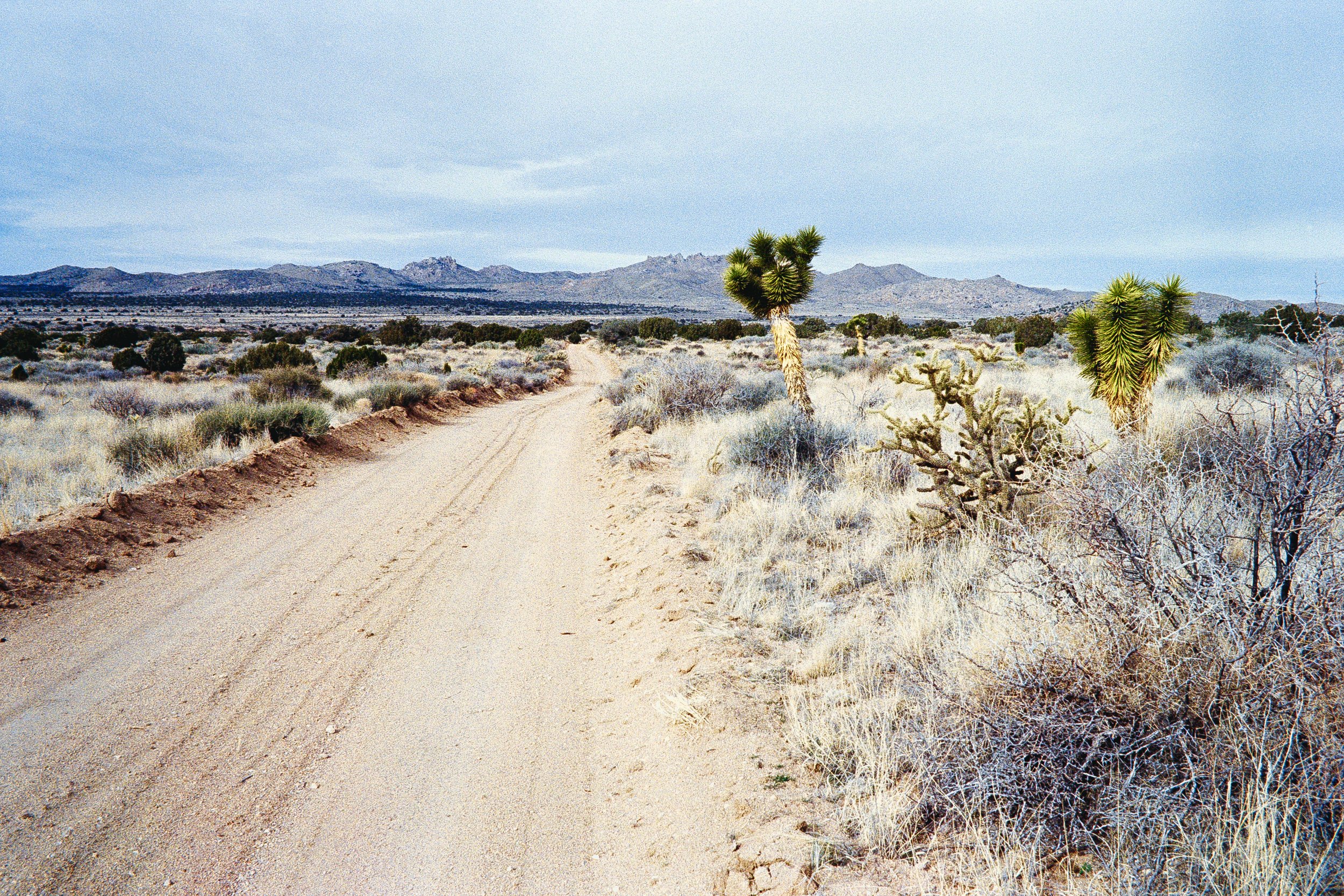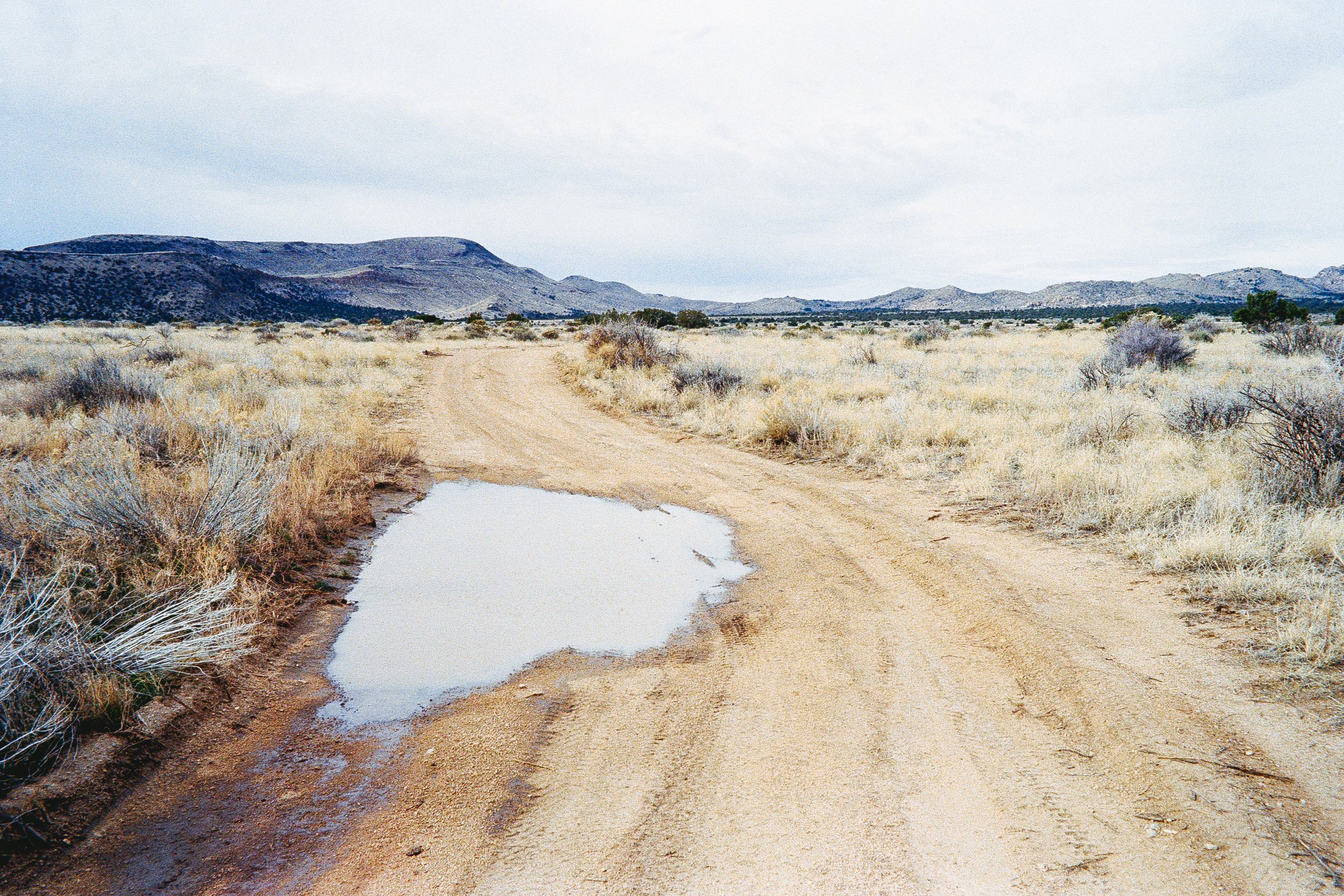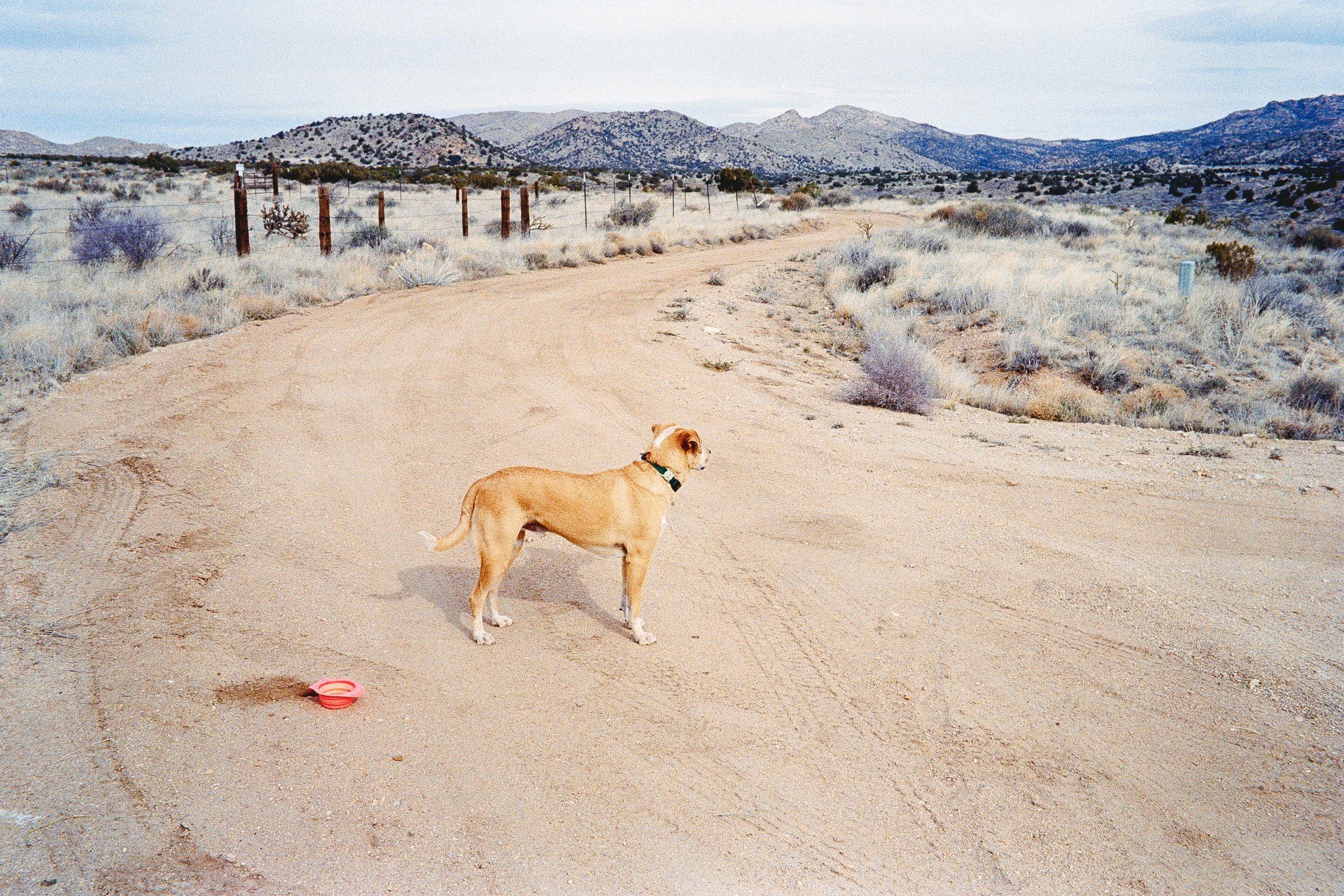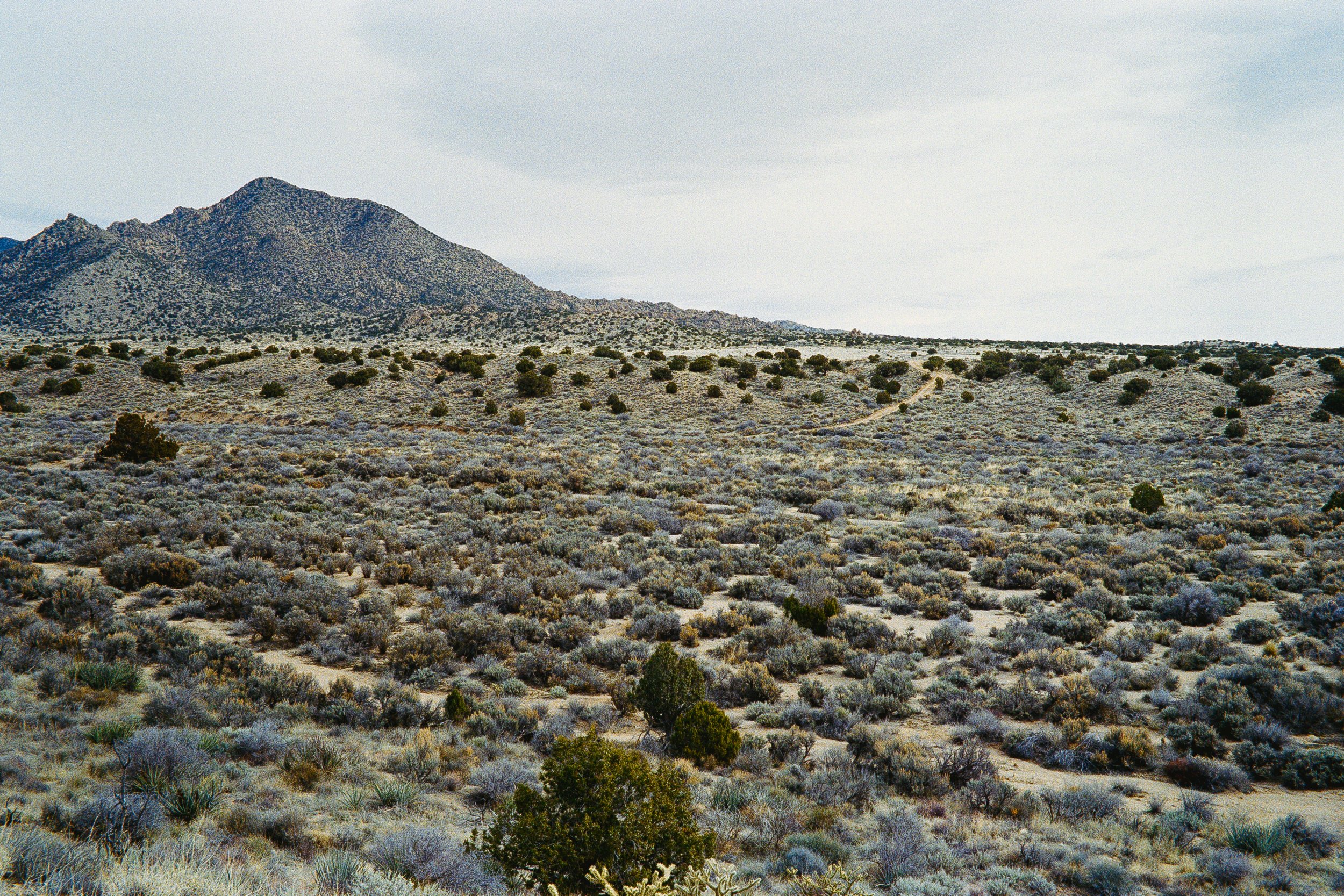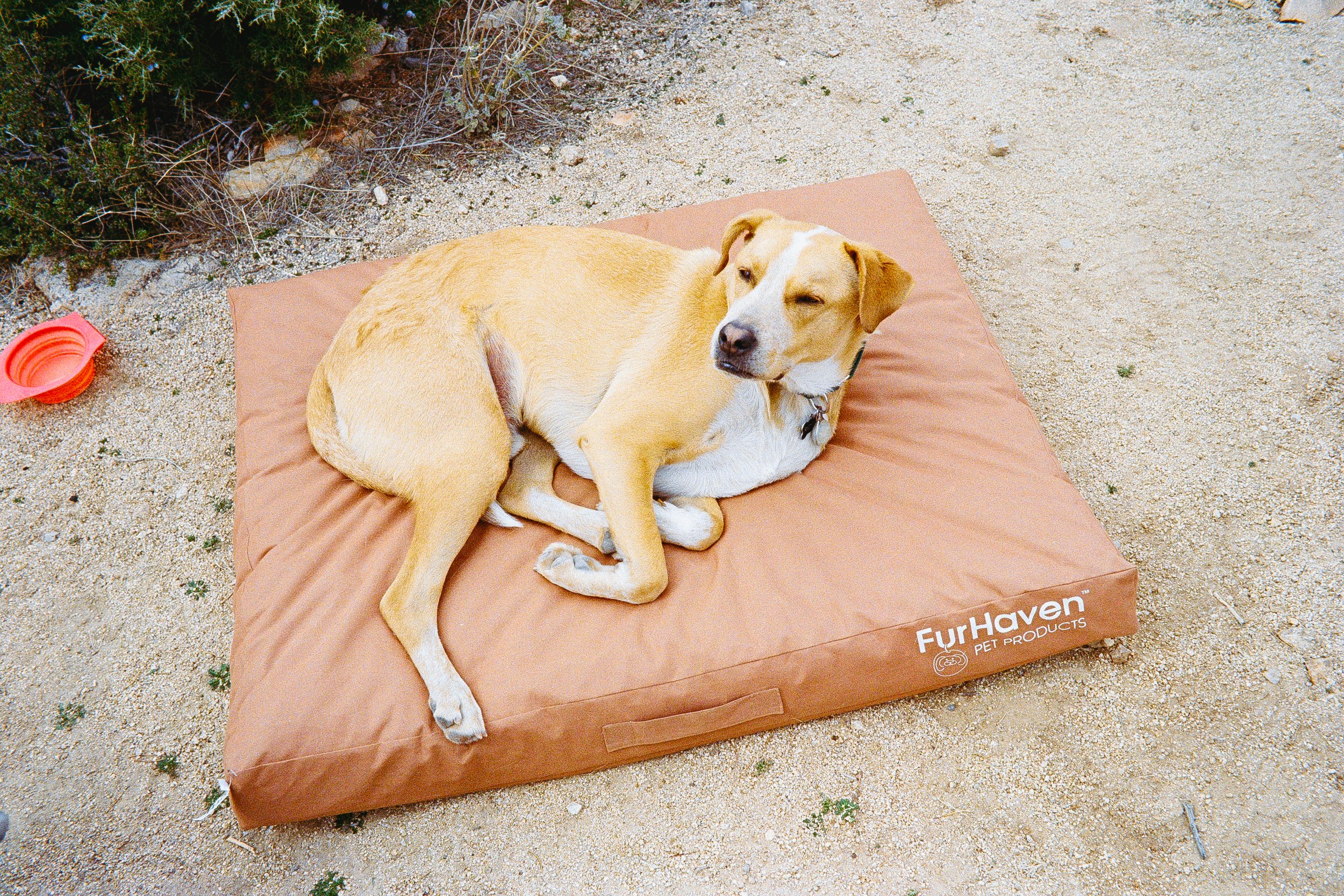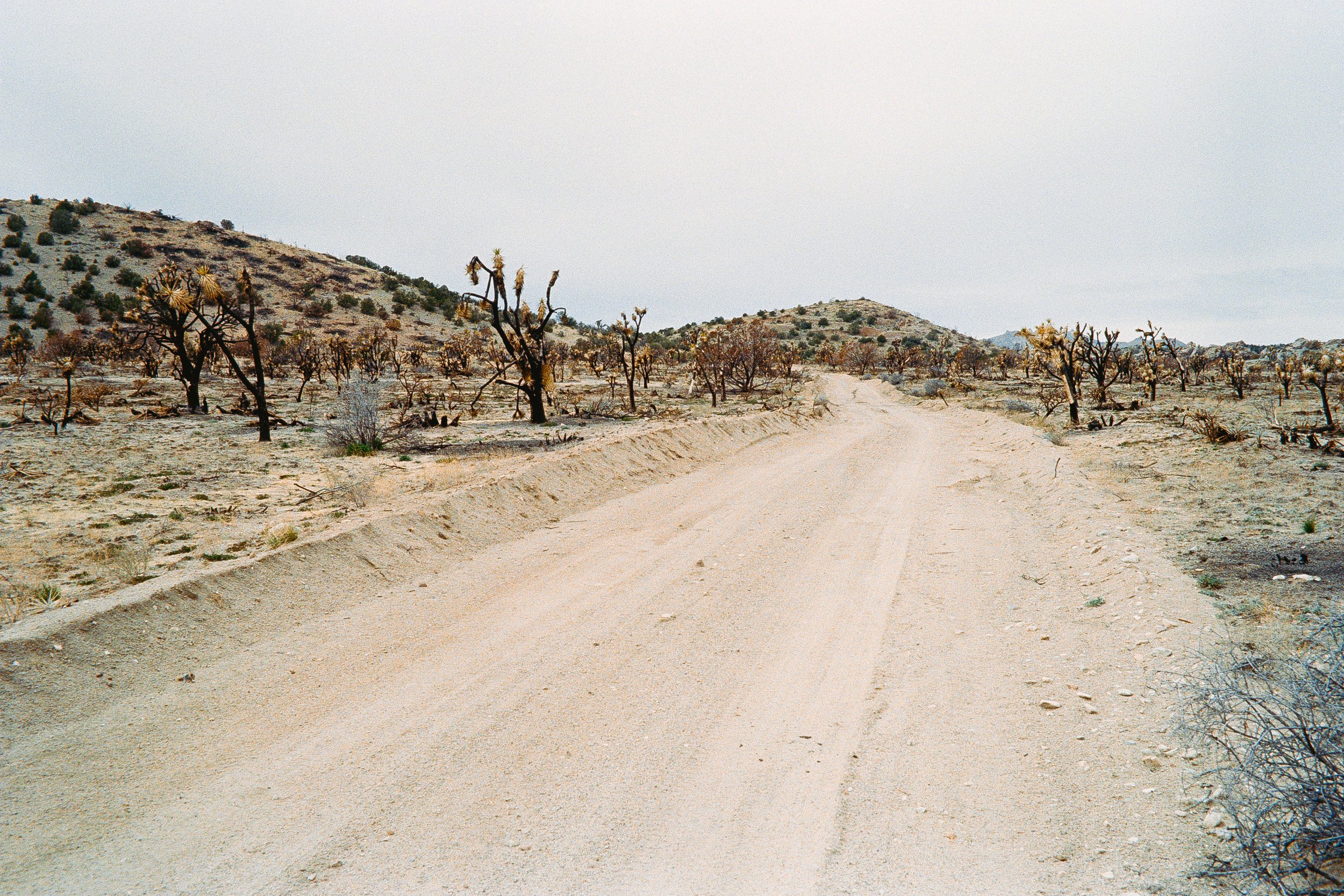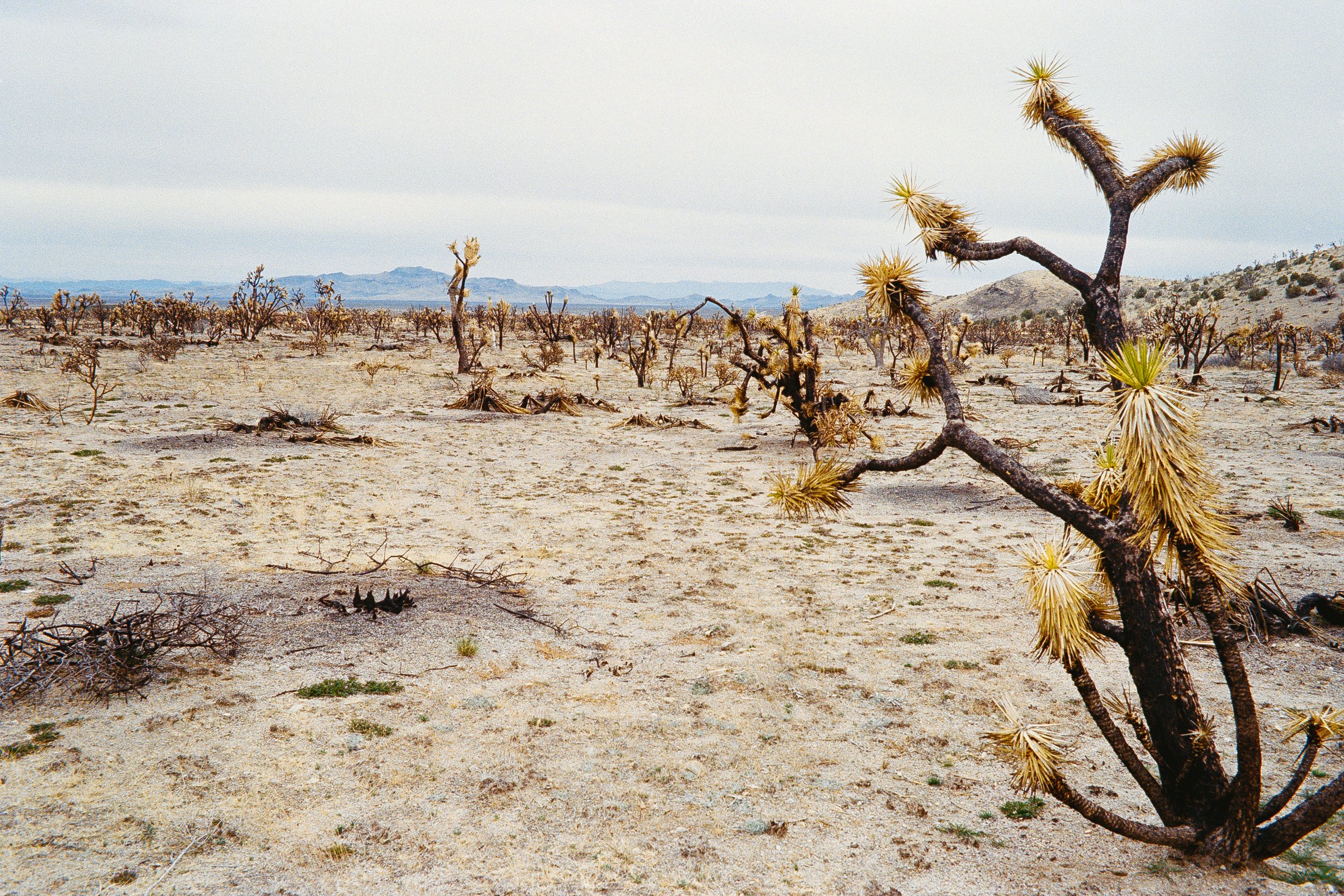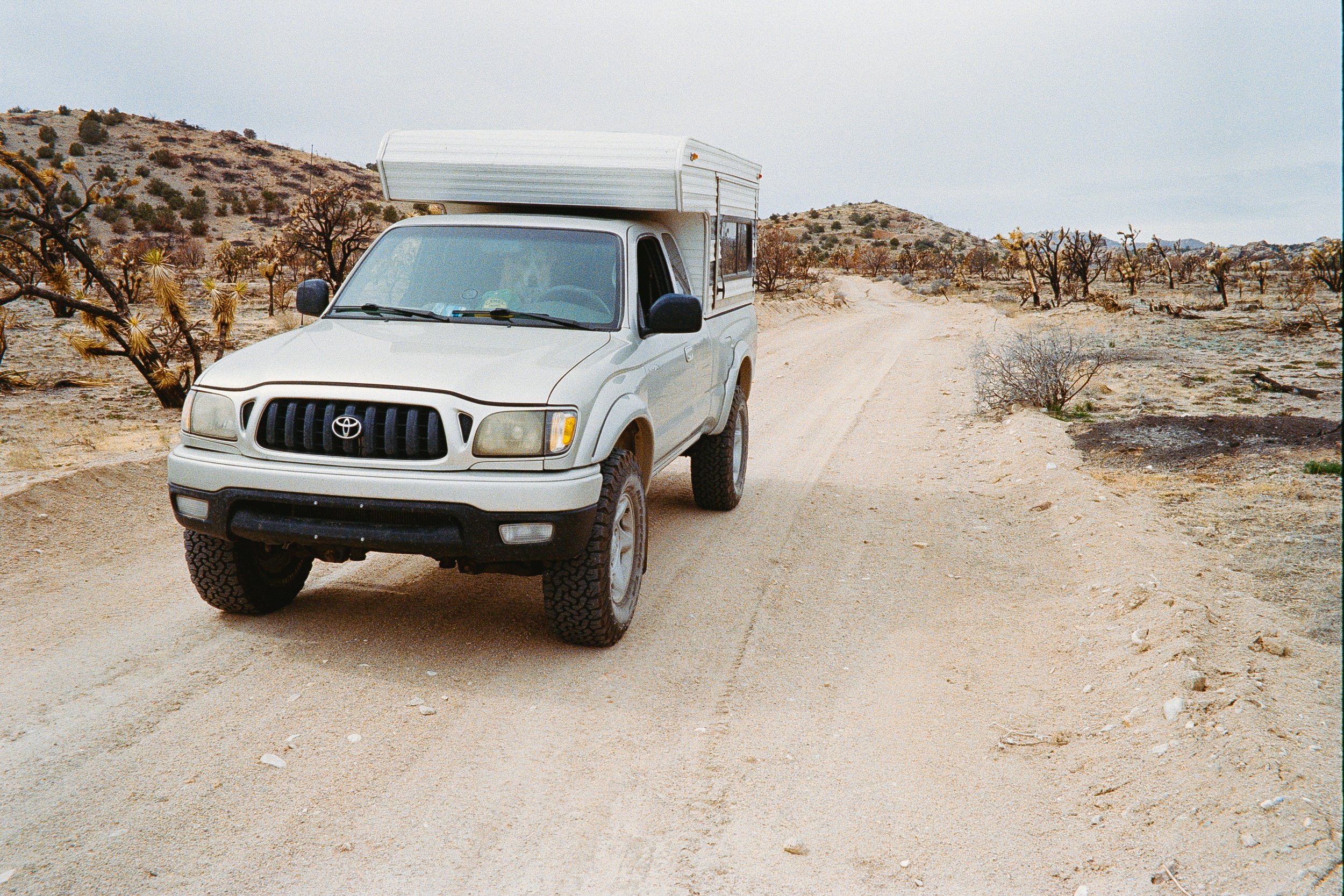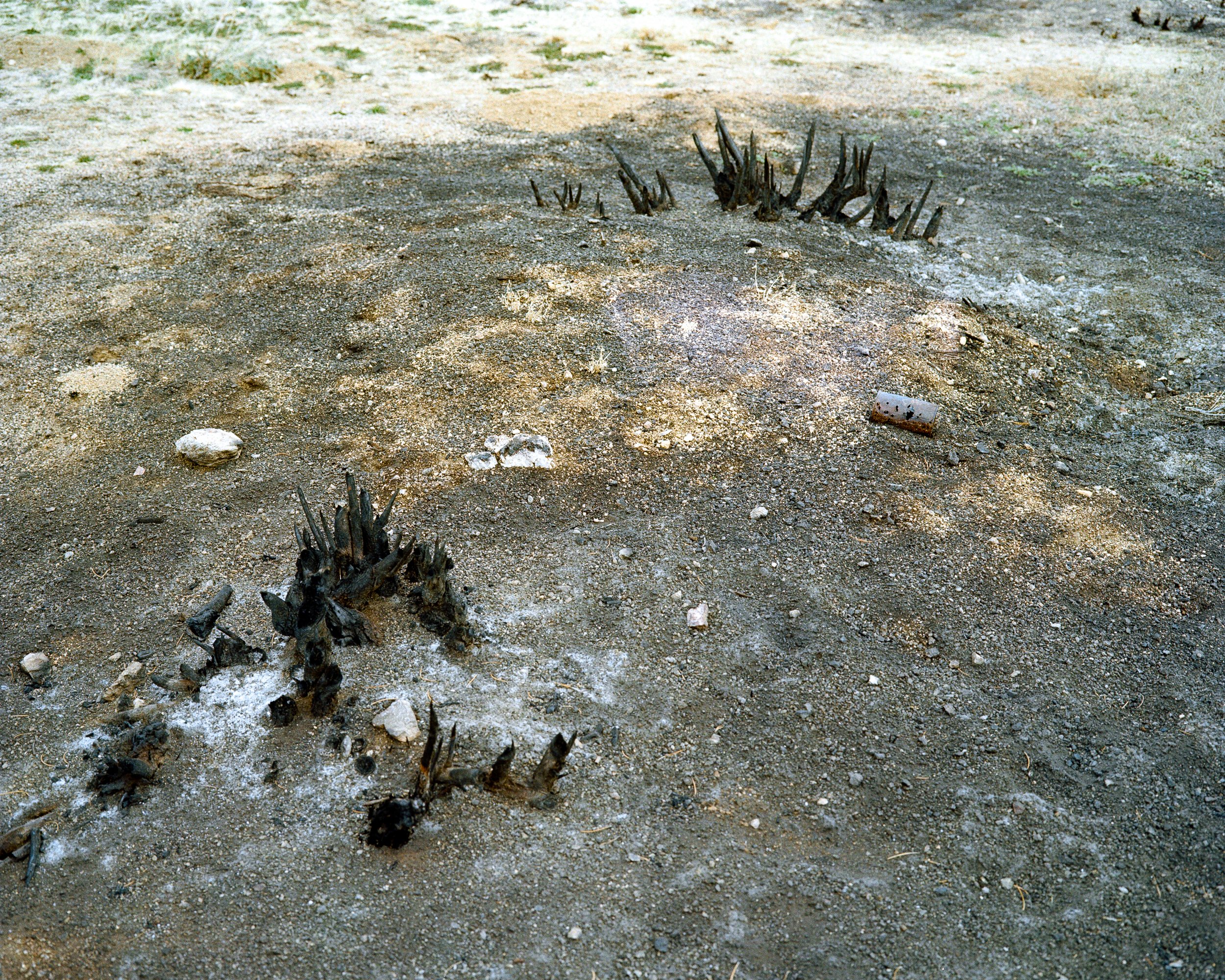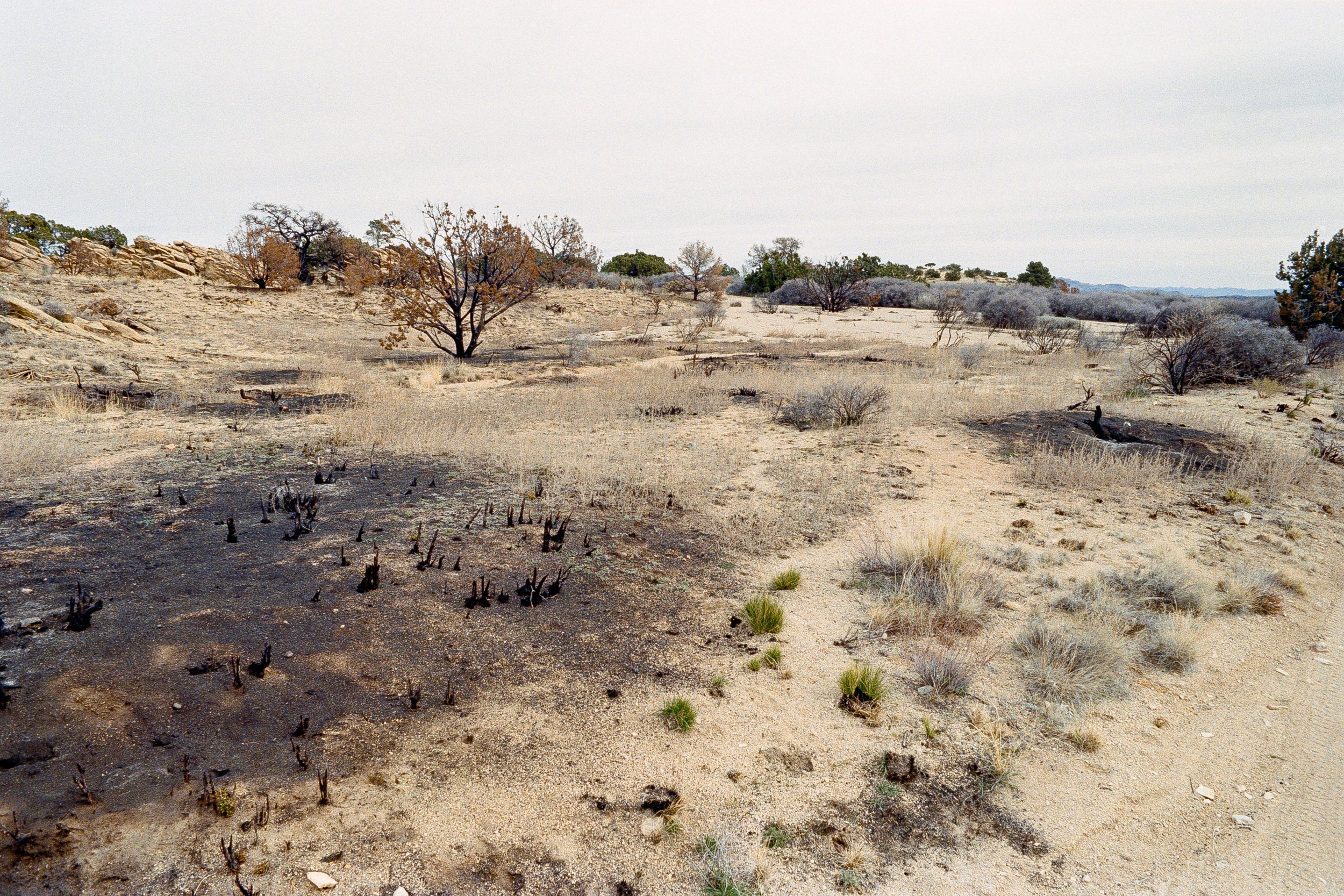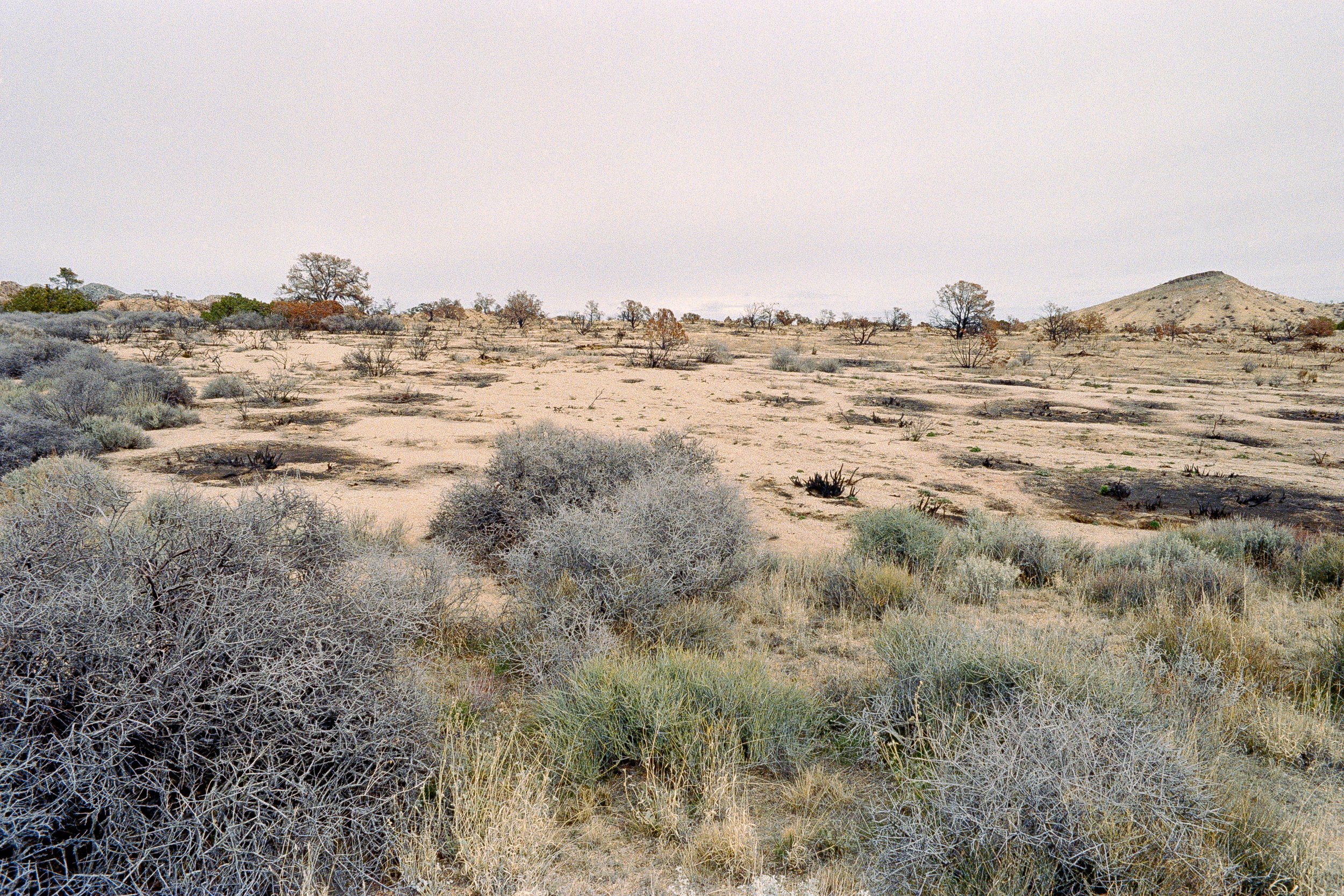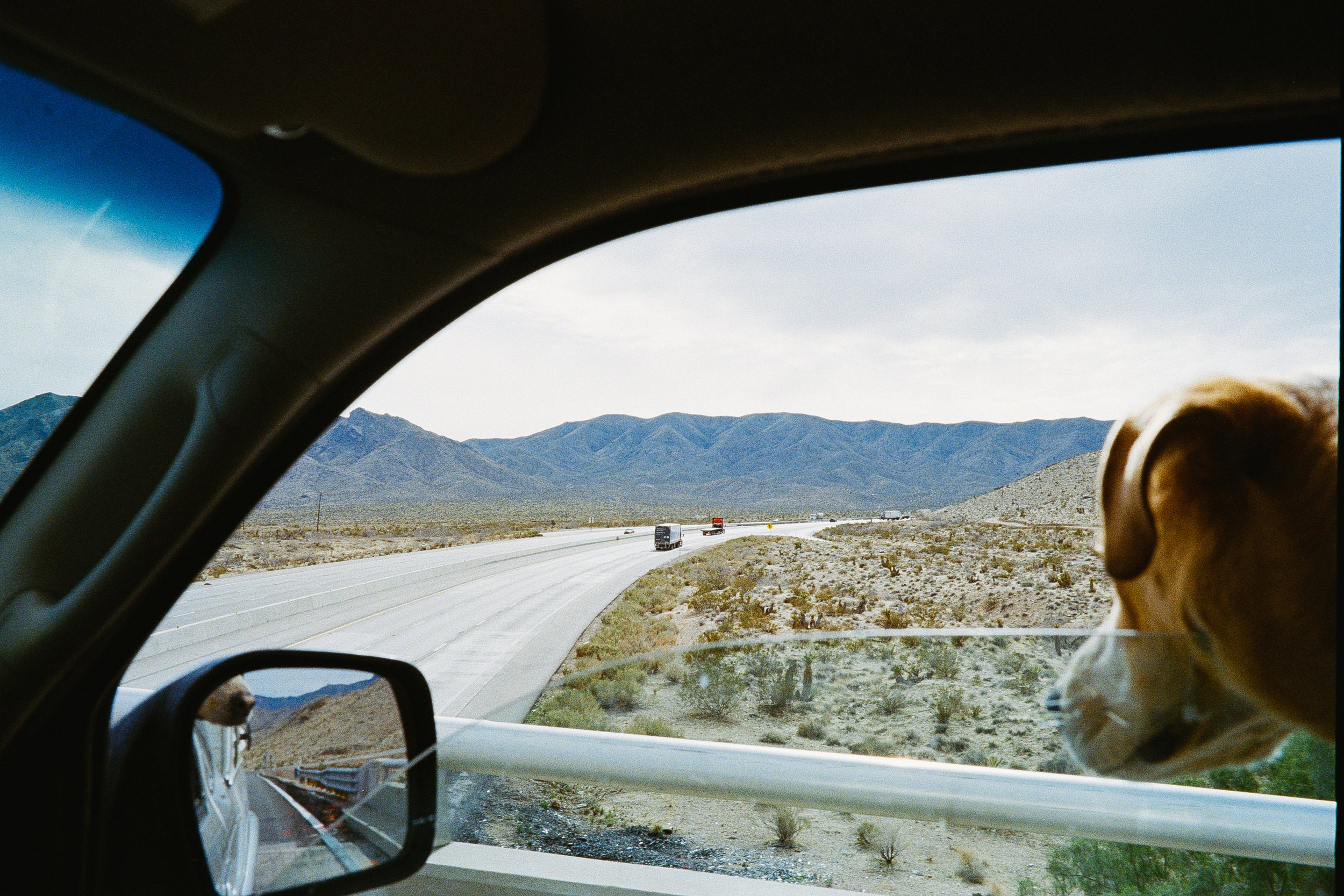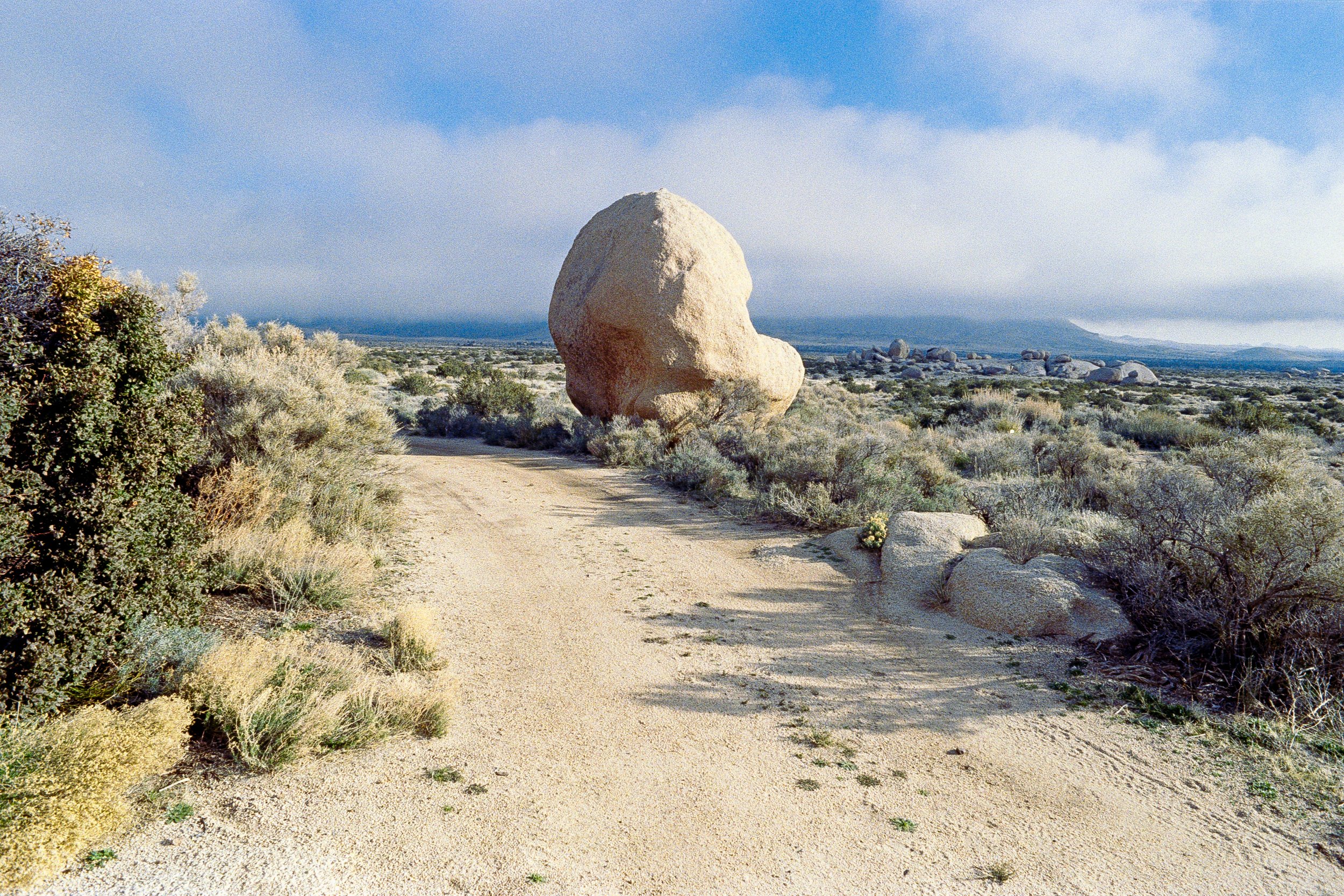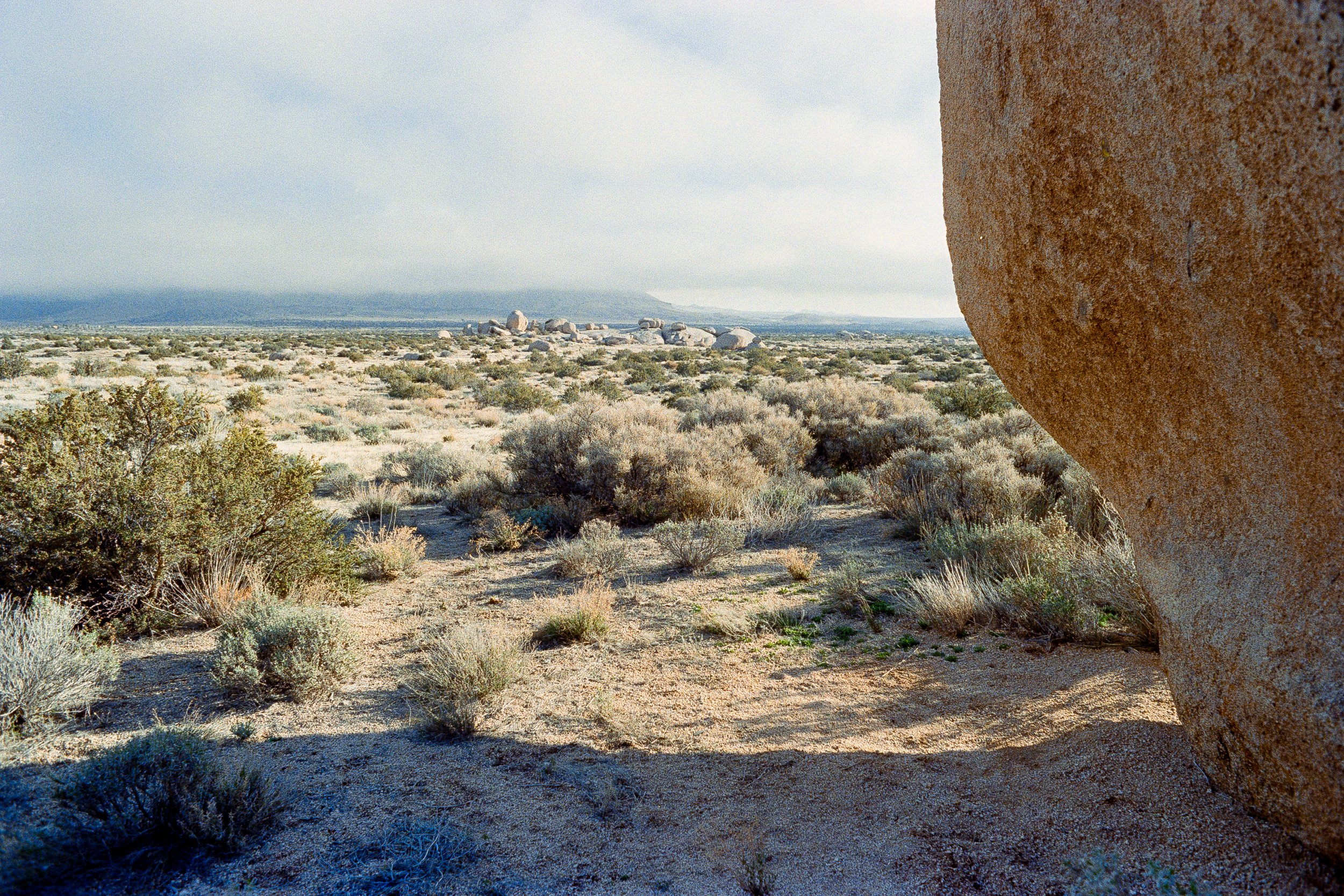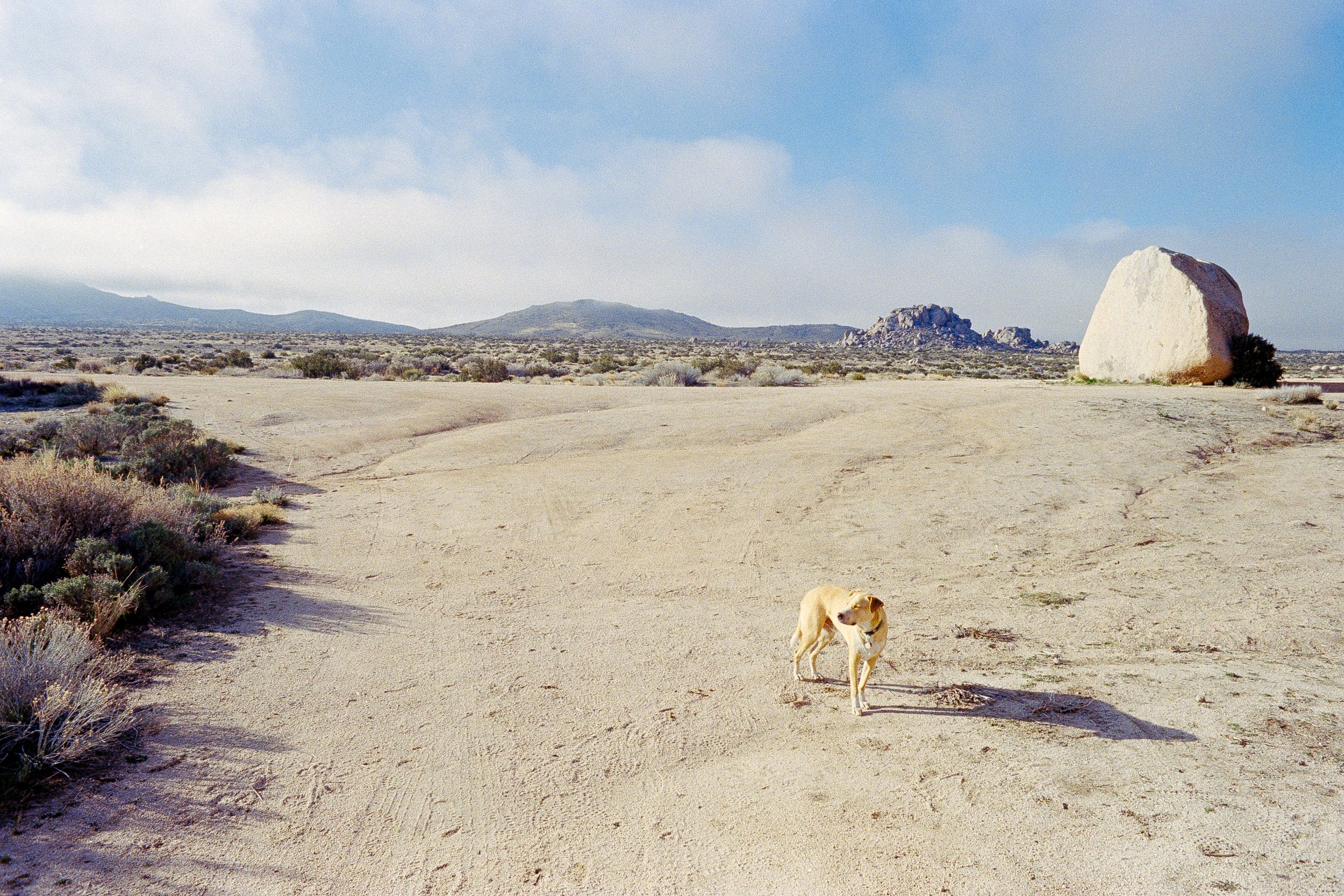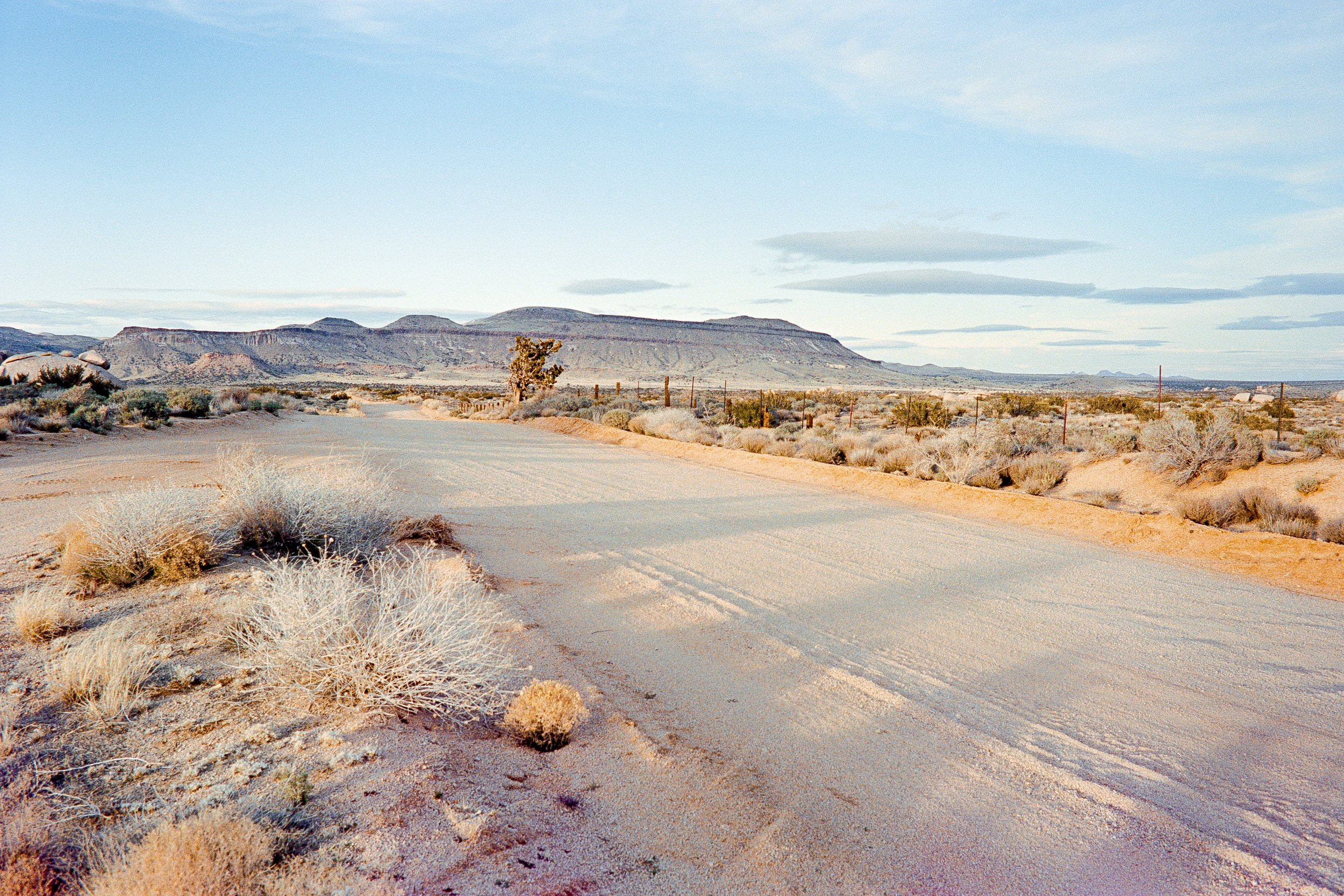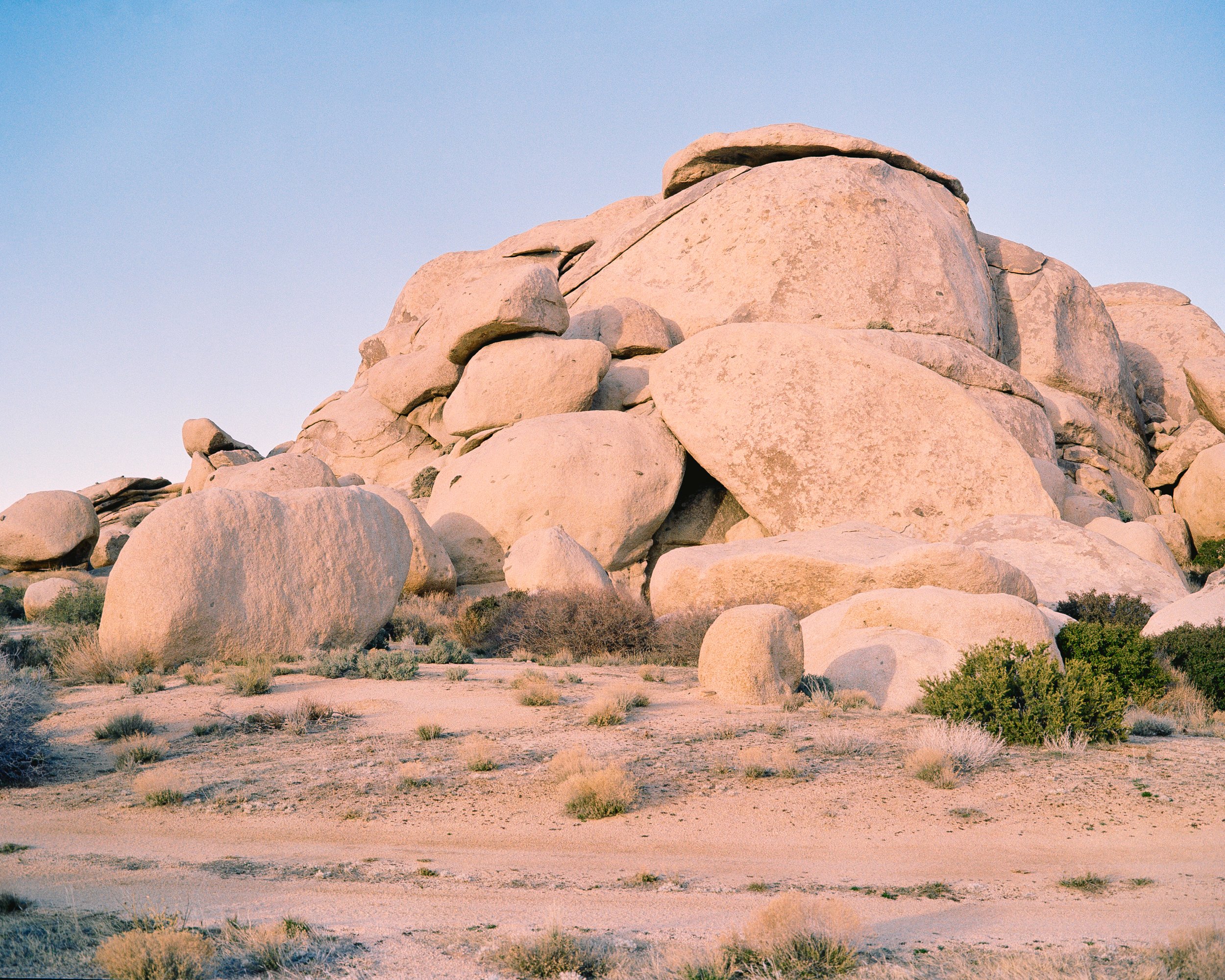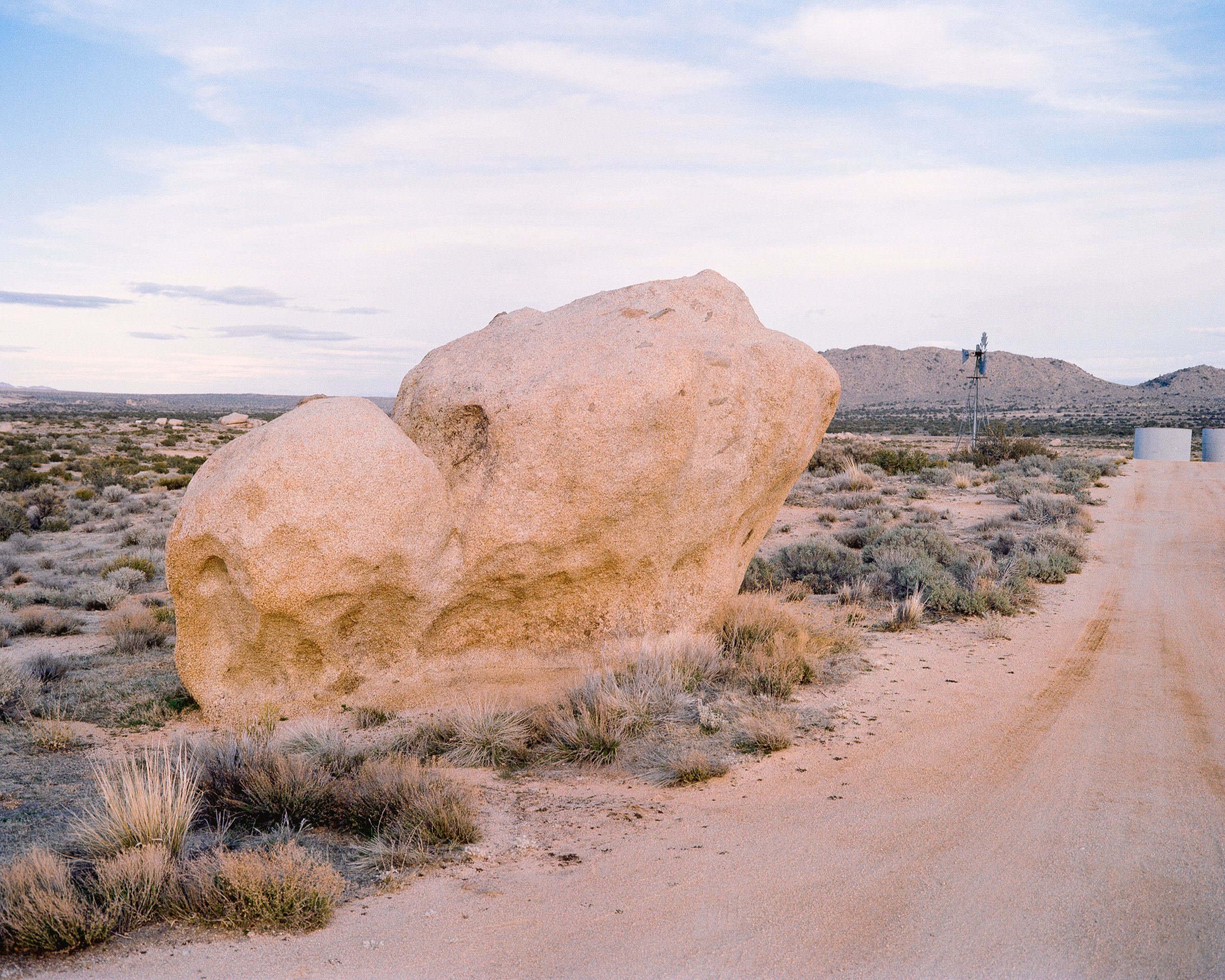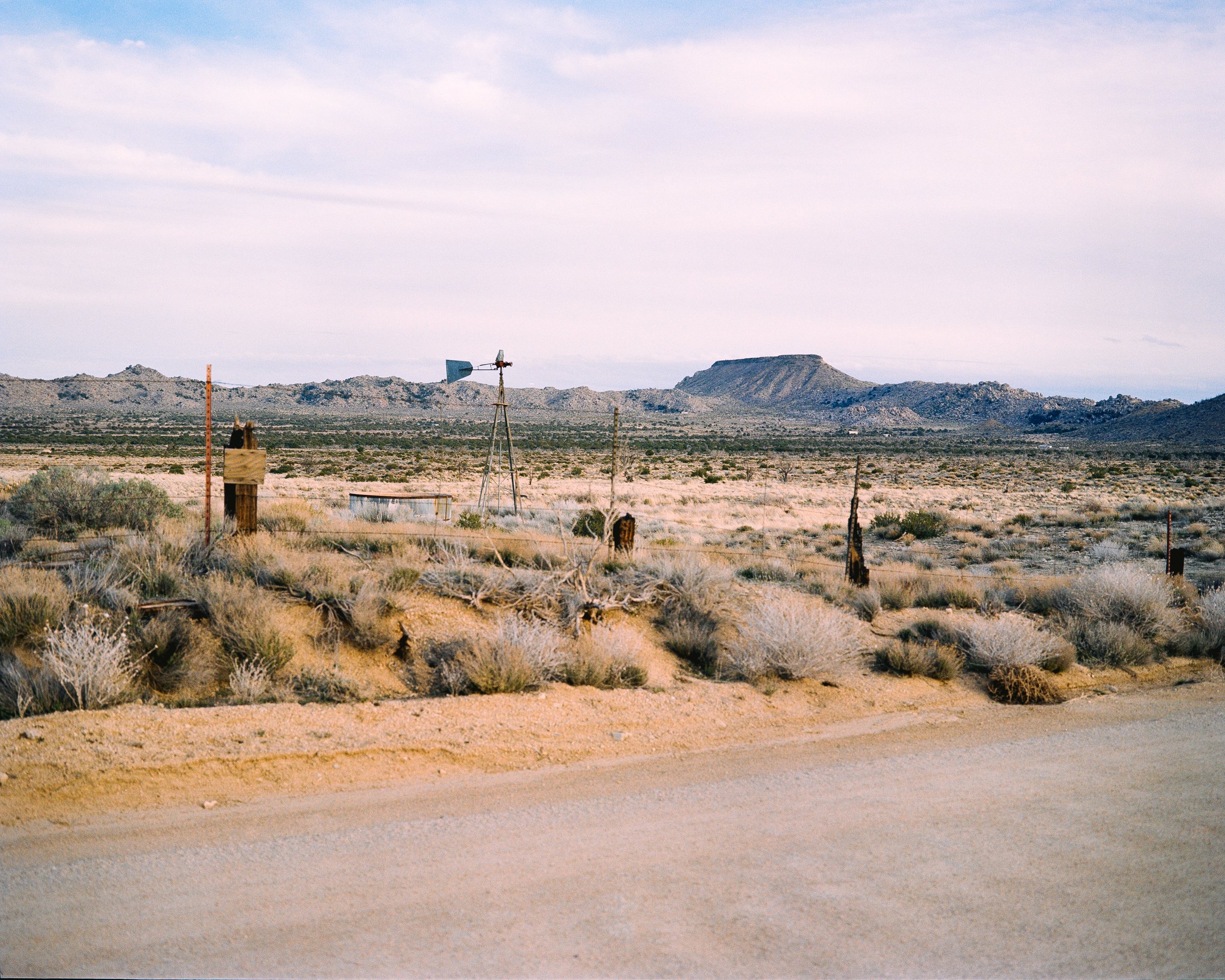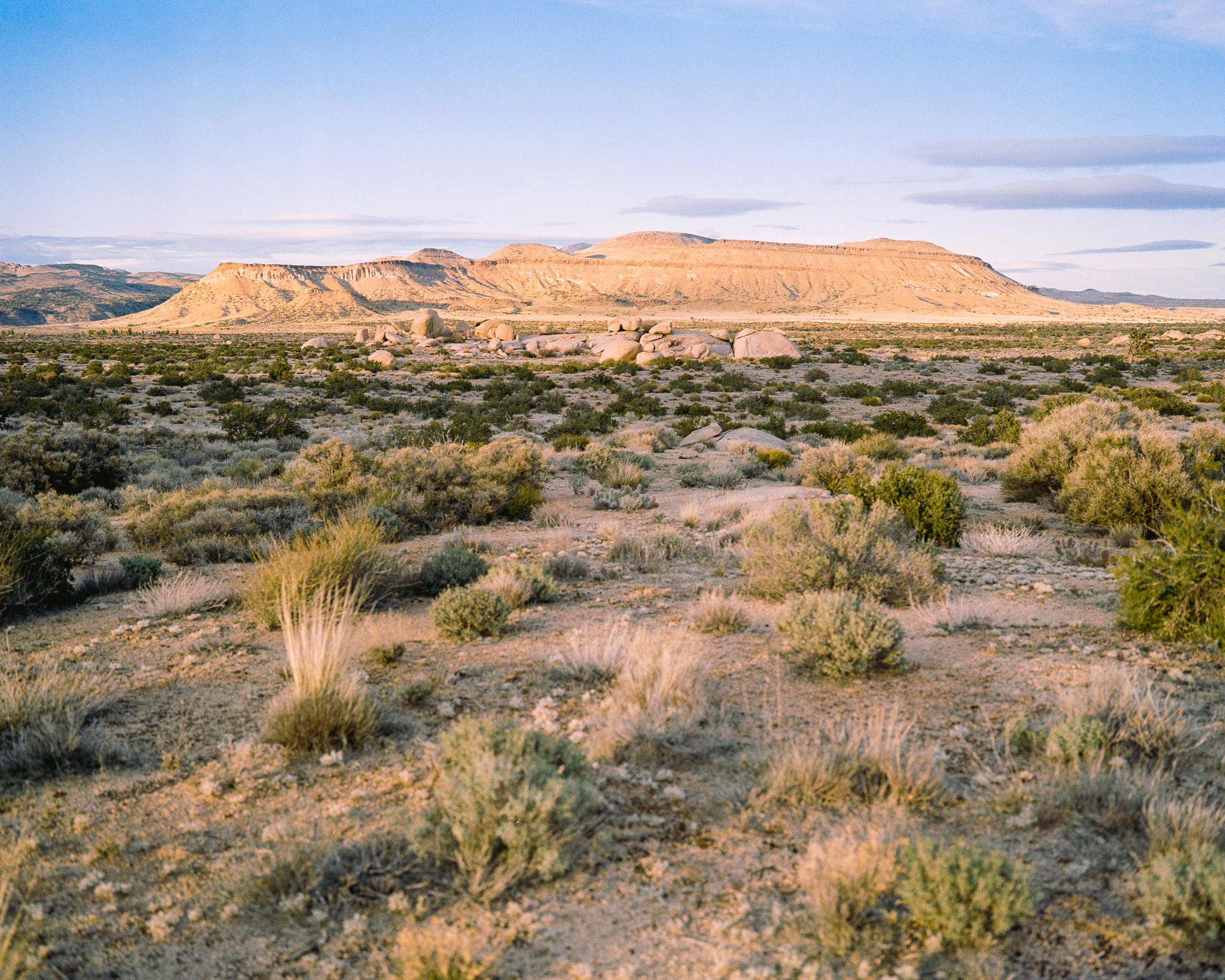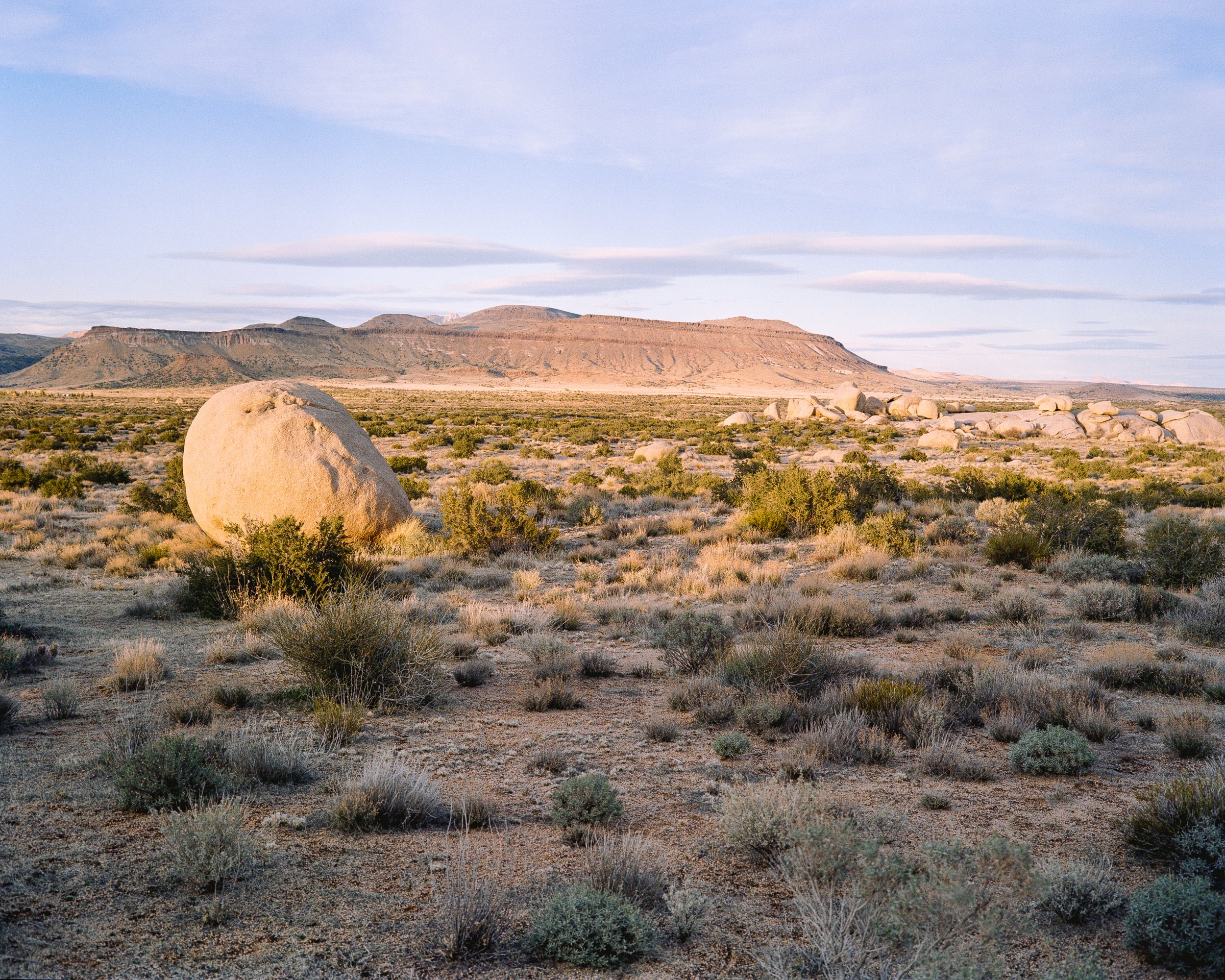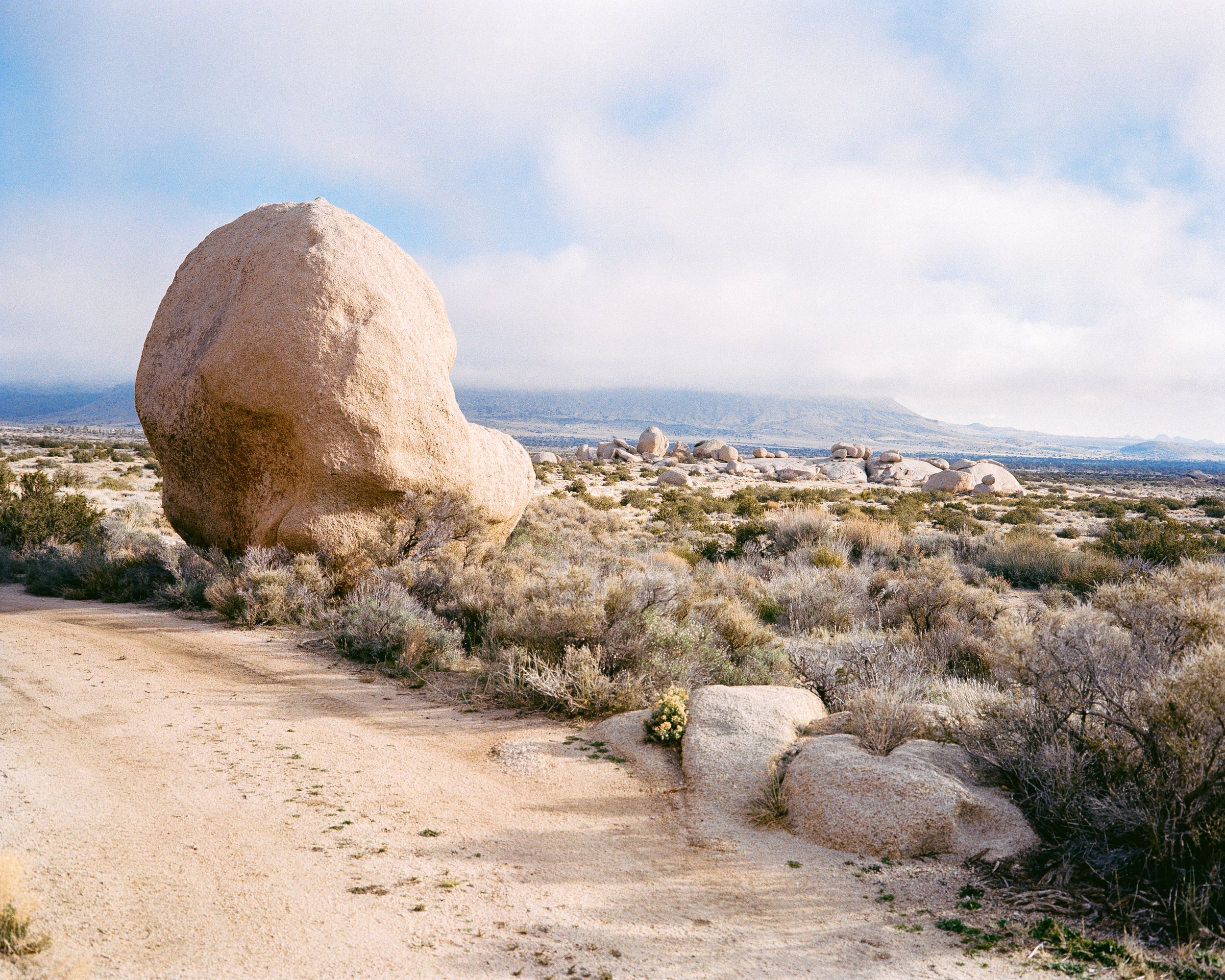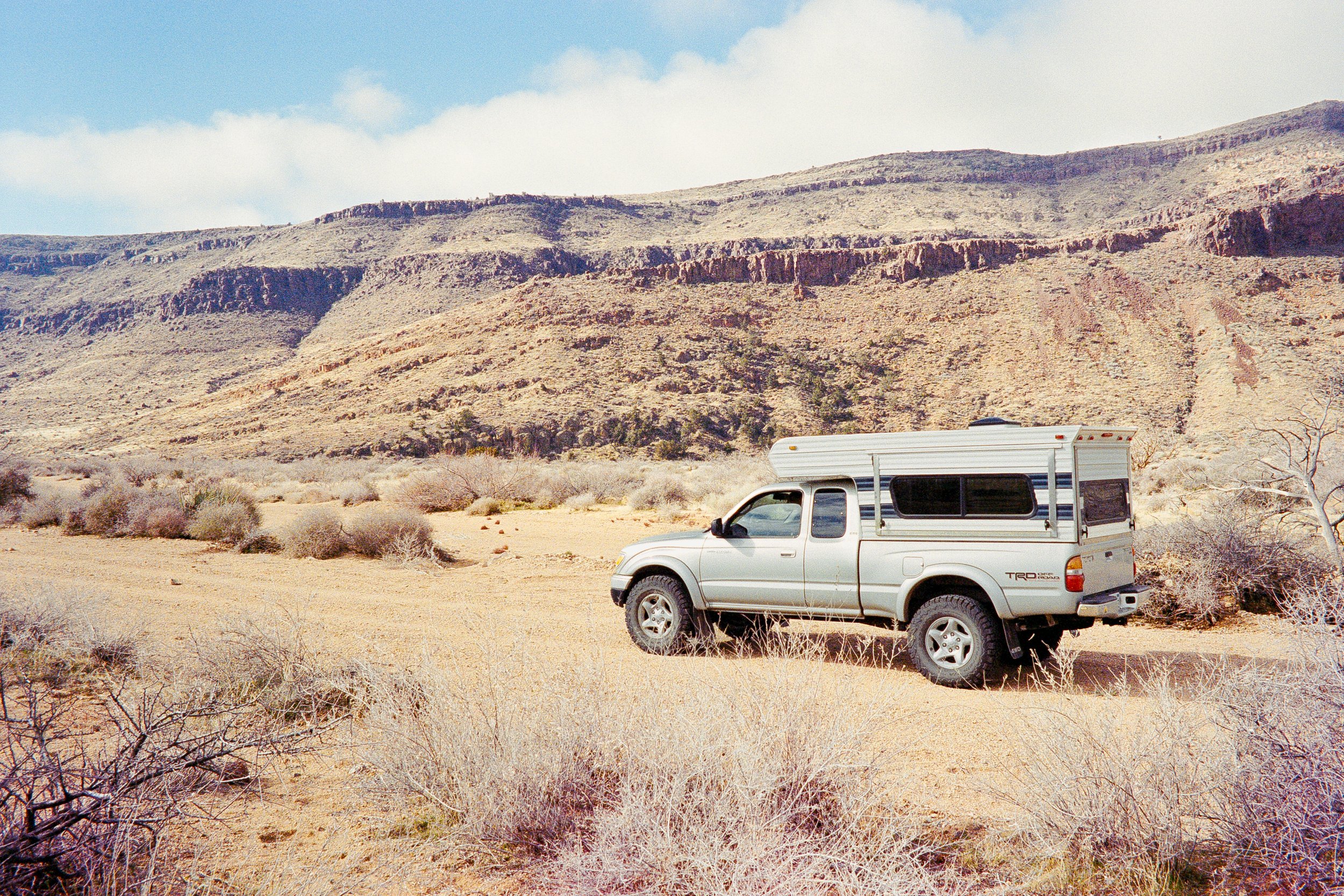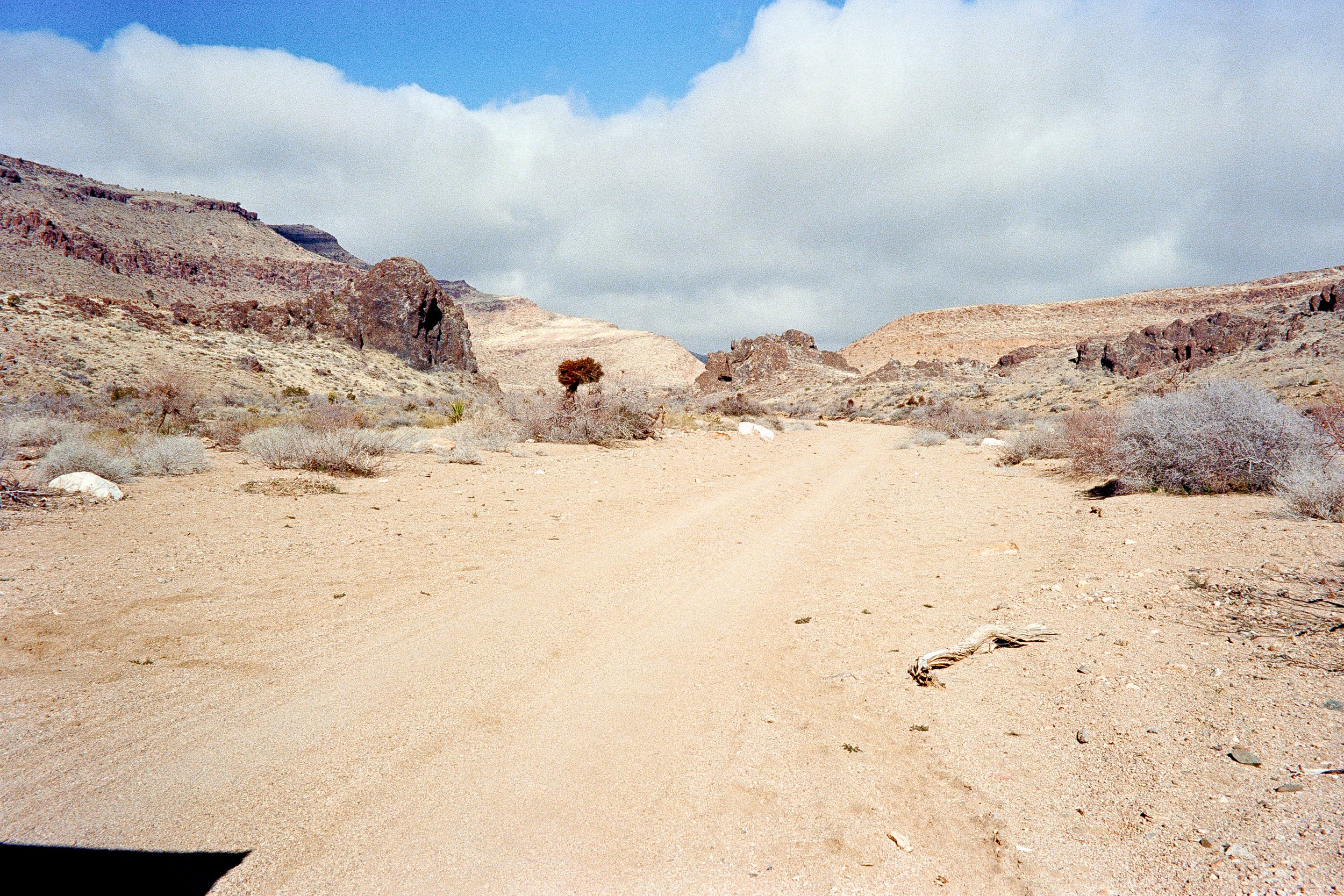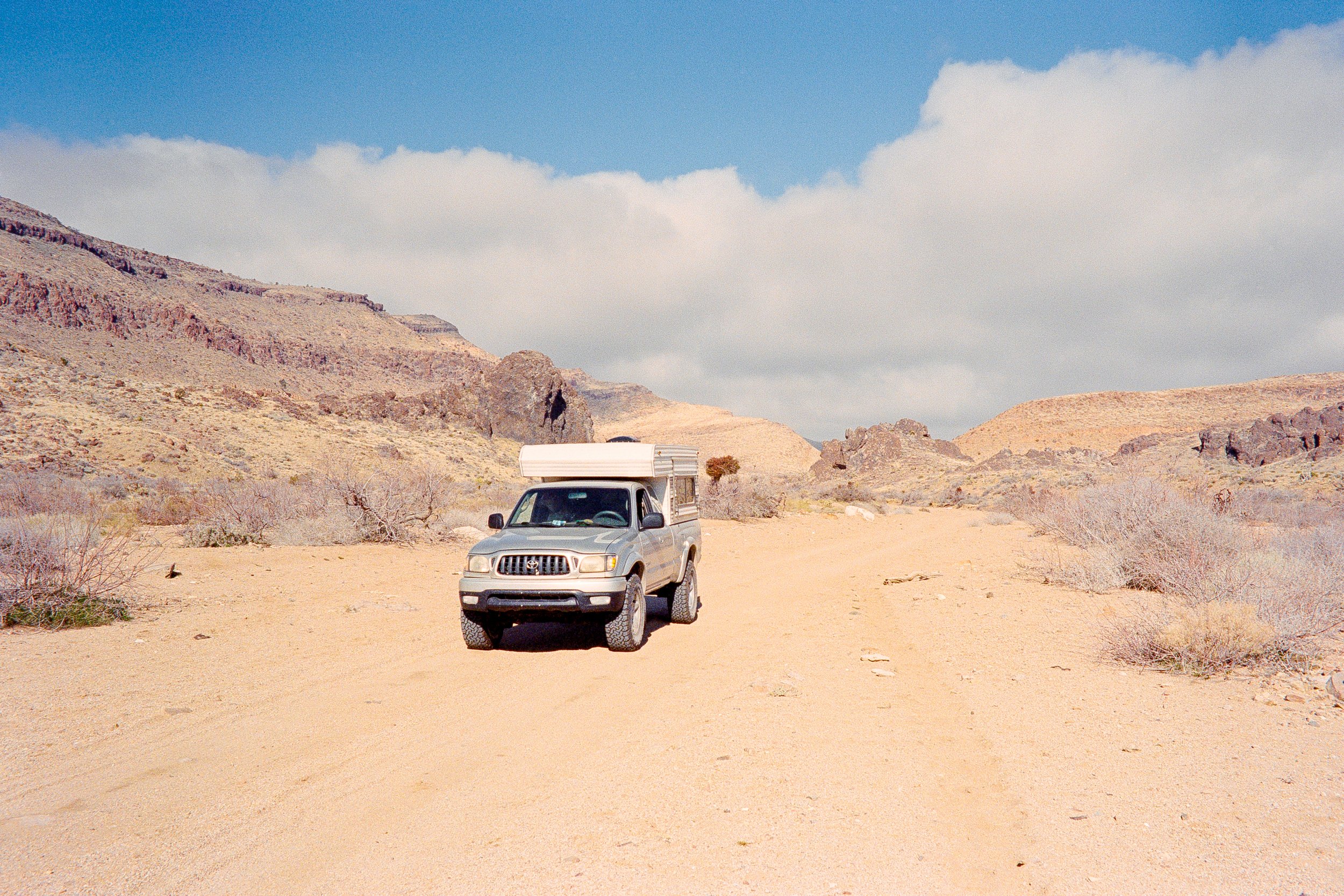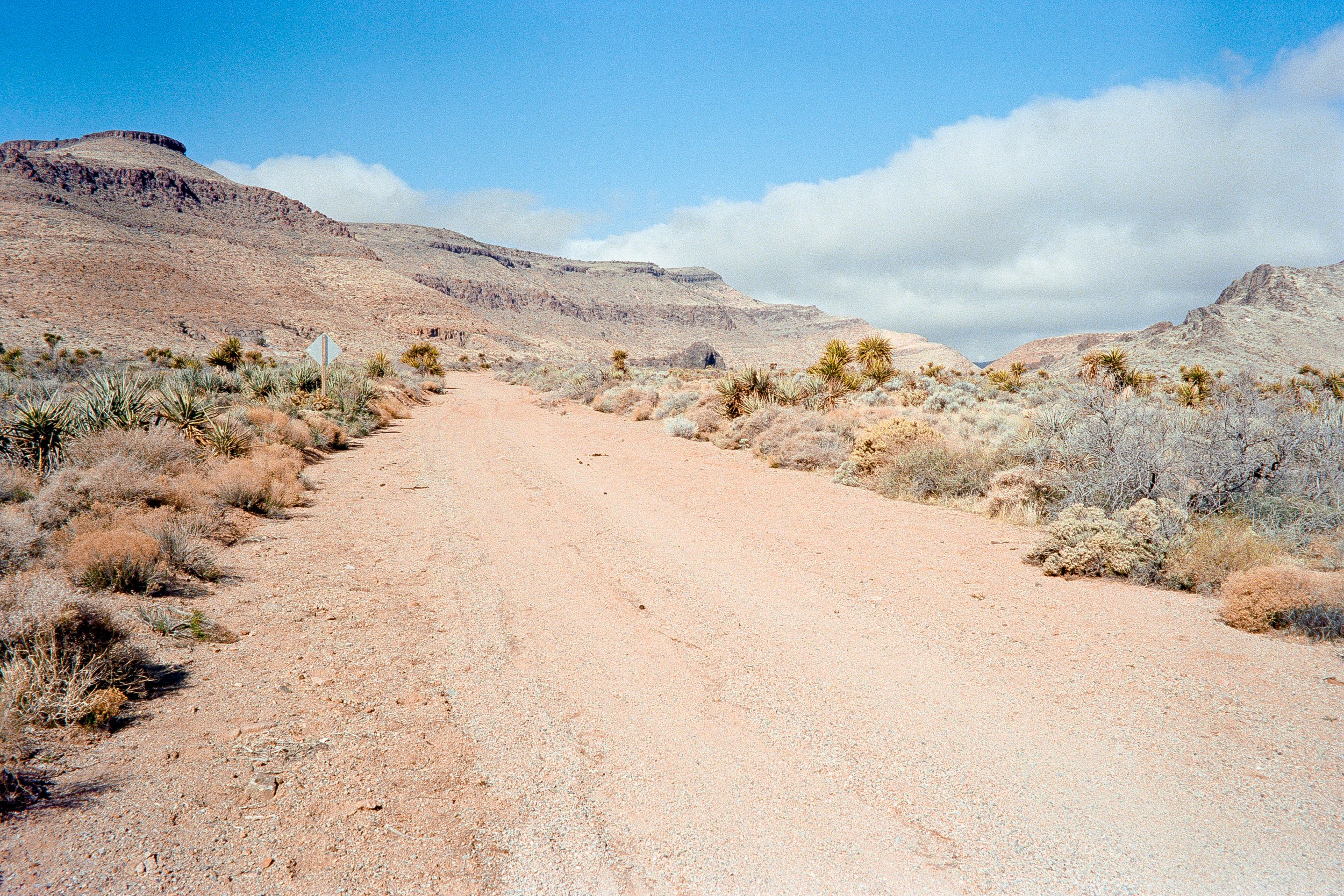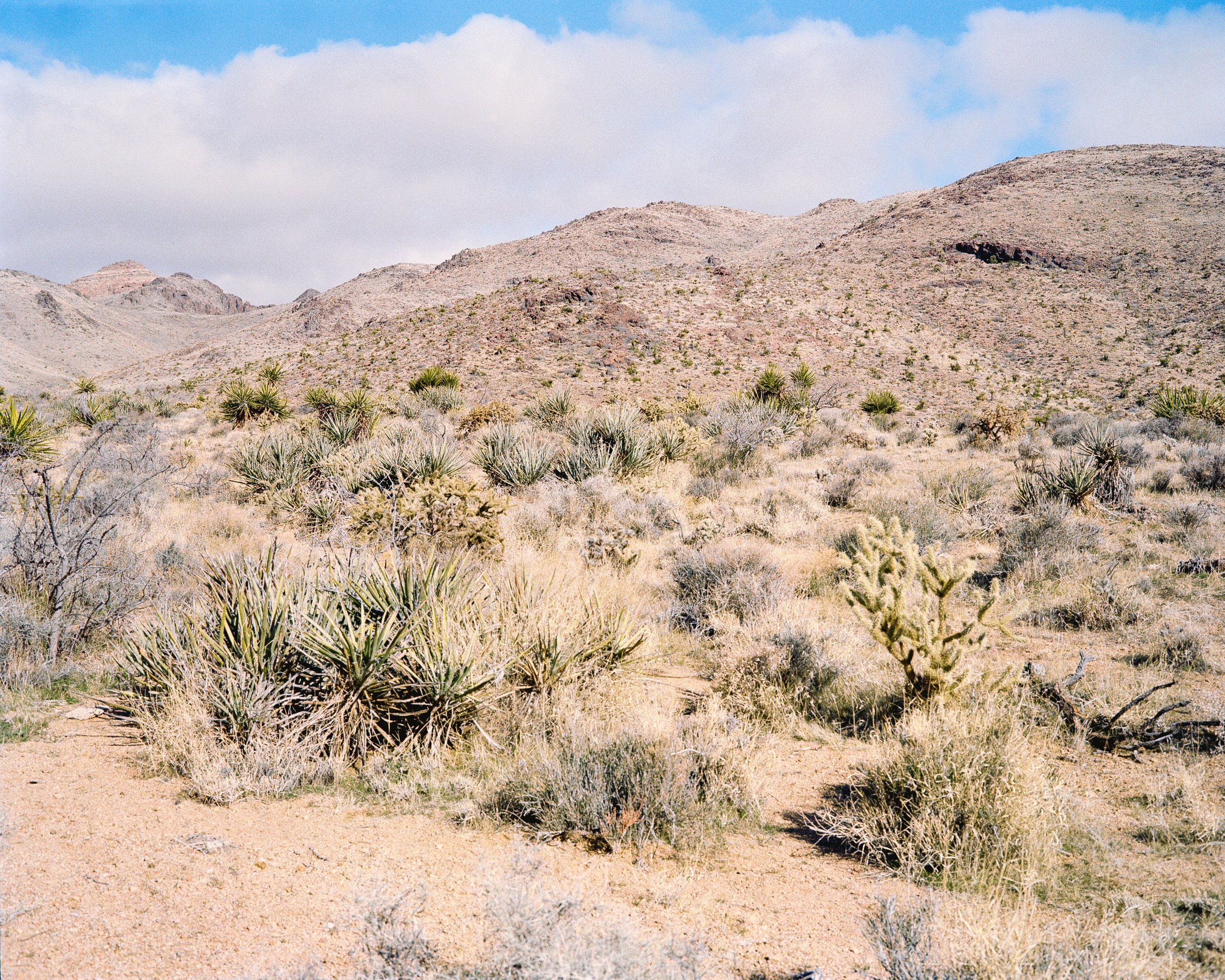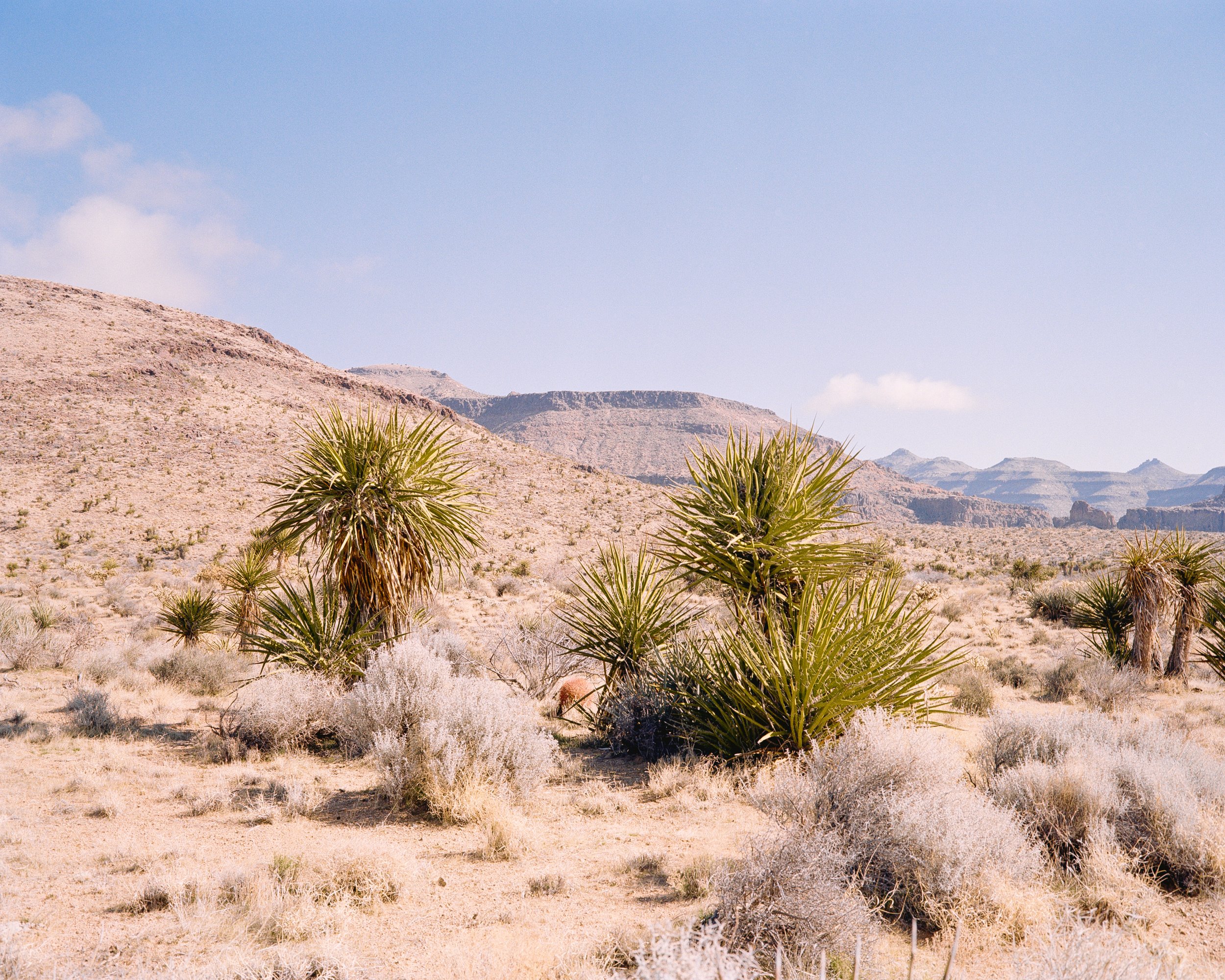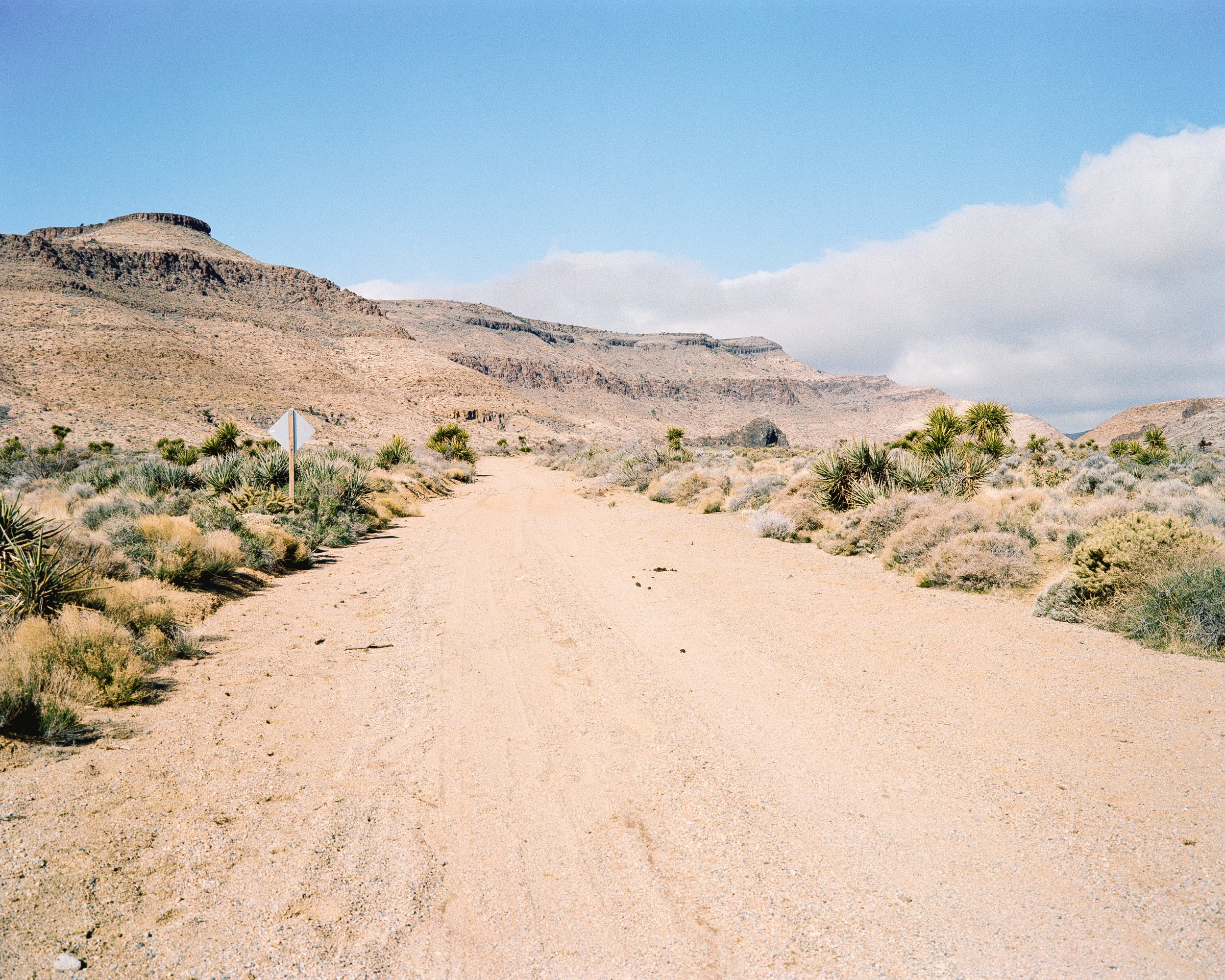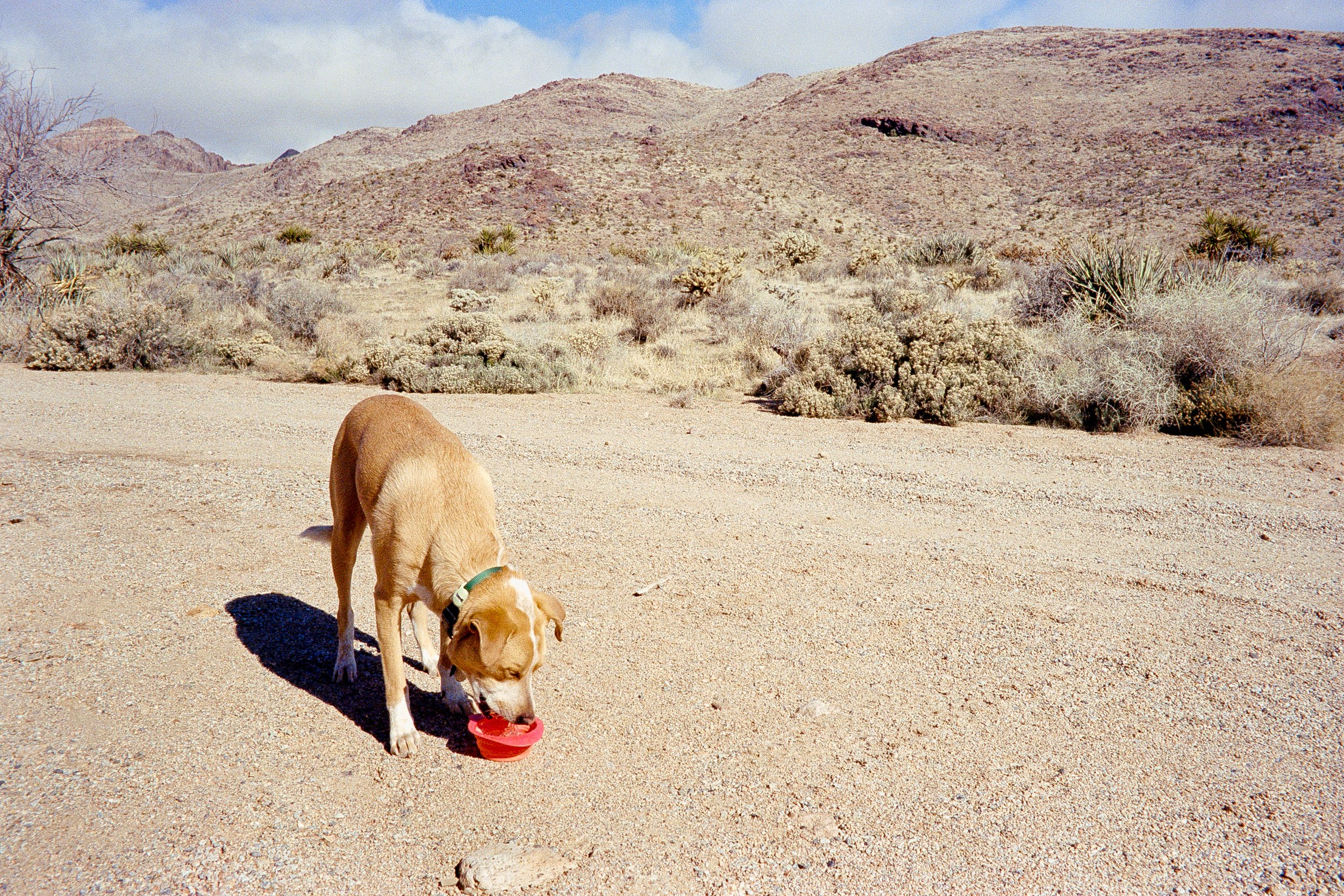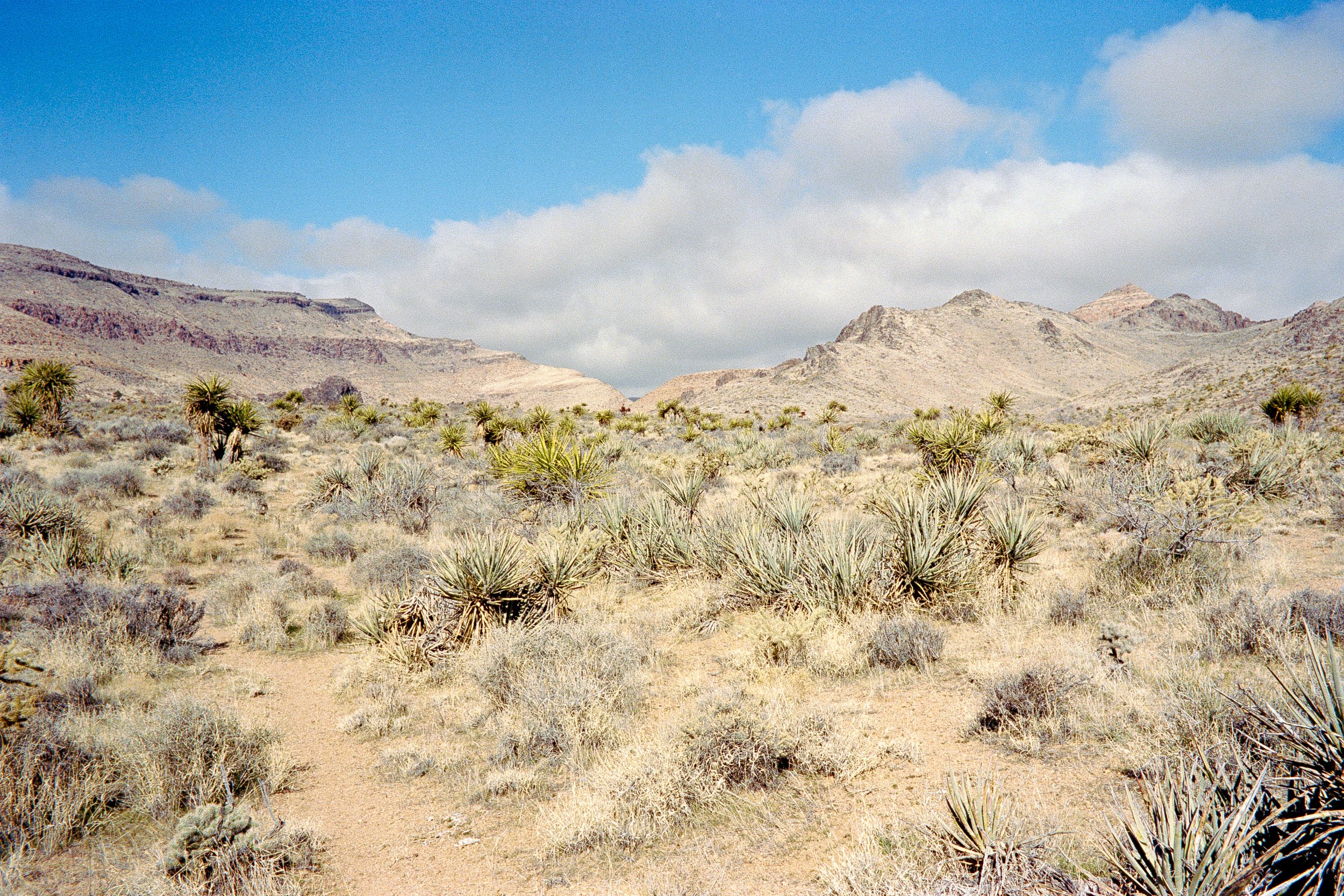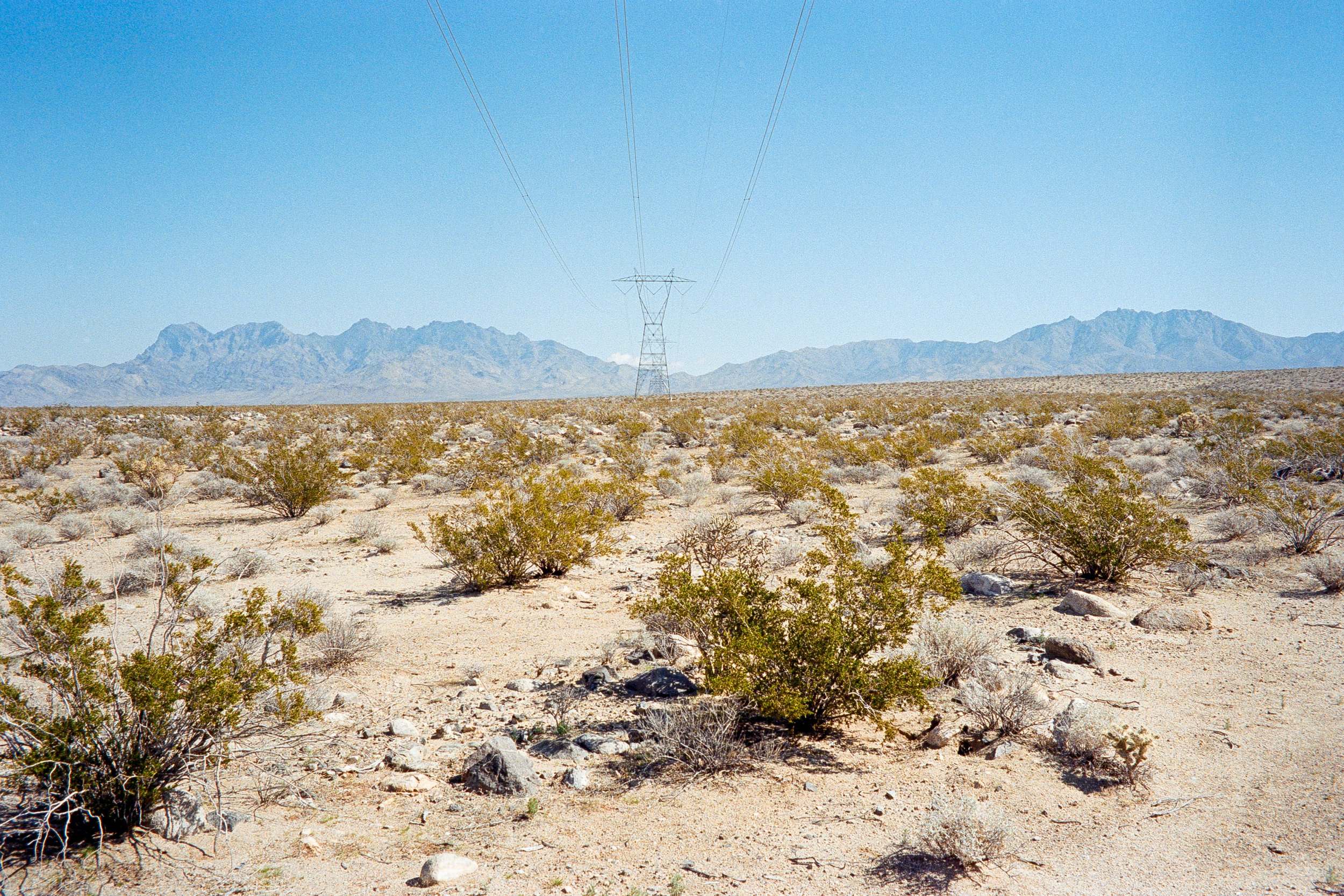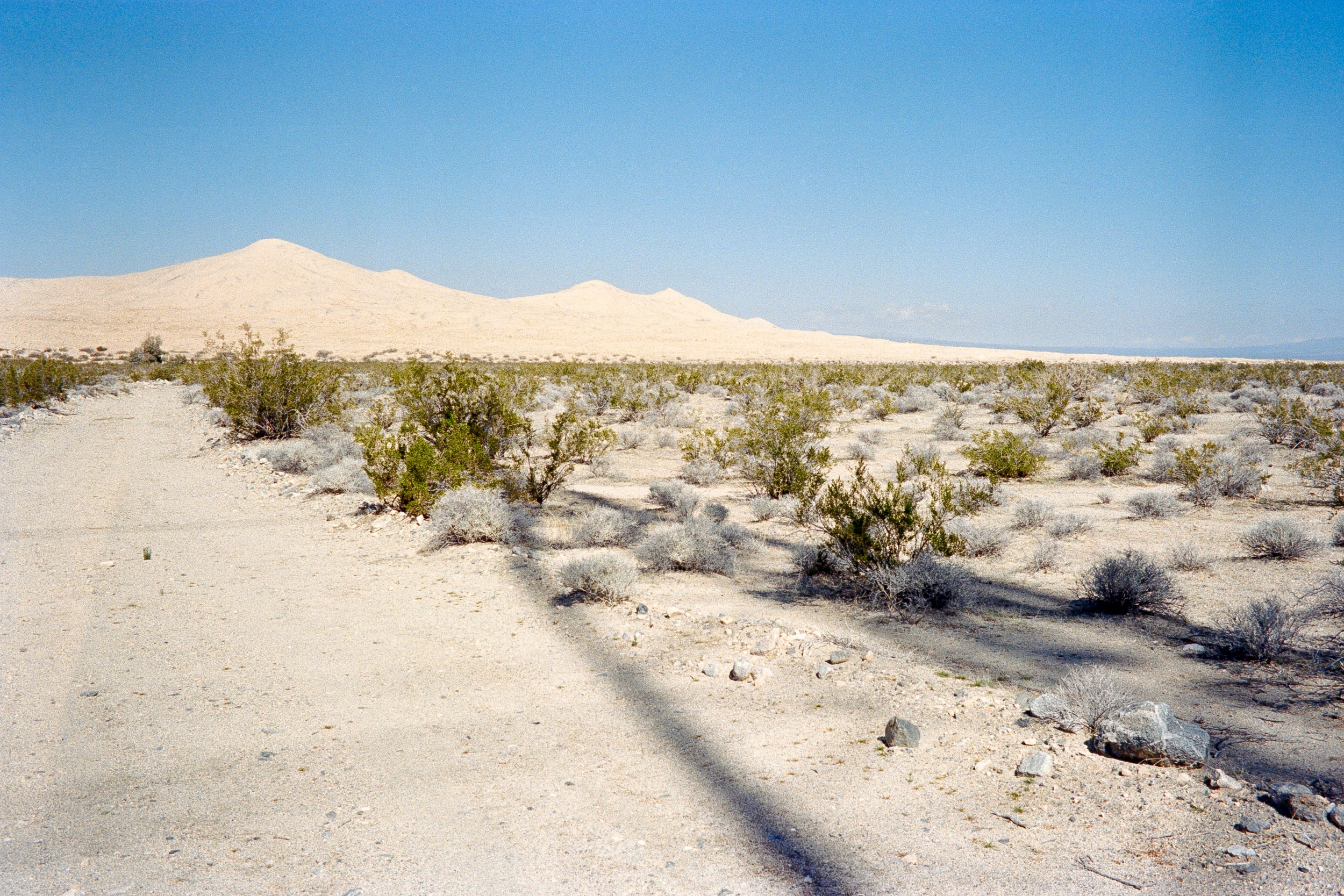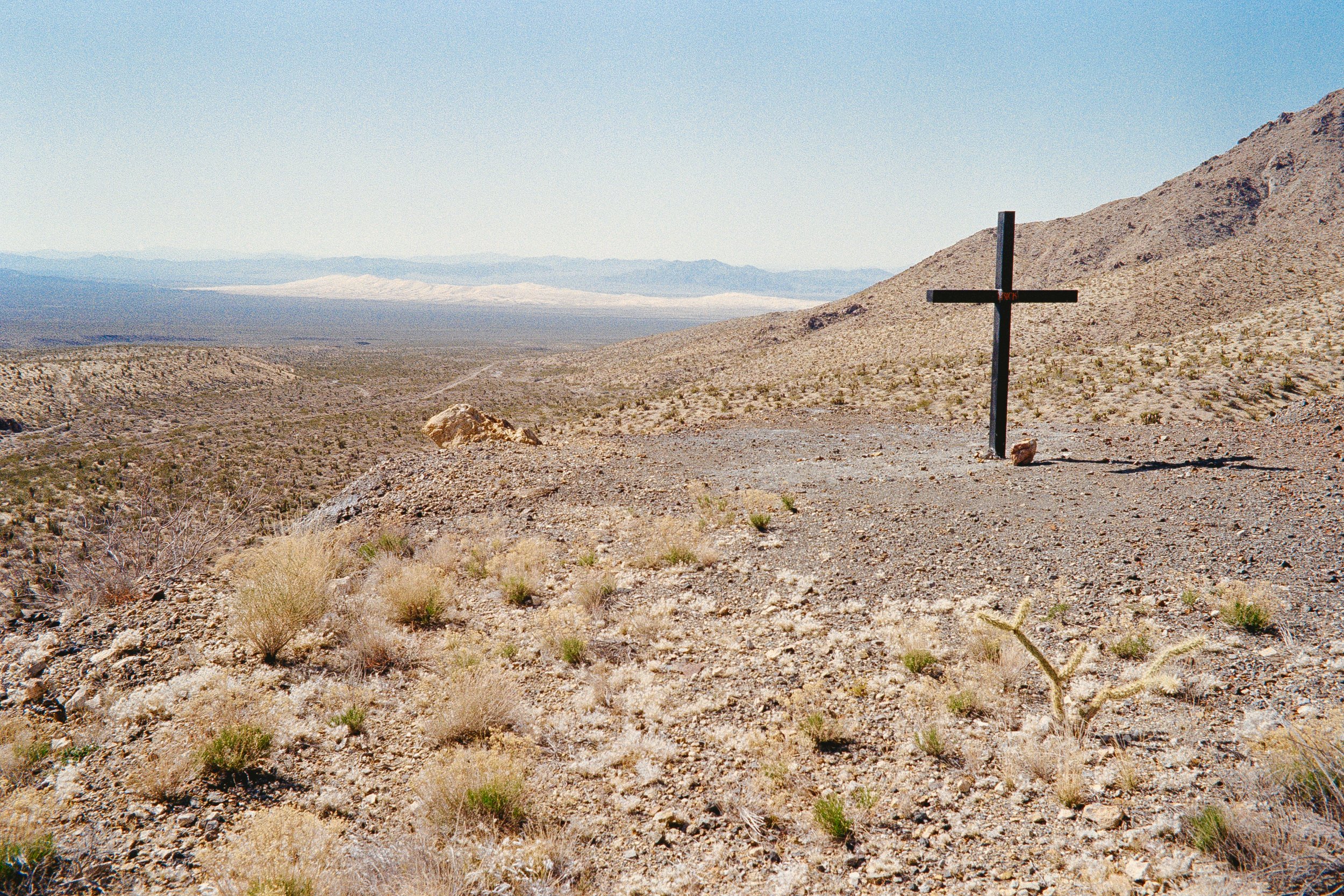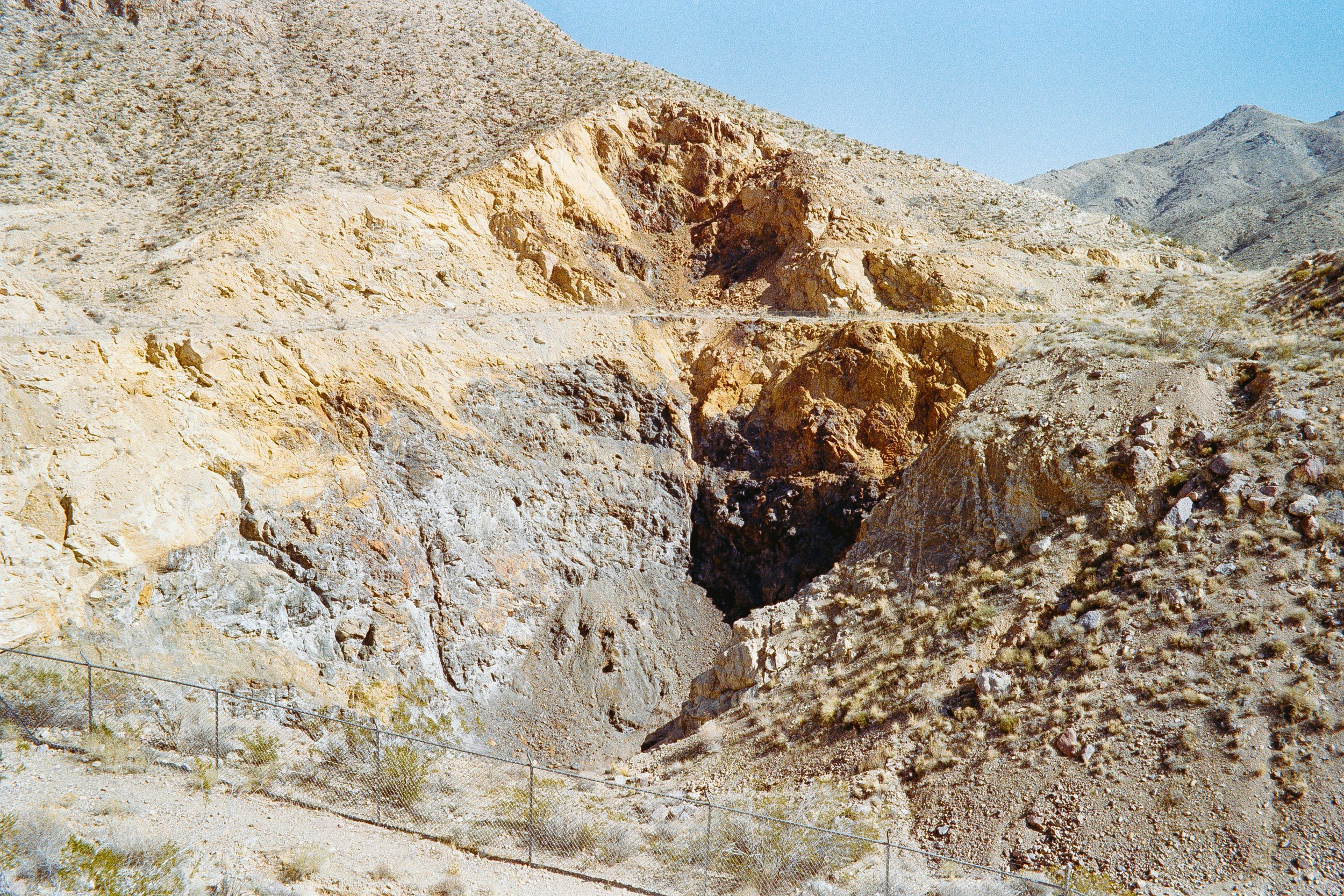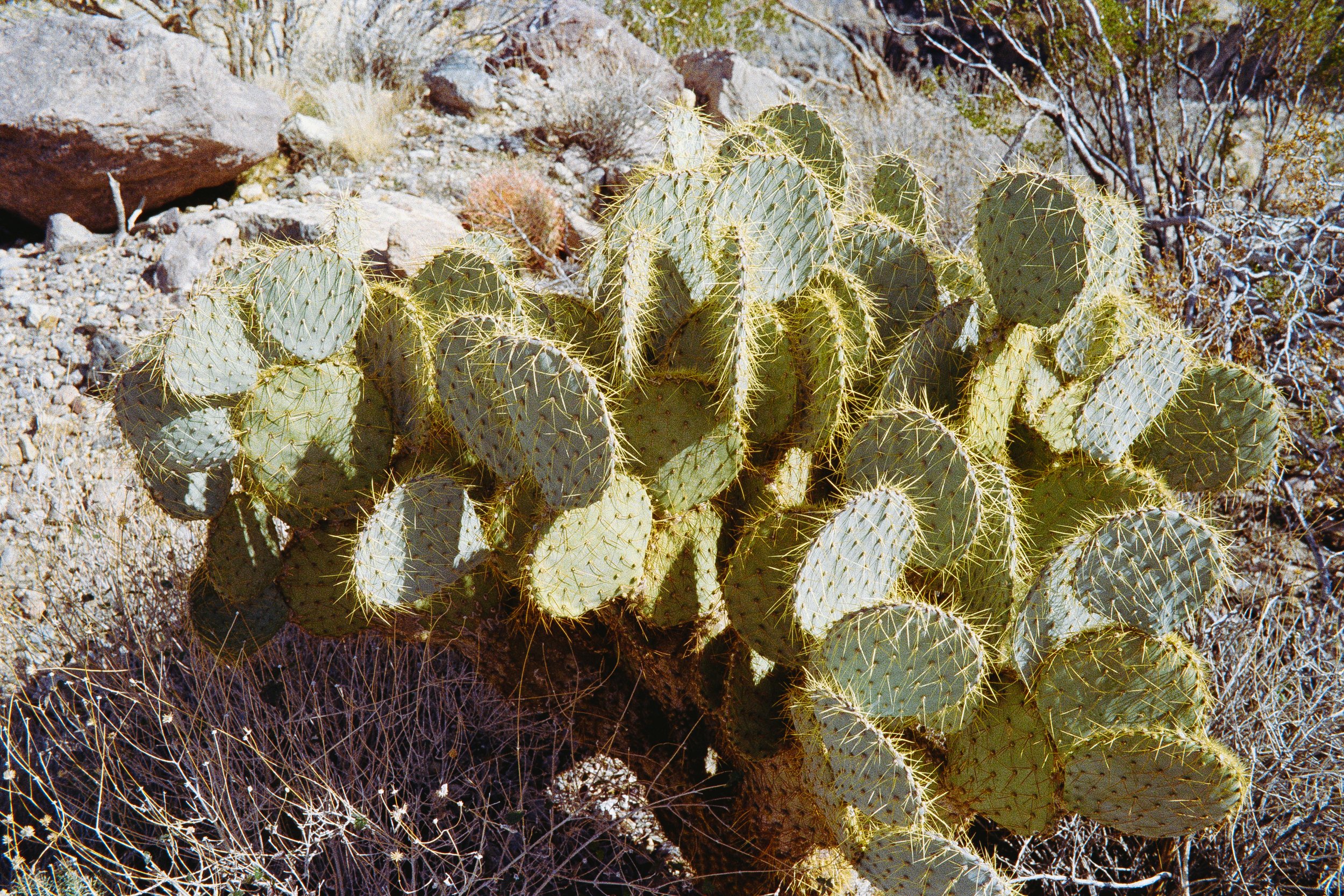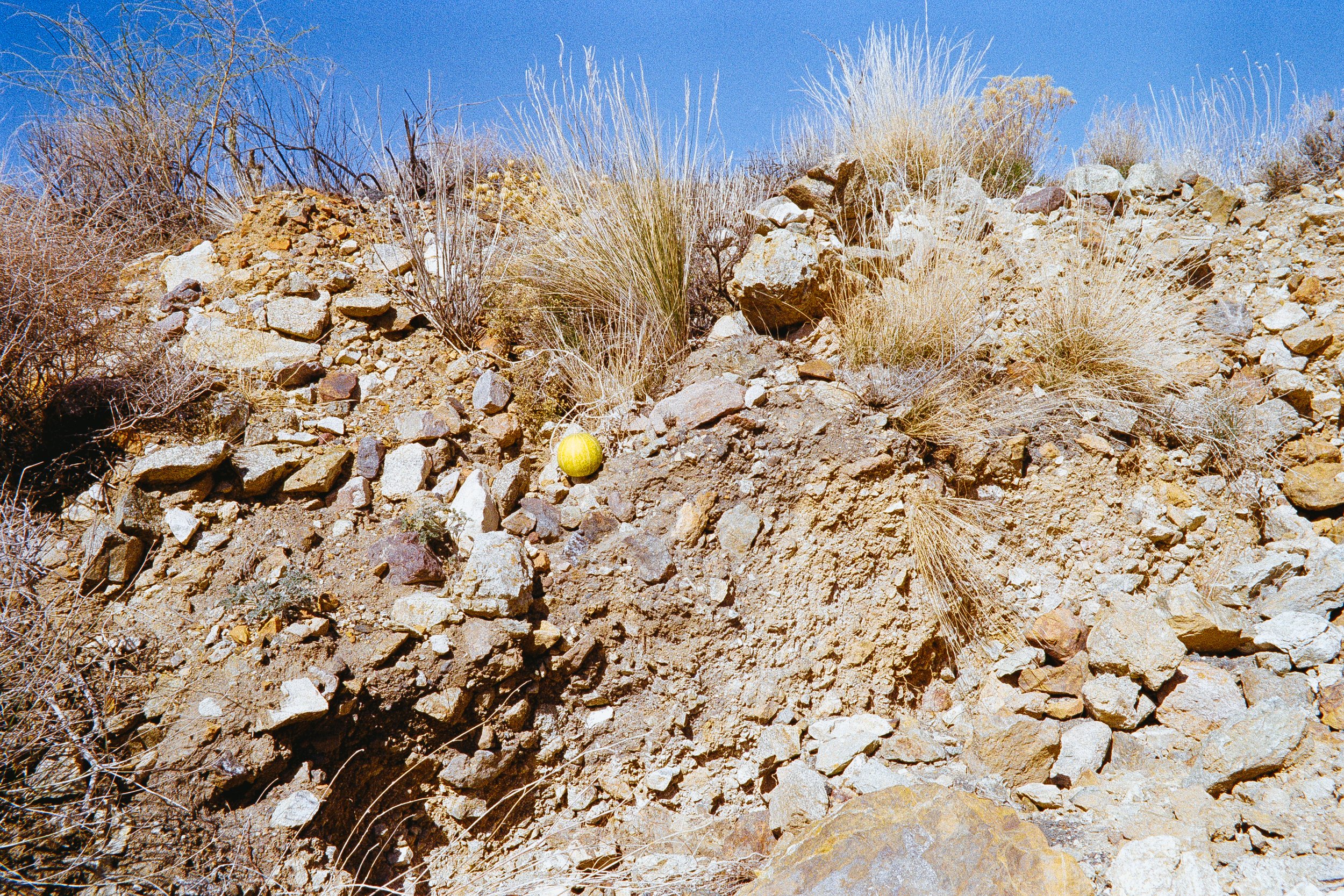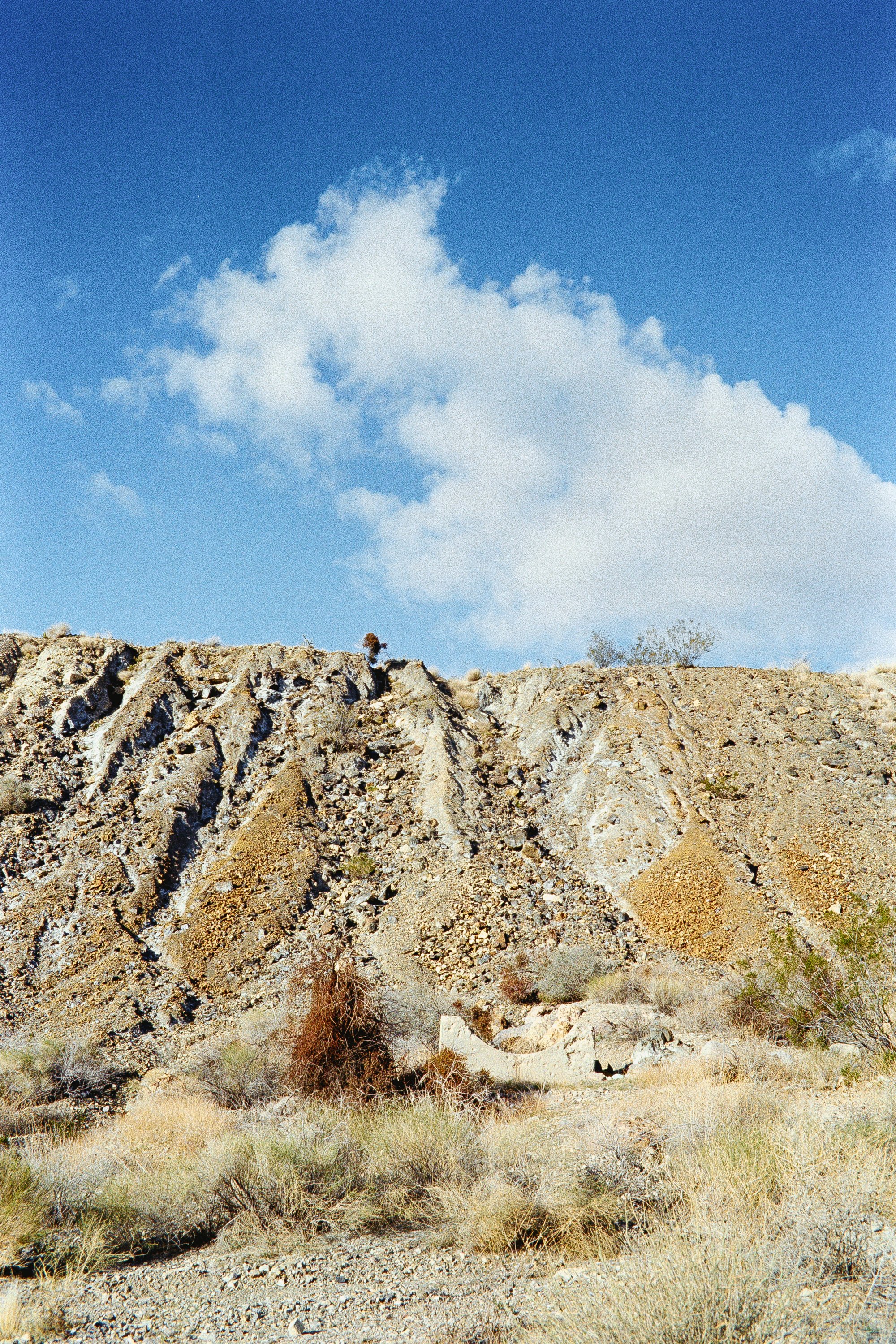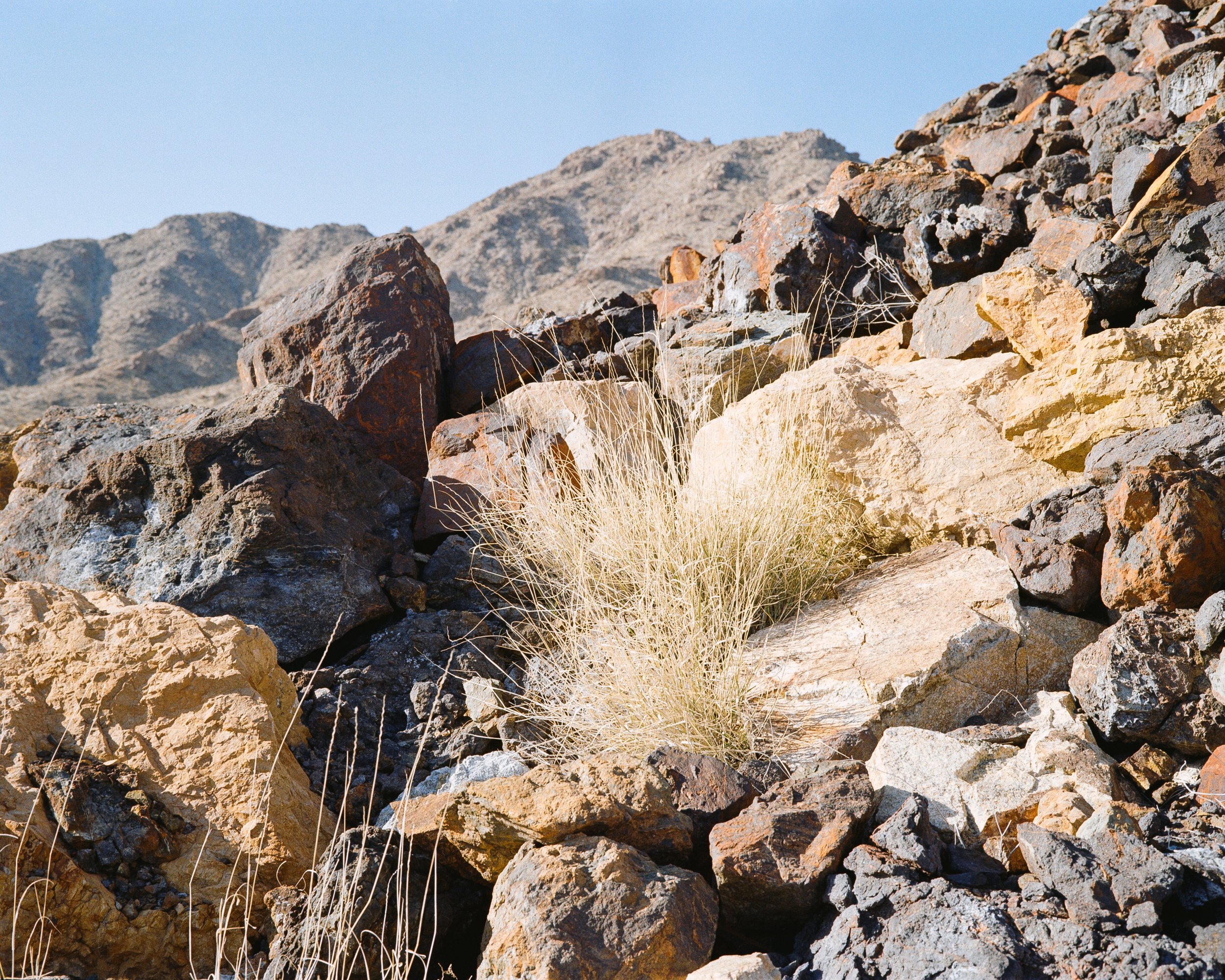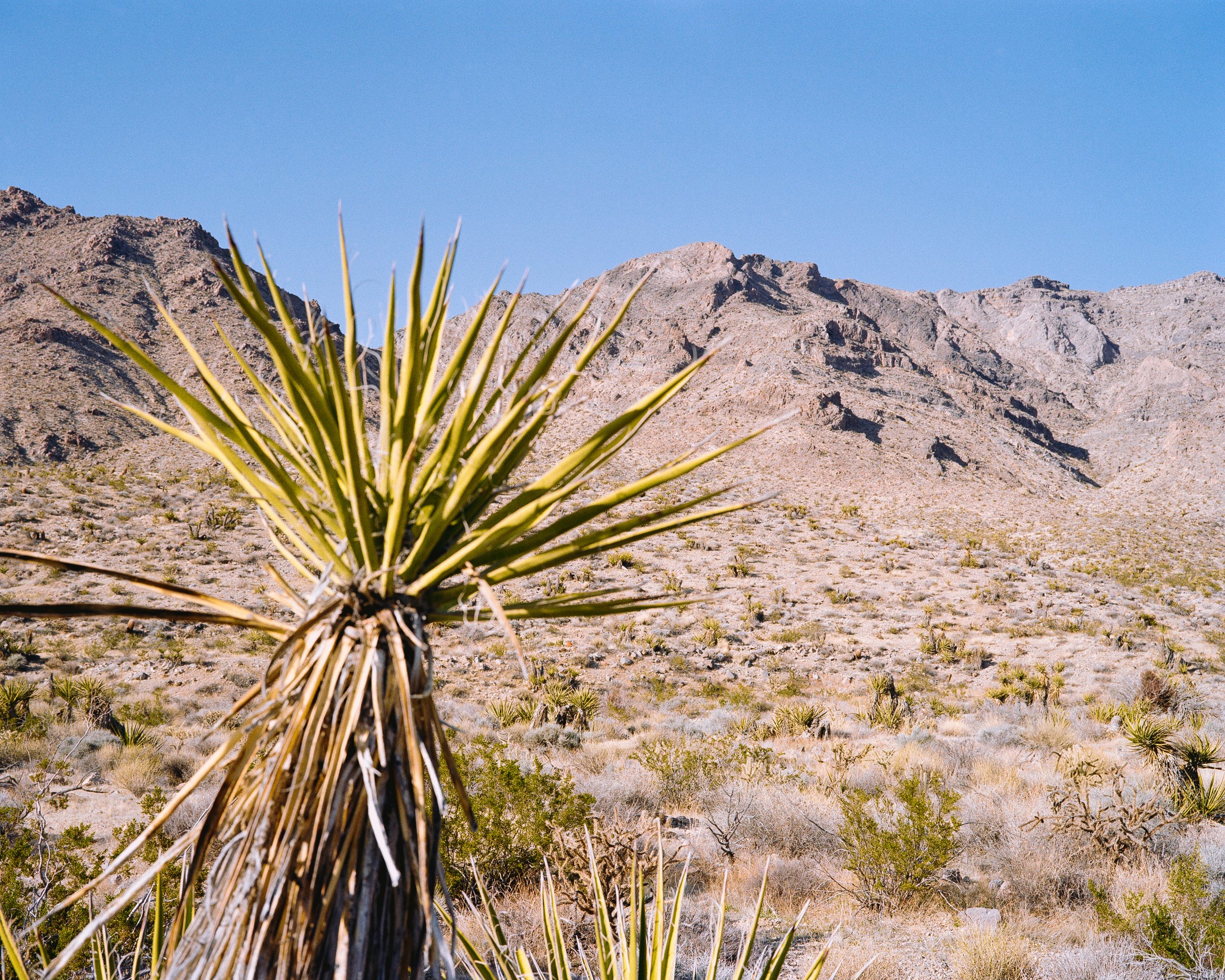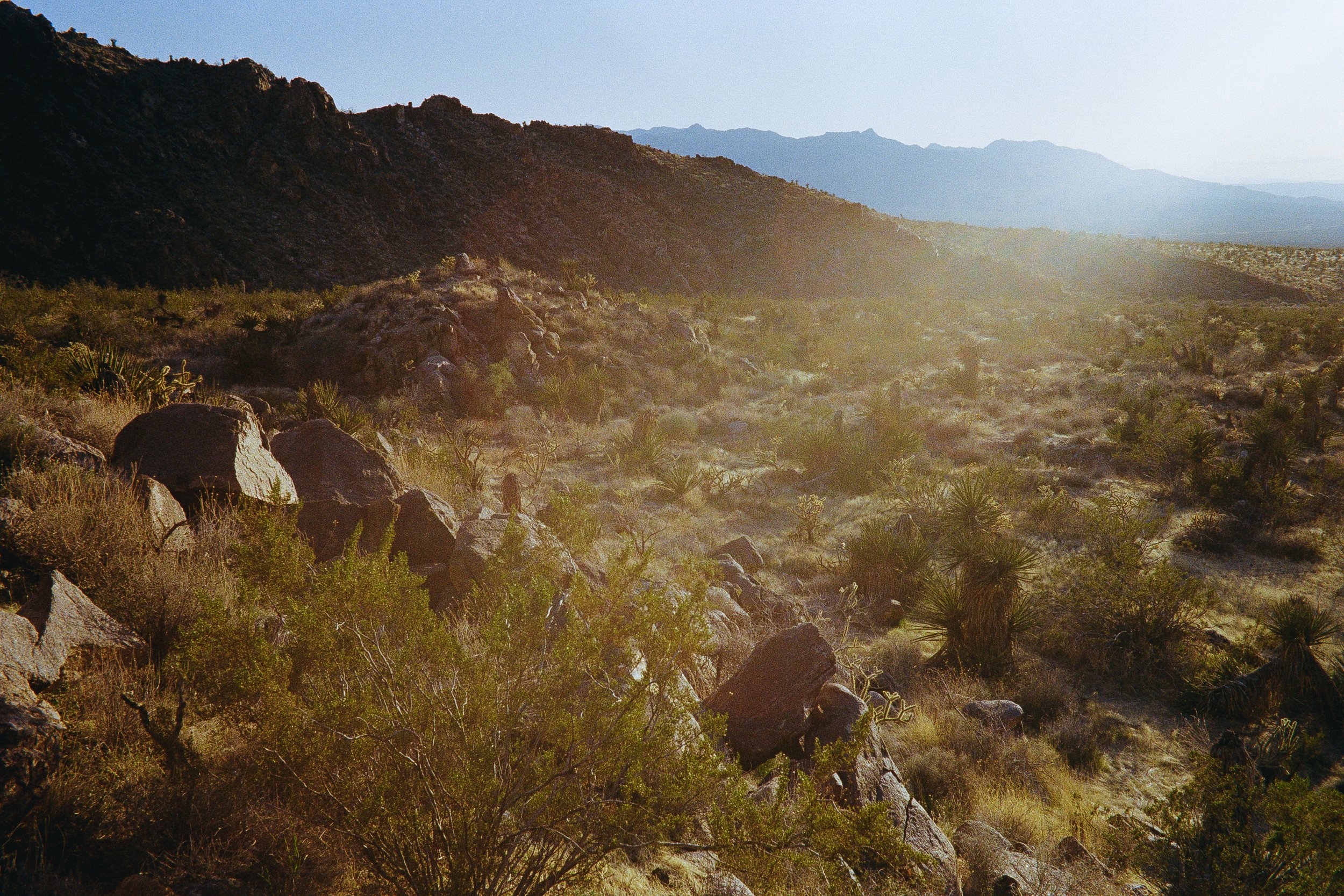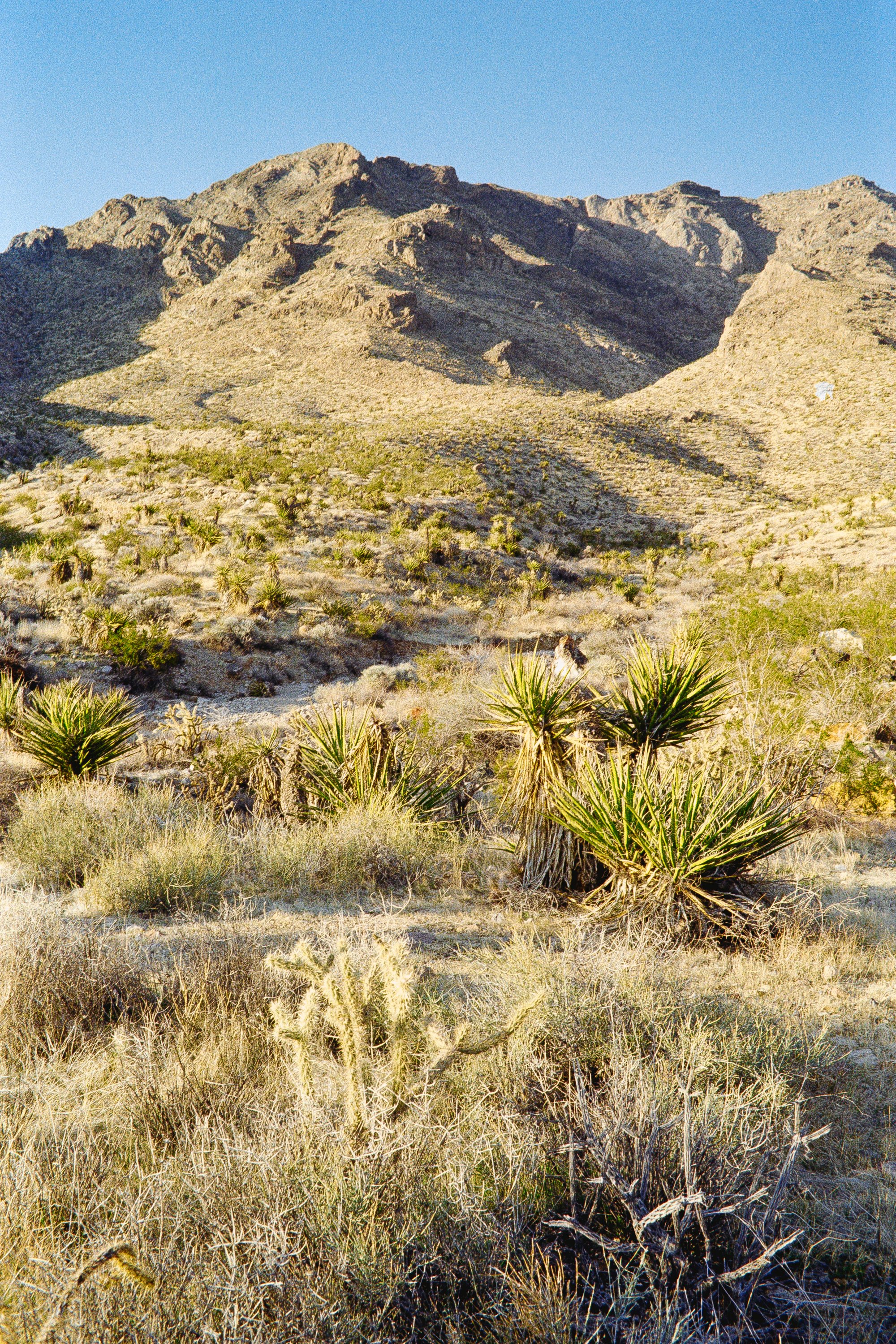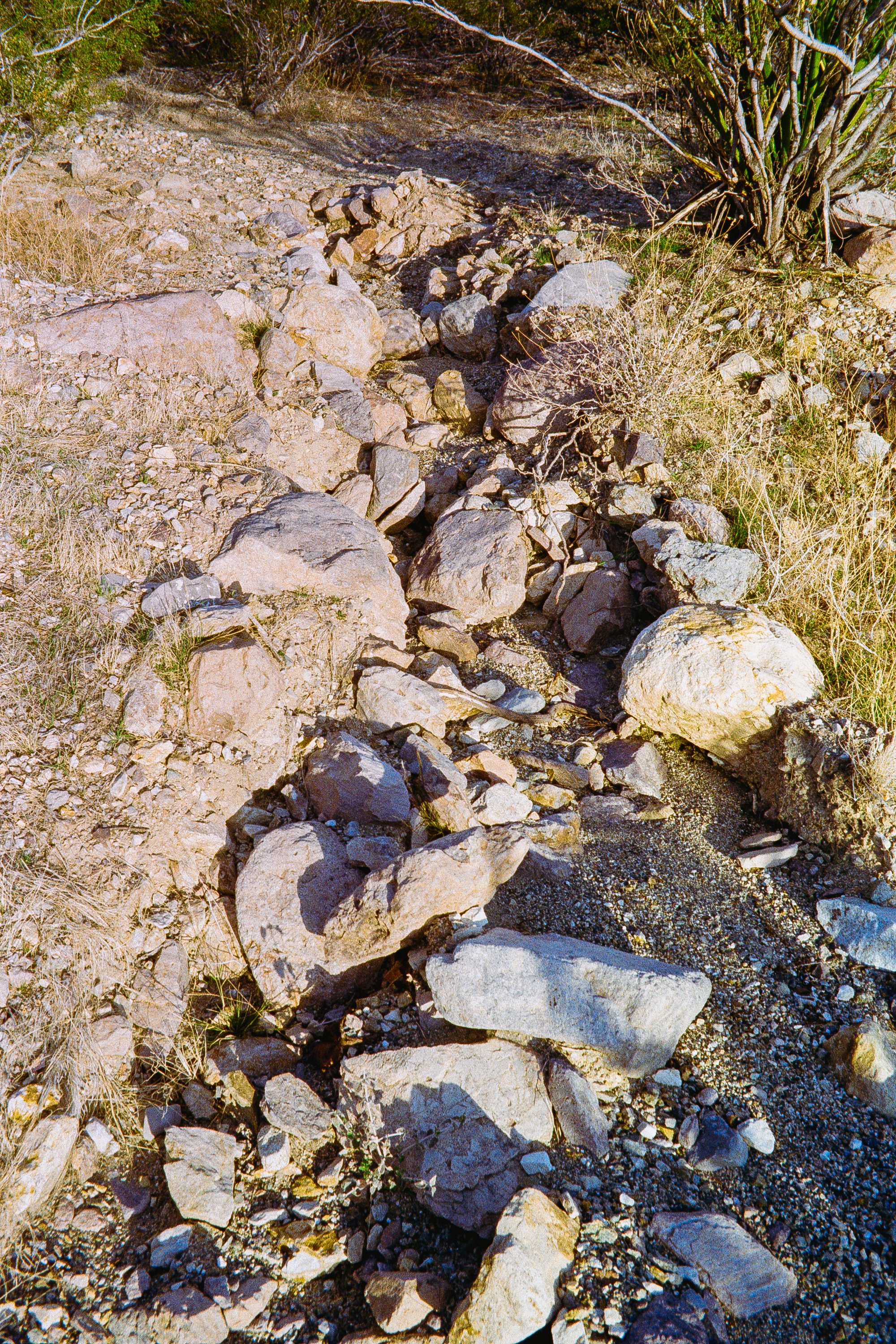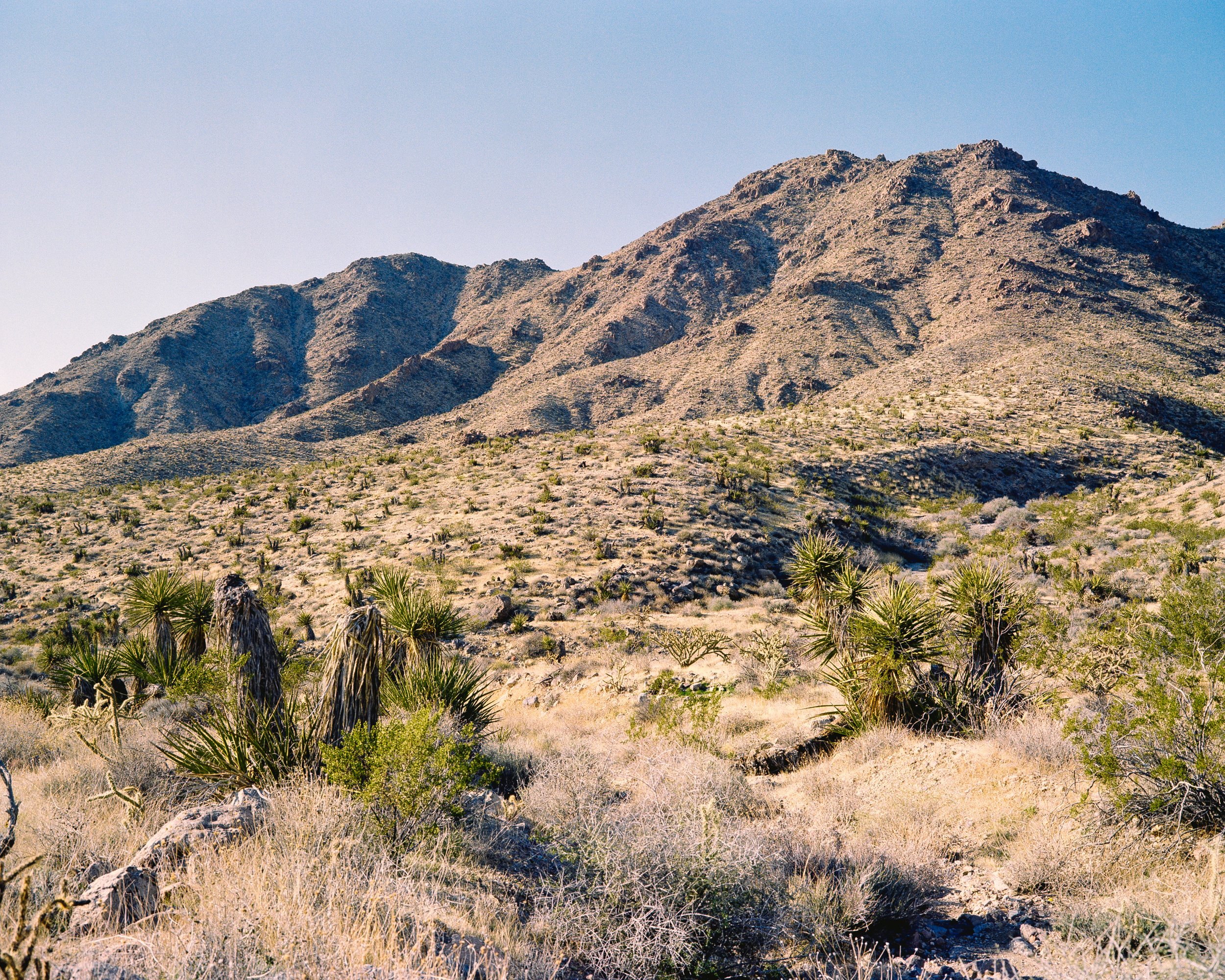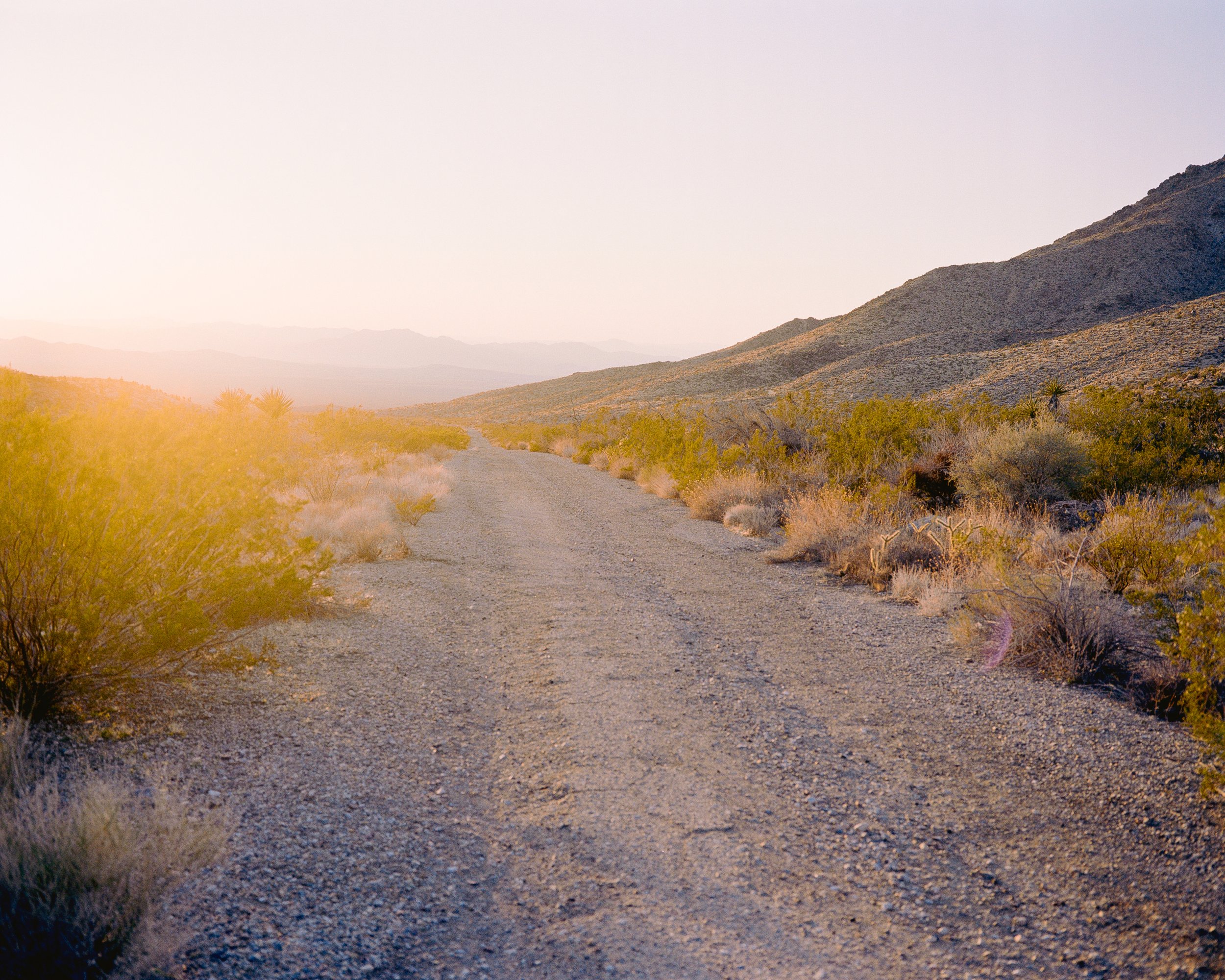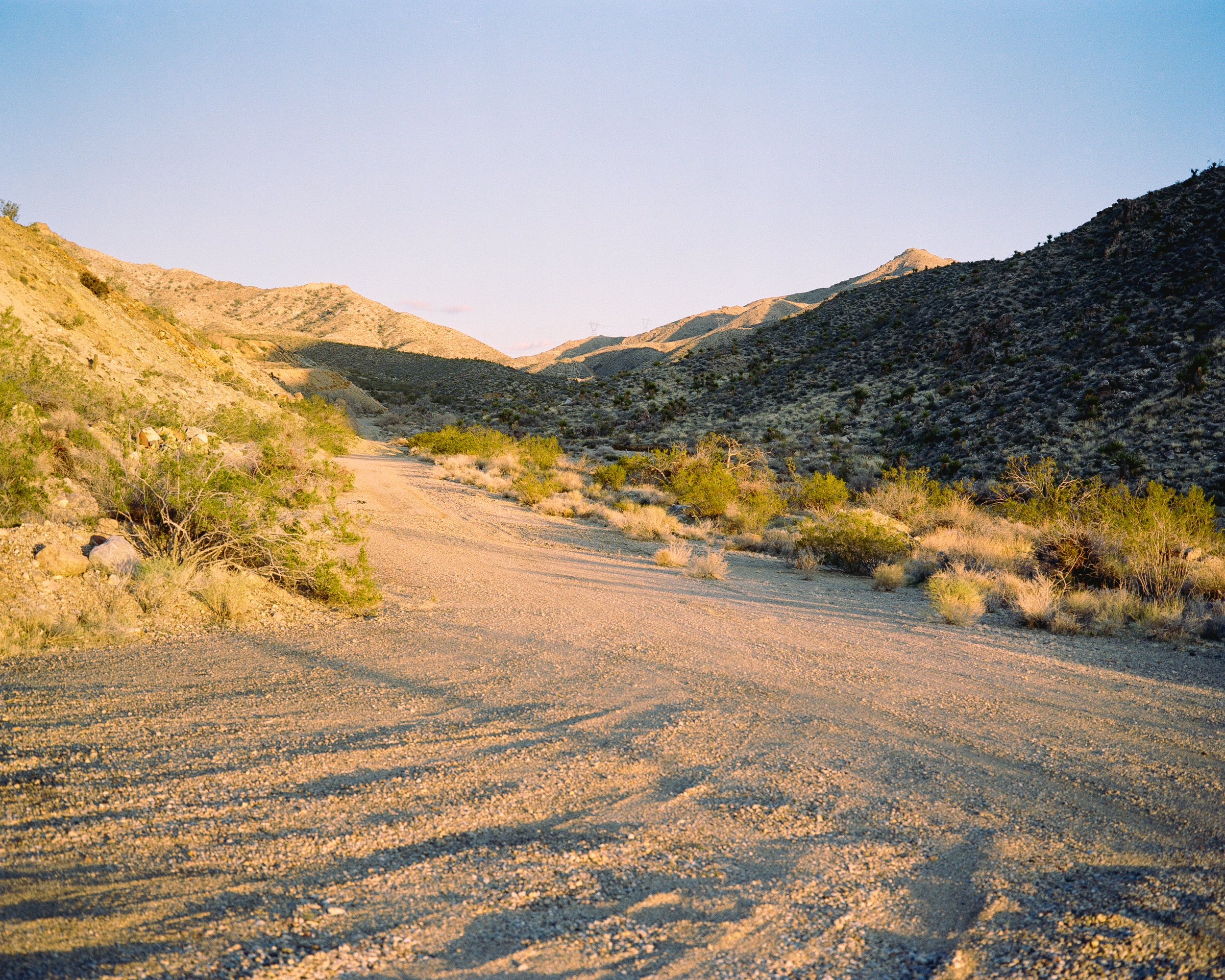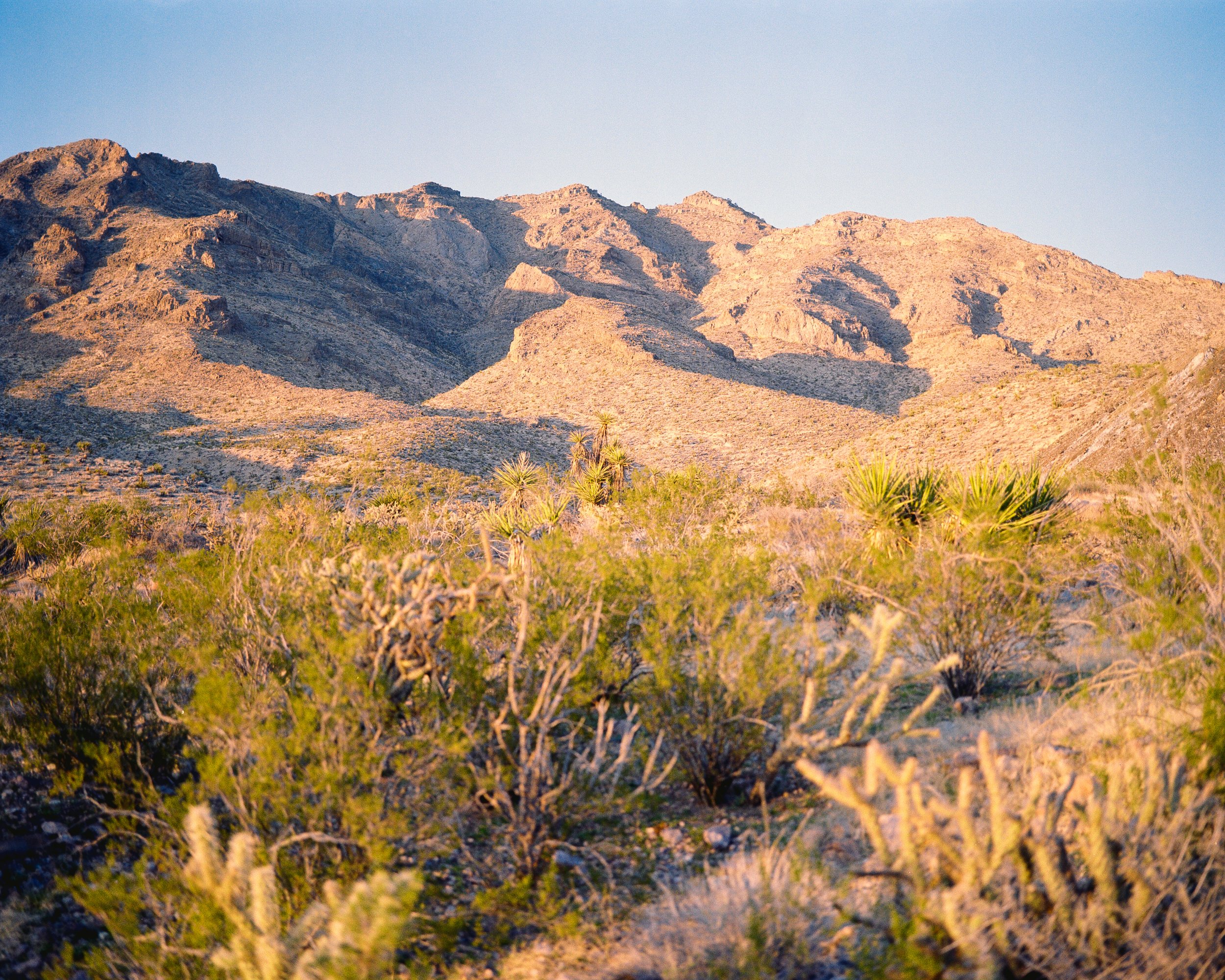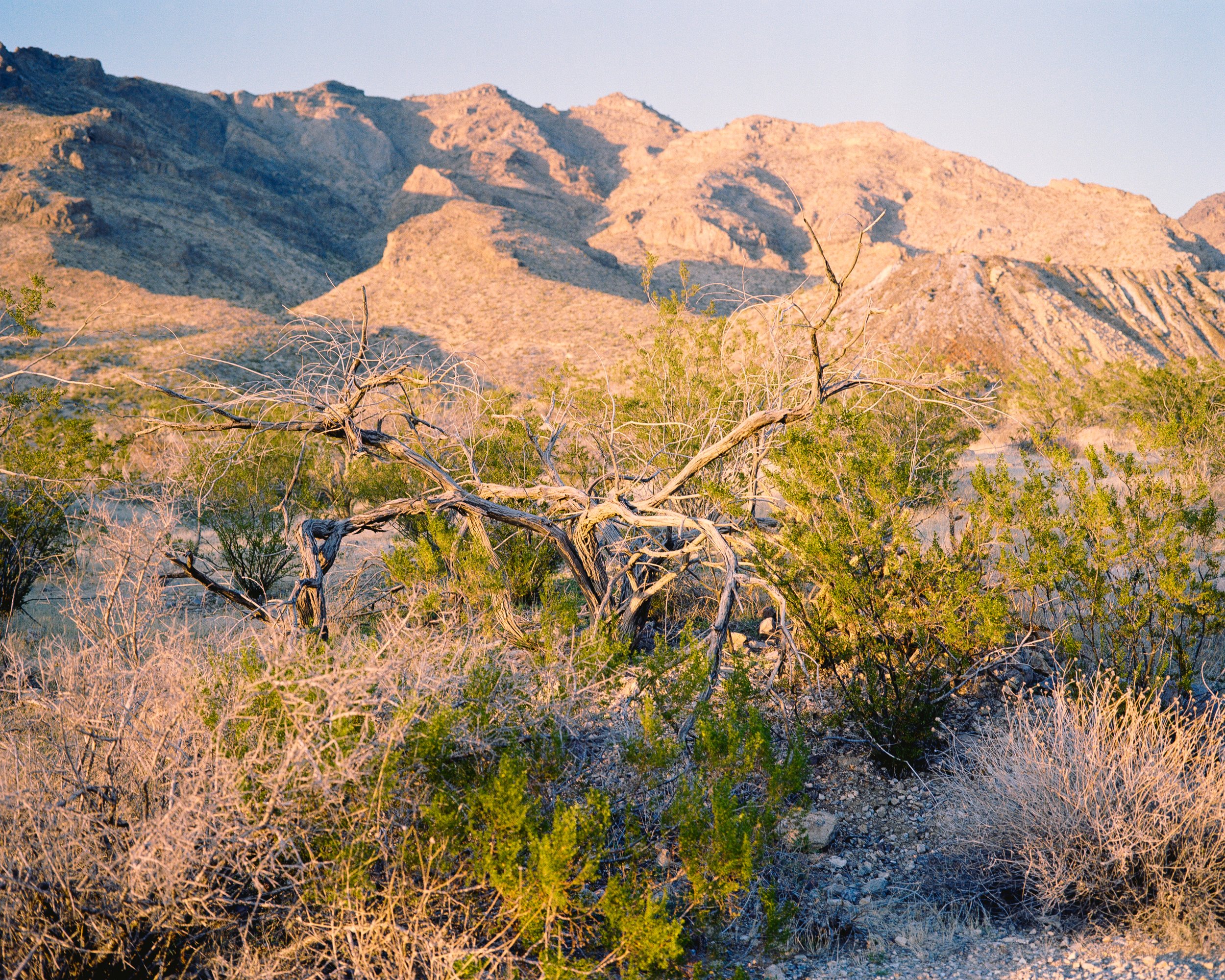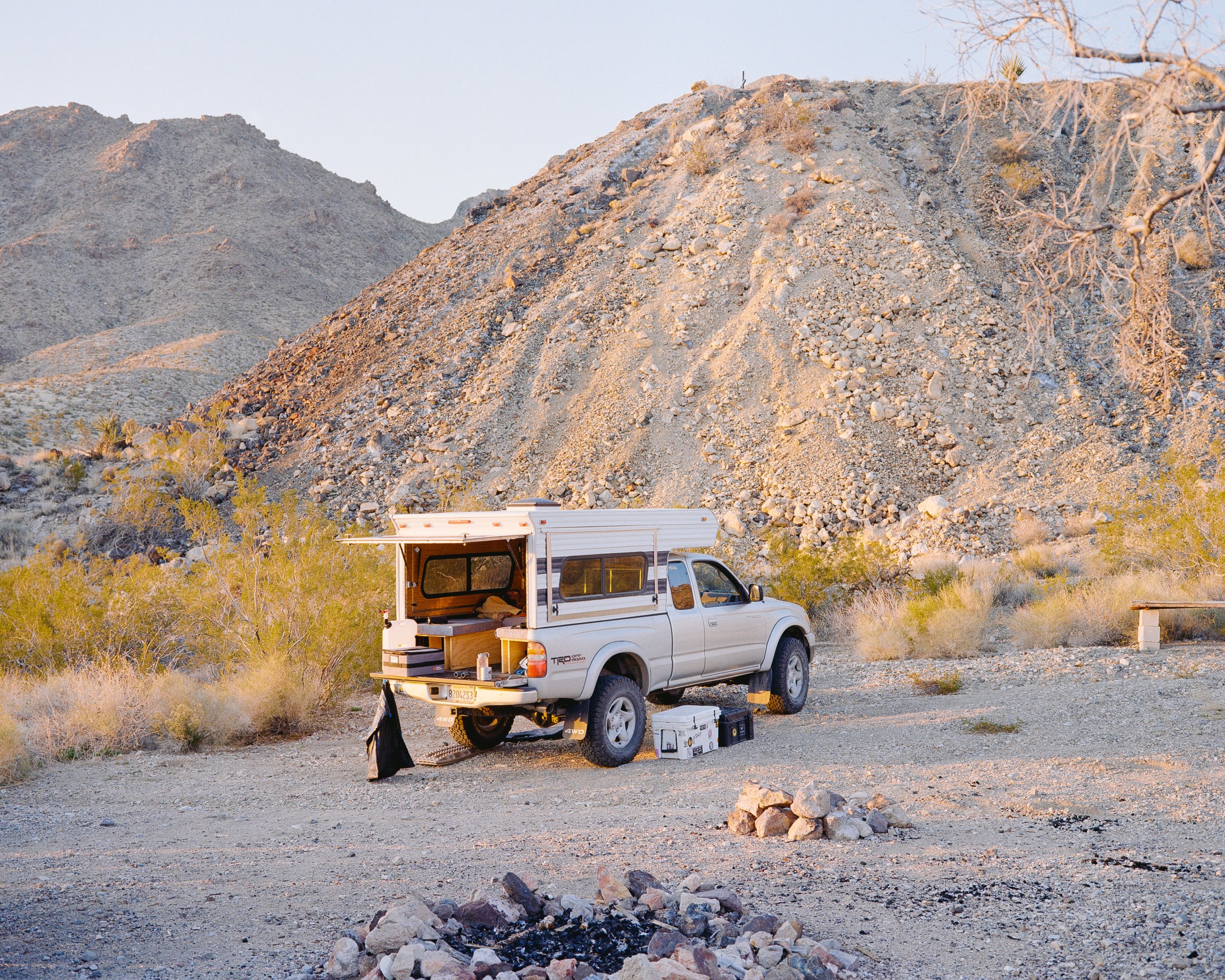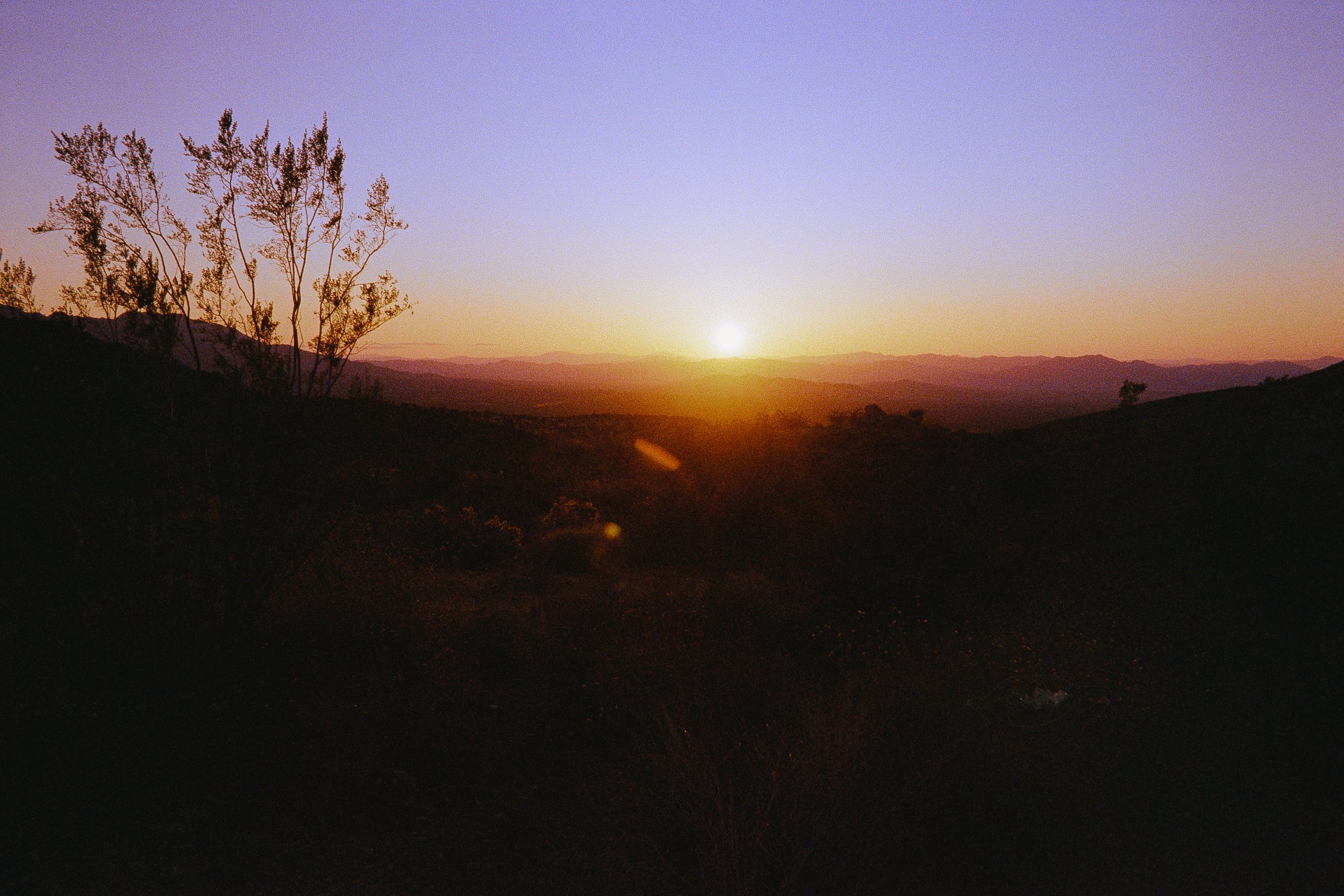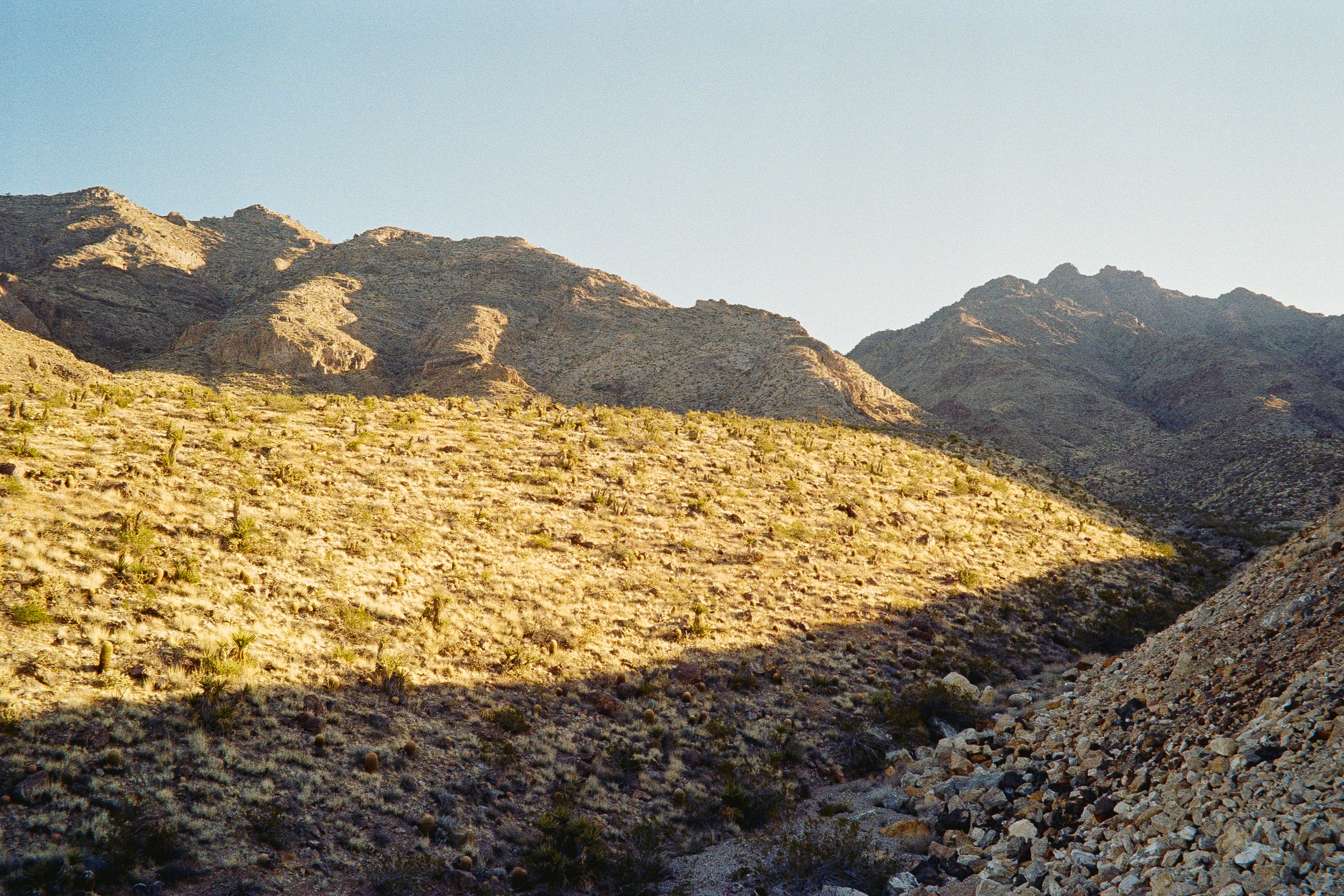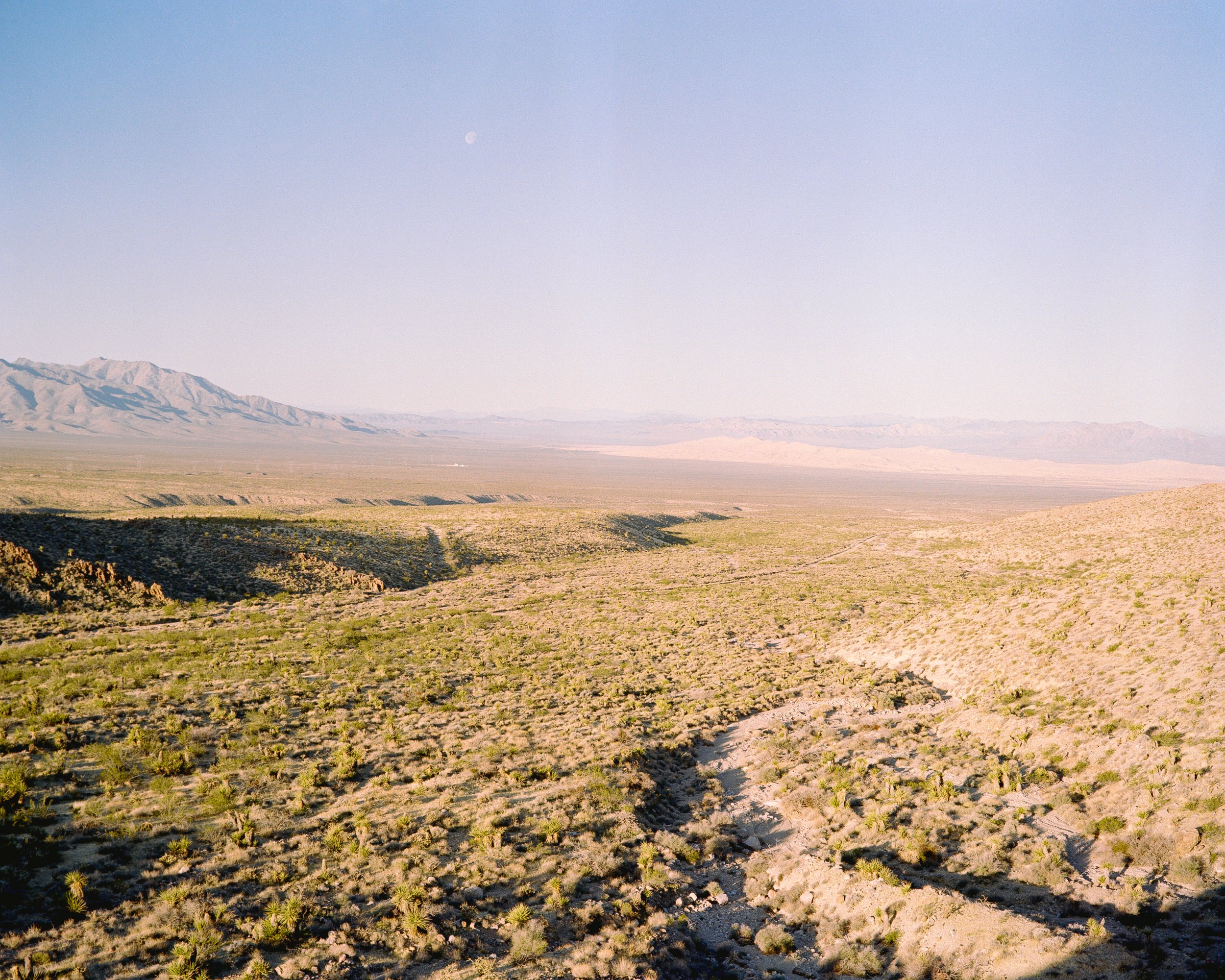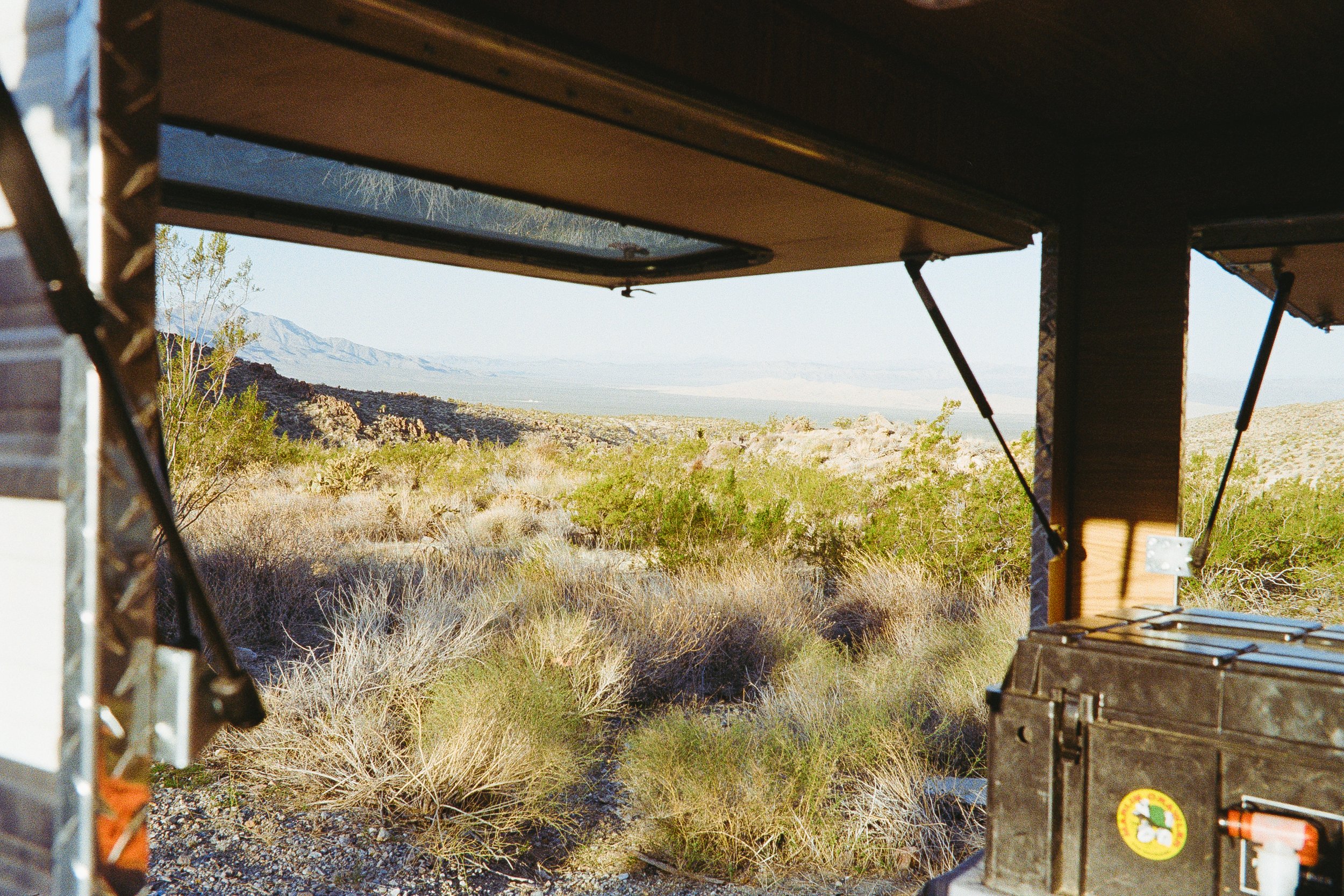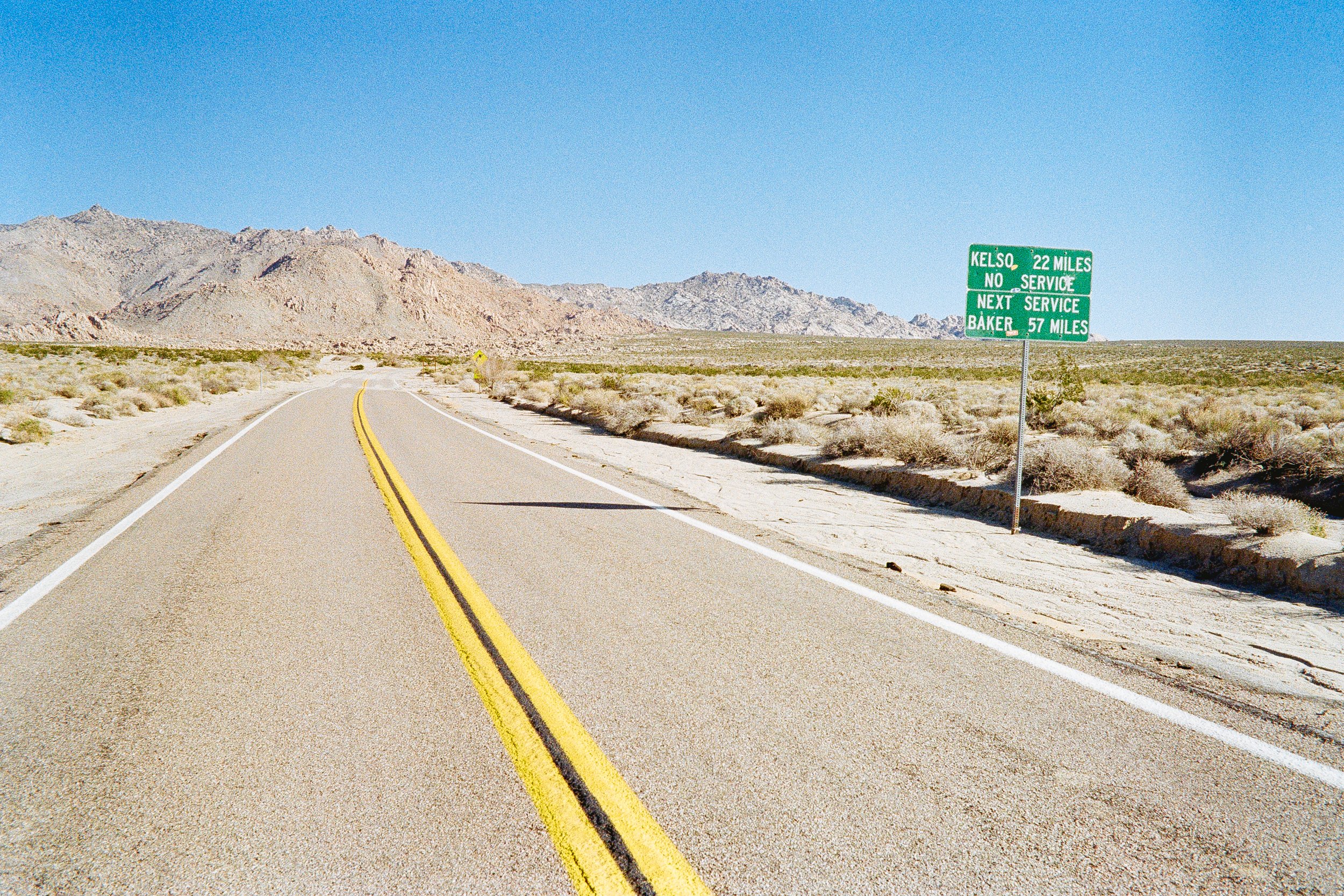Growth in the Mojave
Spending time in the stillness of the Mojave Desert in the months following a devastating wildfire that blazed through the area last year.
Cameras: Leica M6, Nikon FM-2, Mamiya 7
Films: 35mm; Kodak Portra 400, Ultramax 400, Colorplus 200. 120; Kodak Gold 200.
“Besides the water.” Mojave Indians named the desert Hamakhaave, a word with that exact meaning.
One of the four deserts in North America, the Mojave covers a large portion of Southern California, Nevada, and a sliver of Arizona. Yet, most people write this part of the Southwest off due to its aridity and a naively perceived “lack of life.” However, those who have spent just one night under the stars besides the Joshua Trees know how special of a place the Mojave is.
This federally owned land was established as a ‘National Preserve’ as part of the California Desert Protection Act of 1994. This law set aside portions of the Mojave Desert to be protected by the National Parks System. Along with this preserve, the act saw the establishment of Death Valley National Park as well as Joshua Tree National Park.
The York Fire
2023 saw the blaze of the York Fire ignite thousands of the Mojave’s main attraction, the Joshua Tree. These trees are native strictly to this region of North America, and the furthest from the Mojave you will find them is northwestern Mexico. The Mojave Preserve is also home to the largest concentration of these trees. However, 130 square miles of the preserve burned in the wildfire, killing a large number of the region’s fragile Joshua Trees.
It has been more than six months since the fire, and the burned portions of the area still resemble something out of an apocalyptic movie. The still-standing, charred Joshua Trees are like nothing I have seen before and sit with an eerie presence. The only things I could imagine relating them to are things I’d rather not leave you with an image of.
Growth
During my stay in the preserve, I passed through other, older fire zones dating nearly 20-years-old still showing signs of the burn. And while it will take decades, if not centuries, for this region to fully recover, change is often a necessity.
It is still yet to be determined if the York Fire began from natural causes, like a lightning strike, which set ablaze the 2020 Dome Fire just a few miles northwest.
The remnants of these fires has left the landscape looking quite bleak. Yet, it means growth is coming. It will take time, but in the end flora will grow back stronger and taller than before, and local fauna will then return. All we can do is make sure this wilderness is not lost or erased before that happens.
With a loaded down camper, and a dog ready to go run in the hills. We pulled off to camp just on the southwest border of the fire - in the safe, undamaged zone. We took off for a walk around the area, and after a quick and easy dinner it was an early night.
I was hoping to wake early for the sunrise and do some more exploring on foot, but the weather had other plans. Around 3 AM the winds really picked up and along came the cloud cover. While I was sipping on my morning cup of coffee, Rider was running around all the nearby rocks and playing in the dirt - he clearly didn’t care about any wind.
So, I packed up my backpack with a few liters of water, a couple of cameras, some snacks and the satellite messenger, and we set off to check out the surrounding area.
There aren’t any gas stations in the preserve, which is probably a good thing. This makes vehicular travel a bit challenging as you need to plan ahead to source out enough fuel to get where you want to go. This means that without any auxiliary gas tanks, or even a reliable way to carry extra fuel, I didn’t have the luxury to drive wherever I wanted all day to explore. Instead, I was limited in range and was “forced” to do most of my exploring on foot.
I put “forced” in quotes for a reason - this is certainly the best way to explore. Sure, a car makes for a nice base camp and a convenient way to get out to places like this, but we didn’t build it to drive all day. The camper is designed to get us out there, and then stop and set off on foot or bicycle where we are free to feel the rocks below us, free to get drenched in a downpour, free to get bit by a rattlesnake hiding under deadfall.
Another note on the no gas in the preserve being a good thing. I have absolutely no problem with people who enjoy recreational driving and four-wheeling, when done responsibly - which unfortunately seems to be getting rarer by the day. But this natural gatekeeper keeps a lot of the people out who might typically be the ones without a care in the world, driving too fast, leaving trash and camping where they shouldn’t, and instead invites only those willing to put in the effort required to plan where they can travel and how they will do it with limited fueling options.
We returned back to the camper and packed up to head out in search of a new campsite in a different part of the preserve. But yes, we of course needed to find gas before pushing on further. So, we made our way out to the north and east along Interstate-15 and filled up at the Nevada border.
We found camp that night at the base of a large granite boulder pile and made a simple plate of spaghetti before climbing into the camper for the night.
For the first time on the trip, the clouds began to part that morning and as the sun warmed me while I drank my coffee, I could almost forget the penetrating wind we were pelted with over the last two days.
Stillness
On trips like this, I often find myself moving from campsite to campsite each day. Although I typically do not travel too far between days, I enjoy finding and seeing new scenery daily.
Because of this, we packed up early that morning and made our way to the southern end of the preserve. After a pit stop at the Kelso sand dunes, camp that night was below the once-booming Vulcan Mine at the foot of the Providence Mountains.
When the winds are calm, the desert presents itself with a stillness like nothing else. Maybe the lack of the abrasive gusts that often flow through these regions in some ways enhances this stillness.
While hiking with Rider around our camp I pulled the binoculars up to my eyes to simply sit and view the landscape. Miles of hills dotted with standing Joshua Trees and bushy Creosote, everything sits motionless together in unison, and so was I.
Stillness is something that doesn’t come often here in the city of Los Angeles, but it is easy to be reminded of its importance just a short drive out of town. The tranquility of just being is a powerful feeling, and one I believe many people cannot drive themselves to feel. With a cell phone in our pockets often buzzing with messages from friends, or work, calling for you to do anything to fill your time, it can be hard. However, this stillness allows one to think. A moment of pause just for you - no distractions other than wonderment.
The Vulcan Mine we were camped at that night was abandoned in 1947, but in years prior it, and many others in the Mojave, was a successful, large scale mine that extracted and shipped 2,500 tons of iron ore daily out of Kelso Depot.
This dichotomy between the modern day wilderness-loving traveler and the Earth-destroying miners from centuries prior is quite apparent. While the landscape left behind from these operations is typically a bit painful to look at, without them we would never have the roads we travel on.
The rough, 4x4 double tracks that cut in and out of canyons throughout this country all led somewhere at one point. And more often than not, this was to some sort of mine, or potential mine. Of course today, mines like these are far less common than they once were as we have shifted our ideas of what is considered a ‘valuable resource.’ The unfortunate product of this is the incredibly inhumane working conditions in places like the lithium and cobalt mines of Africa.
With only half a tank of fuel remaining in the truck, the next morning I packed up and made way back toward Hwy-40. After three nights under the theater that is the desert night’s sky, I was finally back out and on my way back to the city. The shoulder season makes for the perfect time to get out into the Mojave. Temperatures are perfect during the days, and very manageable at night. And coming from Los Angeles, less than four hours away, the Mojave Desert makes for a great place to get out and think.
As always - thanks so much for reading. Please feel free to leave a comment below or use our contact form to get in touch!

